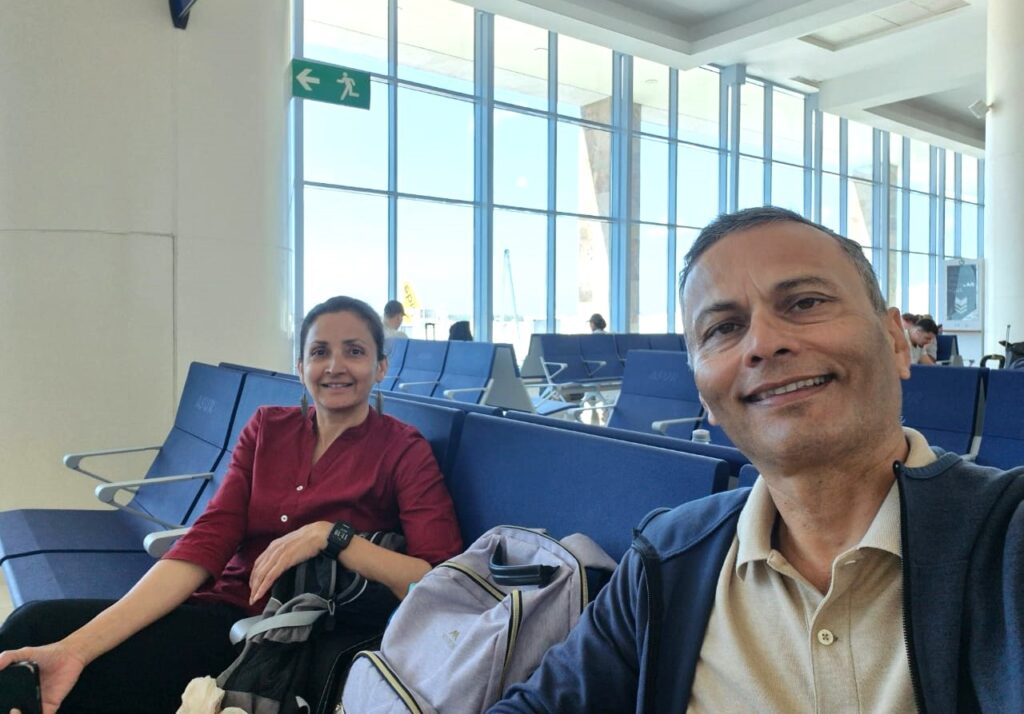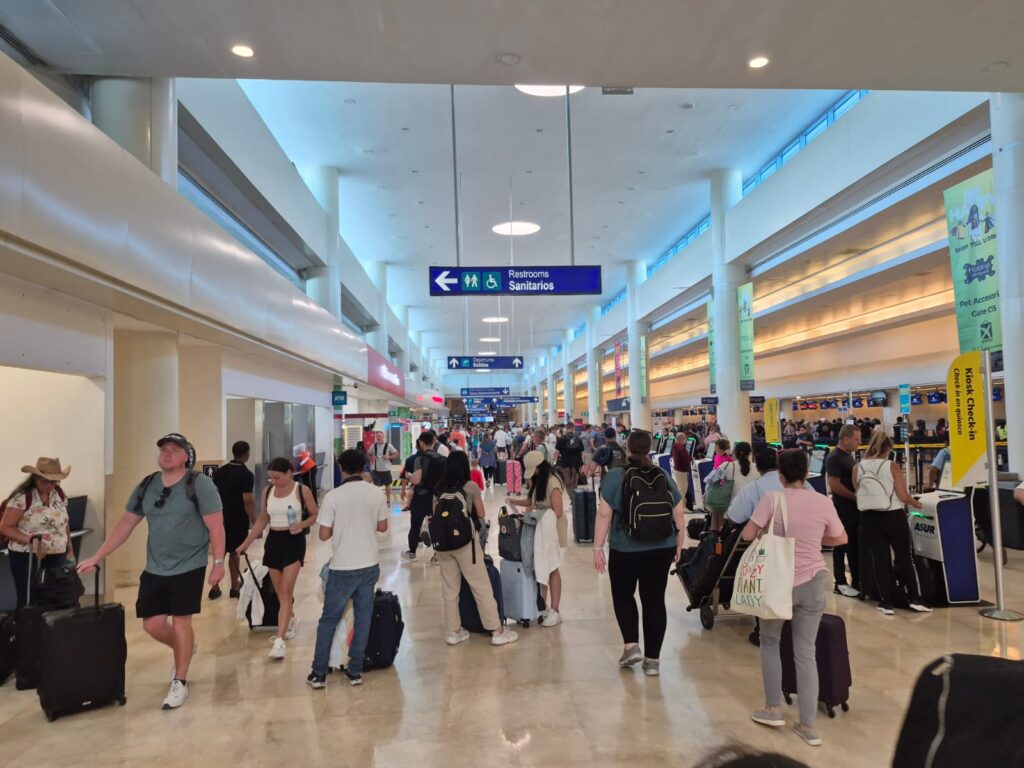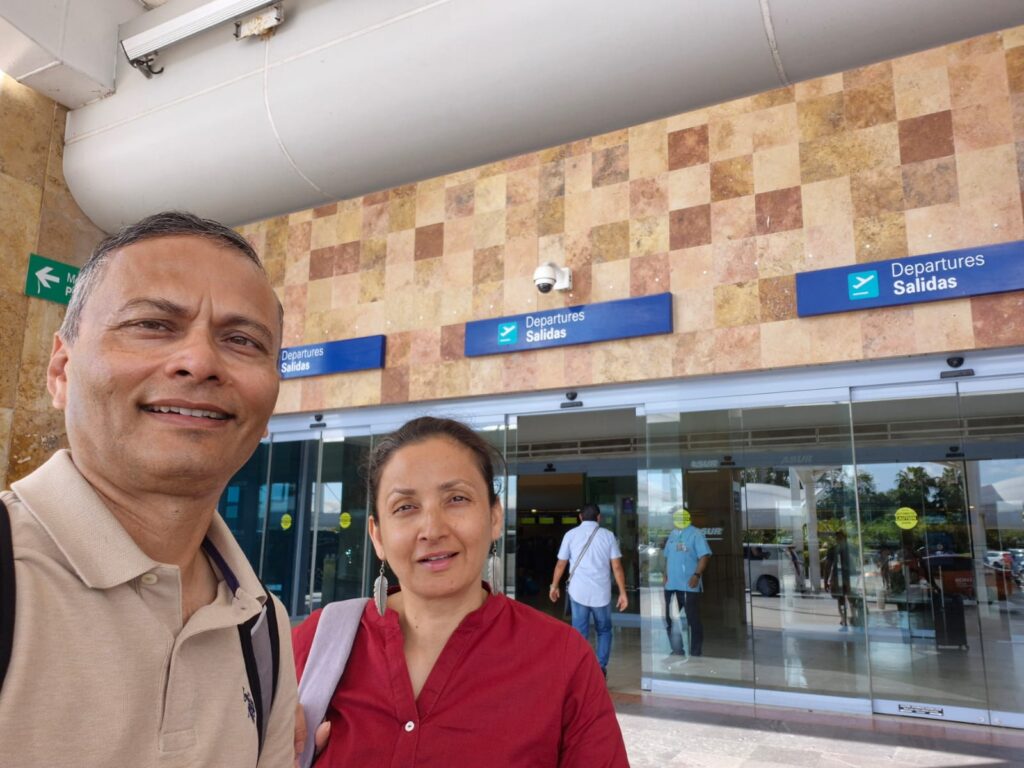May 22 to May 31, 2025 | Samir, Anu, Sahil, Aditya
Day 0: Thursday, 22 May
Our 31st wedding anniversary began in transit — from Shanghai to Dallas to Mexico City. A long journey, but a meaningful one. Sahil met us in Dallas and again at our final destination, while Aditya joined us in Mexico City. The joy of reunion and anticipation of discovery made for a very special anniversary arrival.
Day 1: Friday, 23 May
The day started gently. Around 10:30 am, I walked to the local Friday Farmer’s Market — a colorful spread of fresh fruit, juices, and handmade snacks.

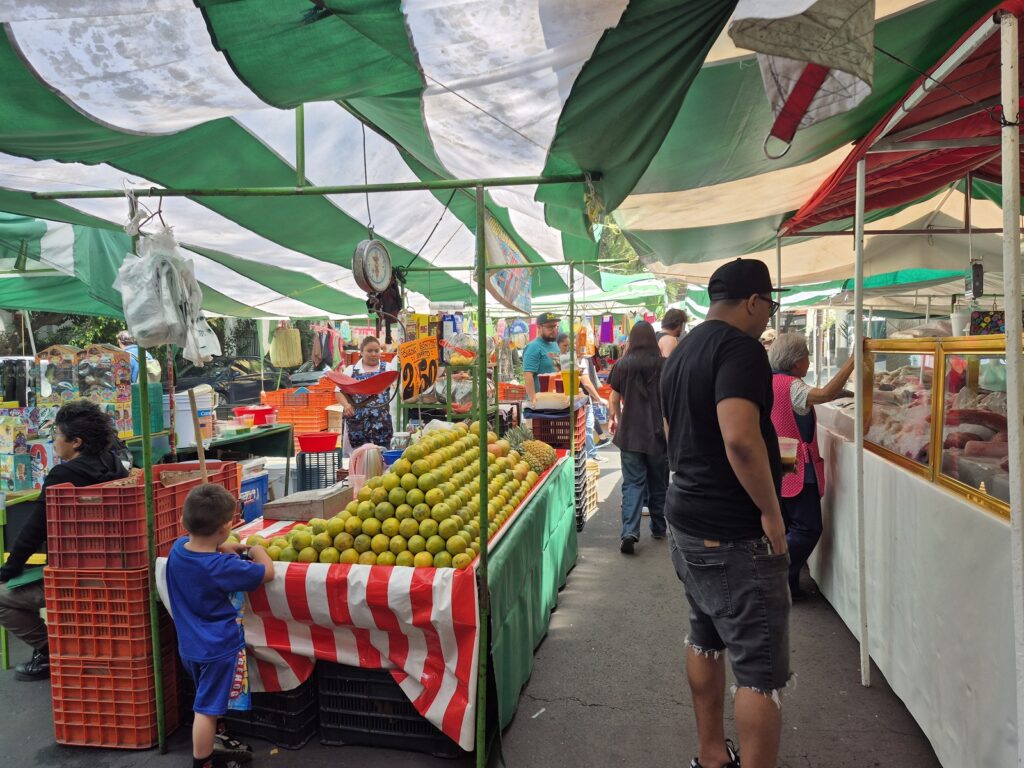
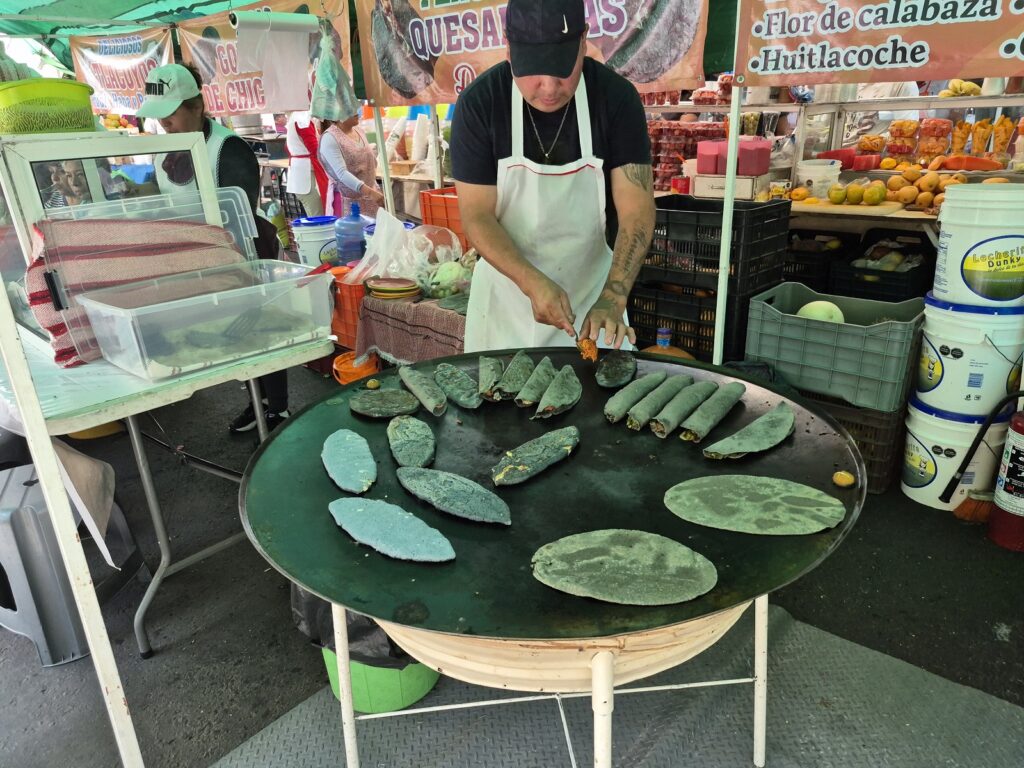
I found a stall where they were preparing Gorditas — thick masa cakes — and they kindly made us a veggie version, filled with beans and salsa, hot off the griddle.
By 3:00 pm, Sahil and I were at the Museo Nacional de Antropología, one of the most impressive museums we’ve visited. With soaring halls and lush courtyards, the museum explores the cultures of pre-Hispanic Mexico — from the Olmecs to the Zapotecs, Mayans, and Aztecs. Grand stone sculptures, intricate codices, and ceremonial masks told the story of Mexico long before the Spanish conquest.
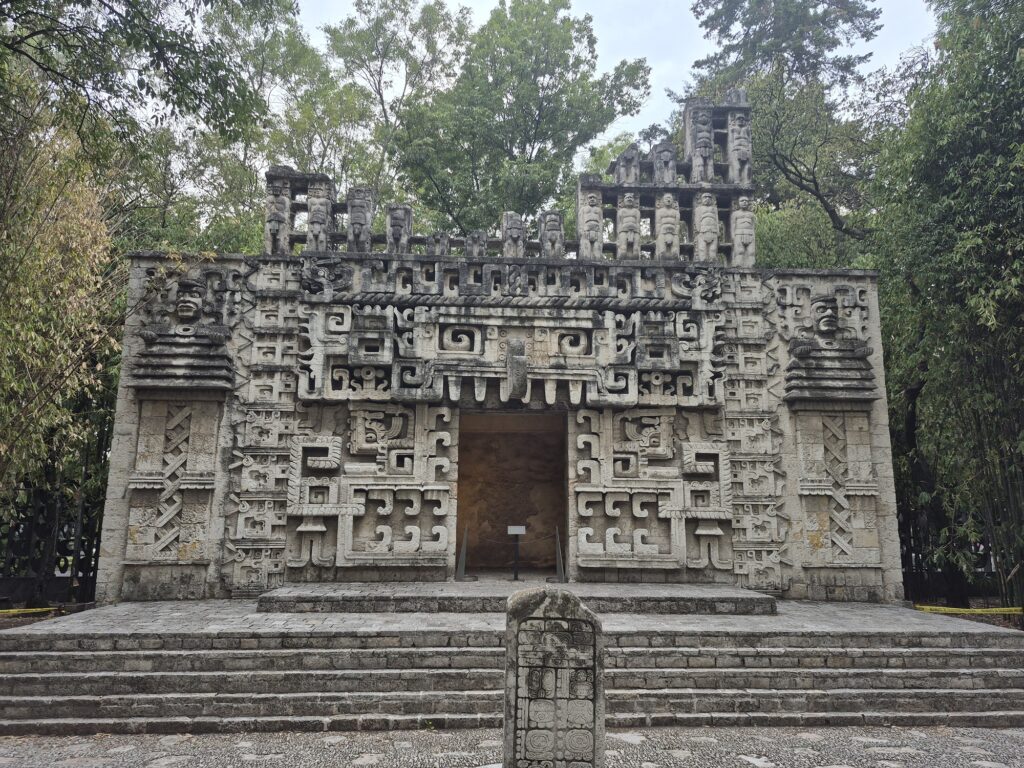
Located in the heart of Chapultepec Park, the Museo Nacional de Antropología is one of the most important and comprehensive museums in Mexico and Latin America. It houses the country’s most extensive collection of pre-Columbian artifacts and is a true gateway into the ancient civilizations of Mesoamerica—like the Aztec, Maya, Olmec, and Zapotec.
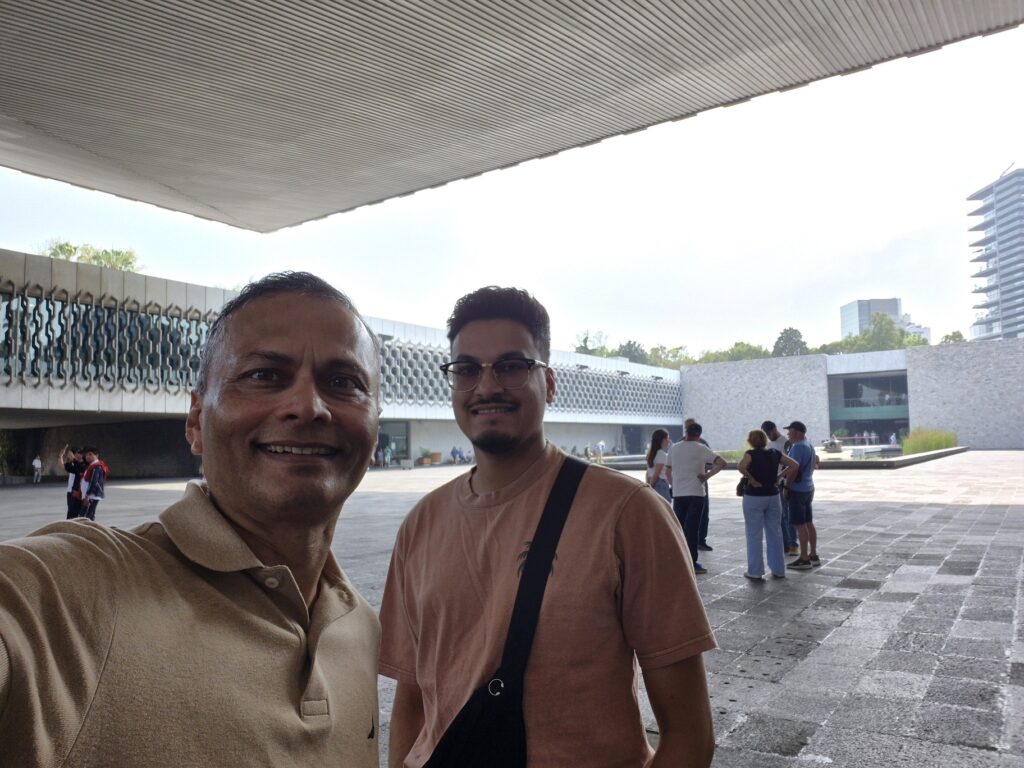
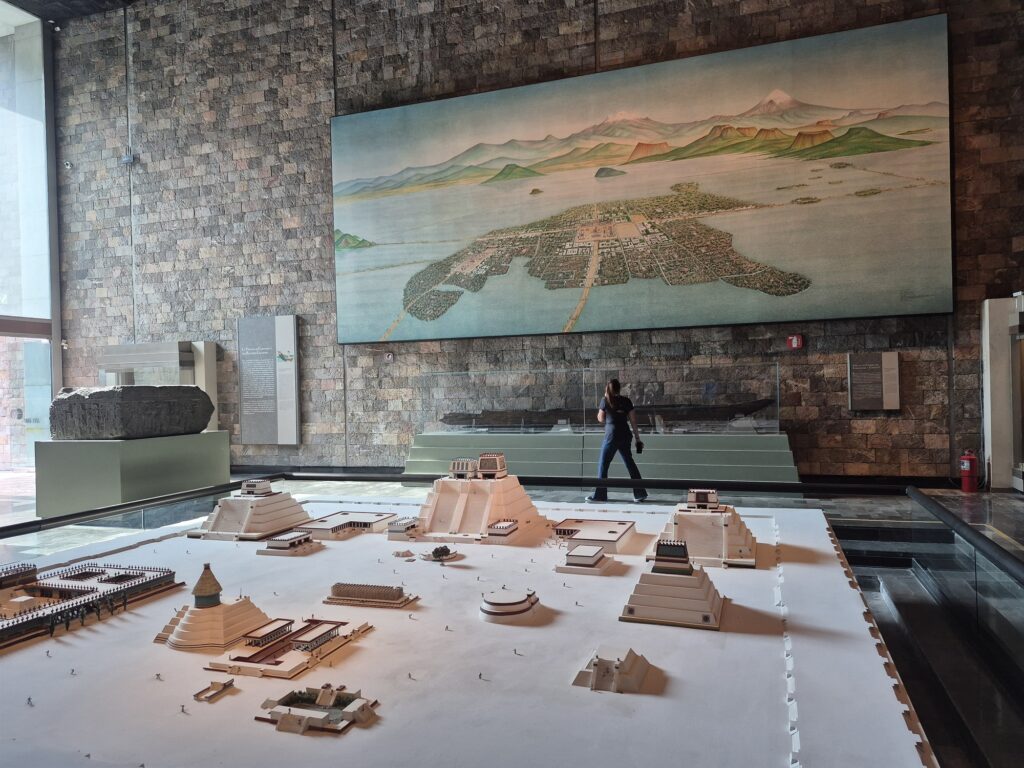
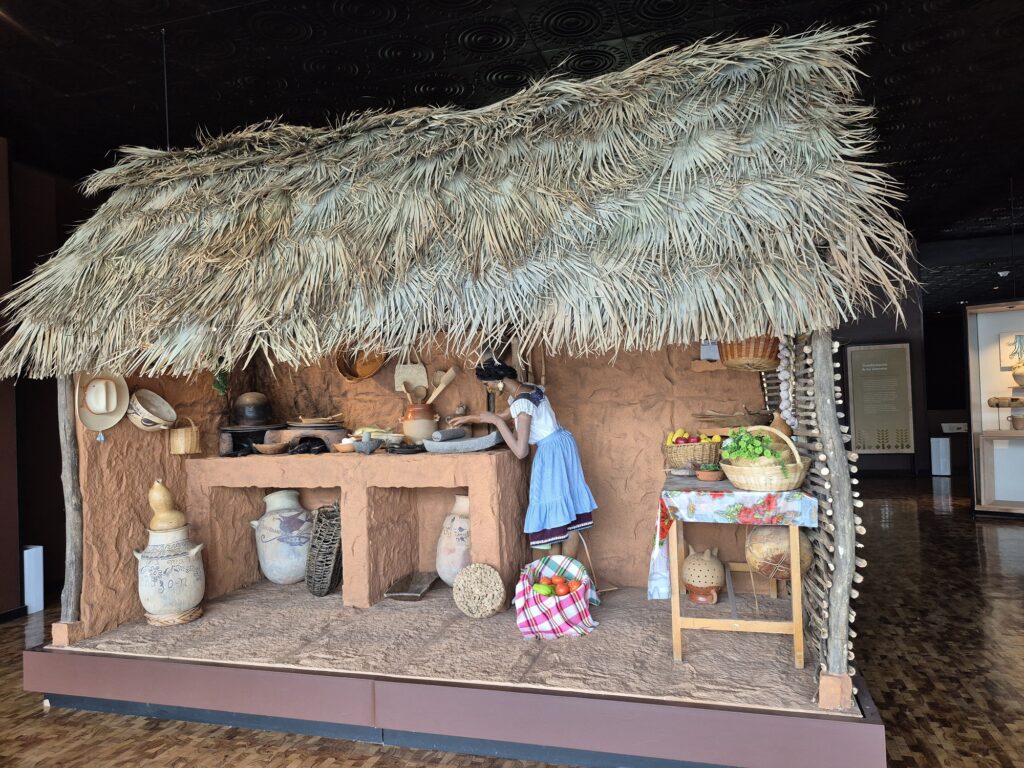
The museum’s iconic Umbrella Fountain (El Paraguas) welcomes visitors into a vast space filled with treasures. One of the most famous exhibits is the Aztec Sun Stone (Piedra del Sol), an intricately carved basalt monolith that once lay buried beneath Mexico City. The museum also features stunning reconstructions of ancient temples and life-sized models of indigenous dwellings.
Each gallery is dedicated to a different civilisation or period and includes everything from jade masks and stone stelae to gigantic statues like that of Coatlicue, the Aztec goddess of the earth and fertility.
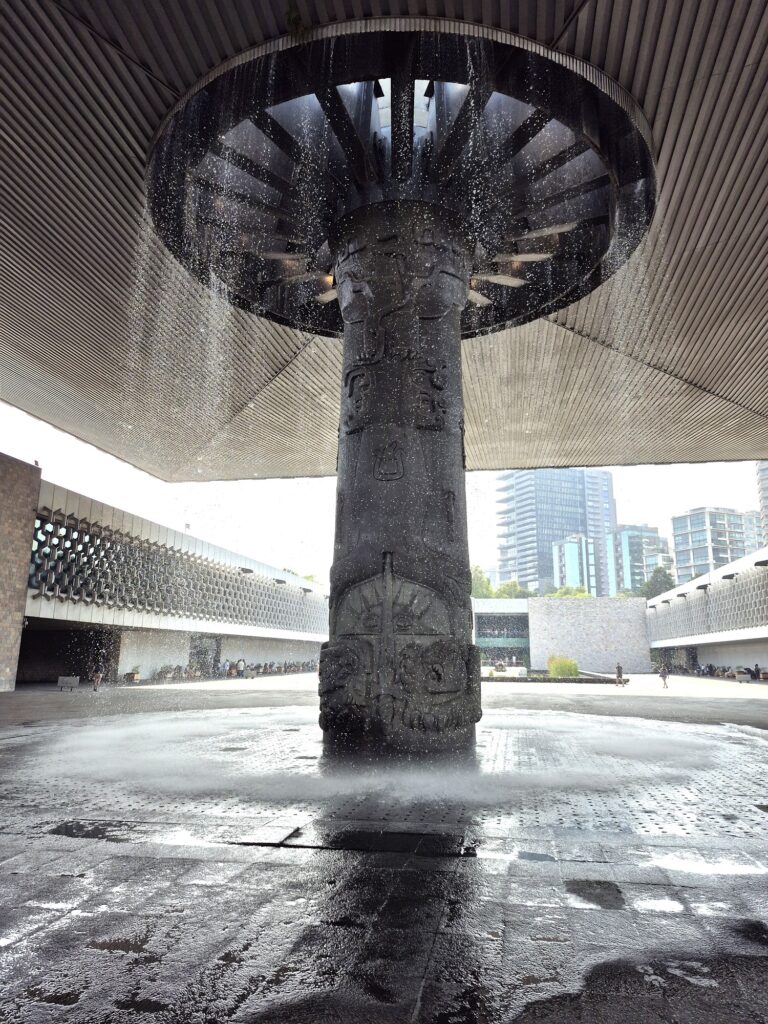
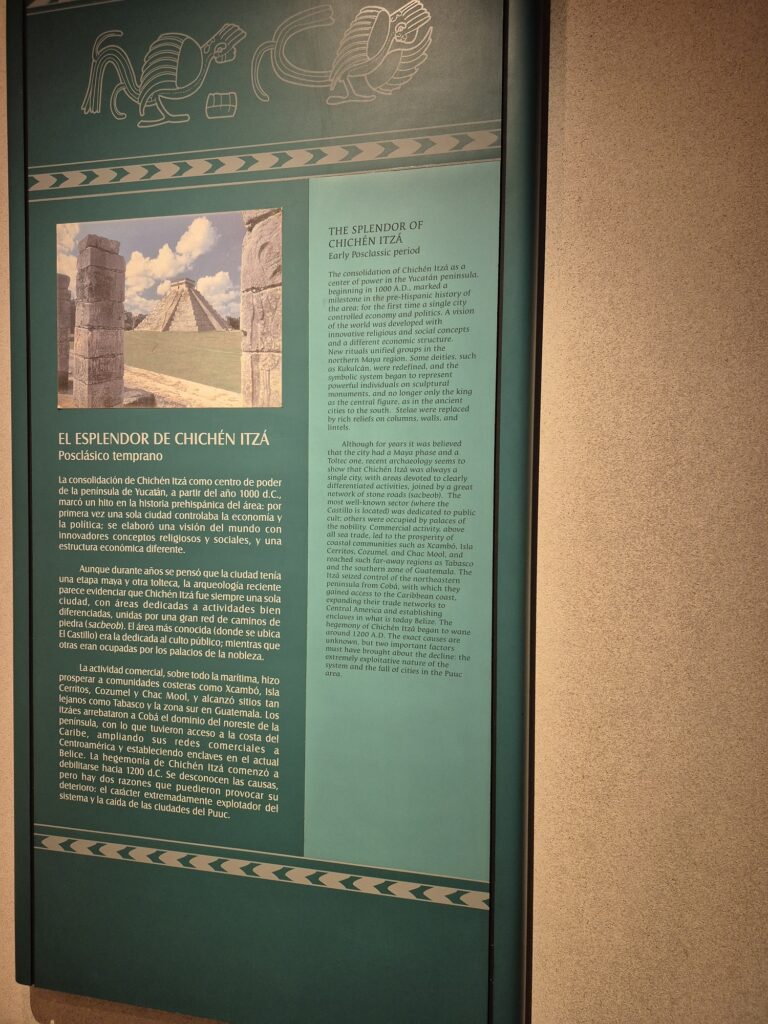
You can easily spend 3–4 hours here and still feel like you’ve only scratched the surface. It’s not only educational, but deeply immersive—offering insight into the worldviews, rituals, architecture, and artistry of Mexico’s ancient peoples.
Most signs were in both English and Spanish, and where needed, Google Translate helped. We wrapped up the visit around 5:45 pm, filled with admiration for the civilisations that shaped this country.
Dinner was at Café Brería El Péndulo, a charming bookshop café. Between bites of enchiladas, a falafel sandwich, and a burger, we chatted about the exhibits and local life.
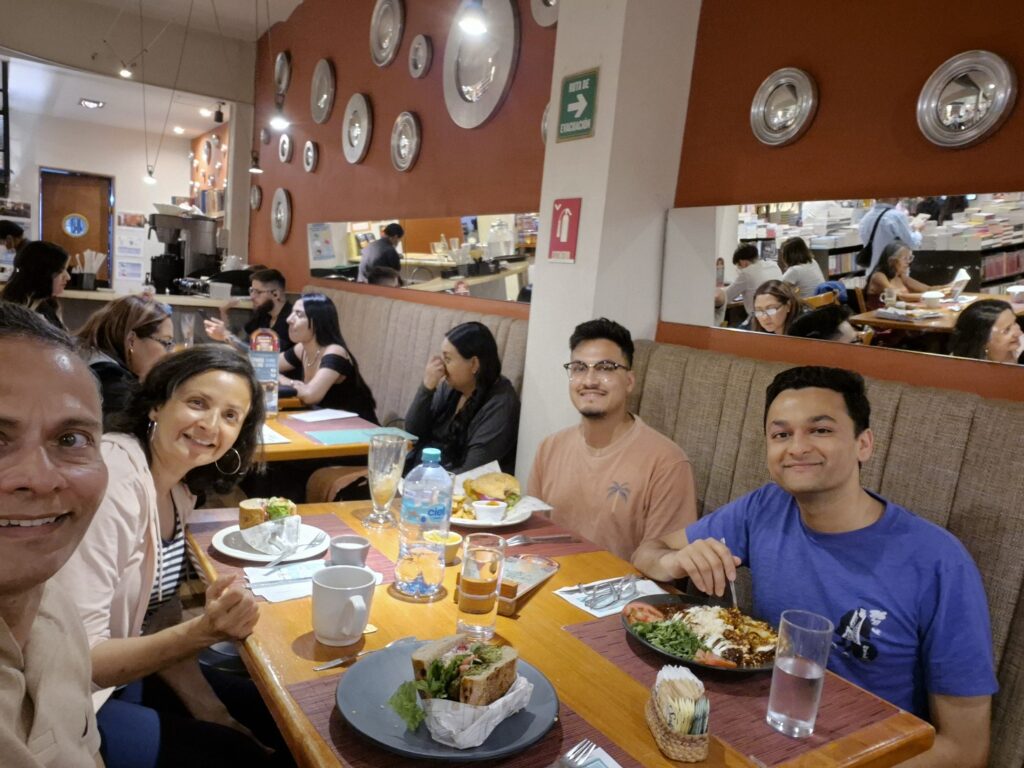
At 8:30 pm, we dove into Mexico City’s iconic Lucha Libre. It’s theatrical wrestling much like WWF wrestling— colorful, loud, and completely over the top. The crowd, many wearing luchador masks, cheered and booed with gusto. Though the fights are staged, the acrobatics and drama make it an unforgettable slice of Mexican pop culture.
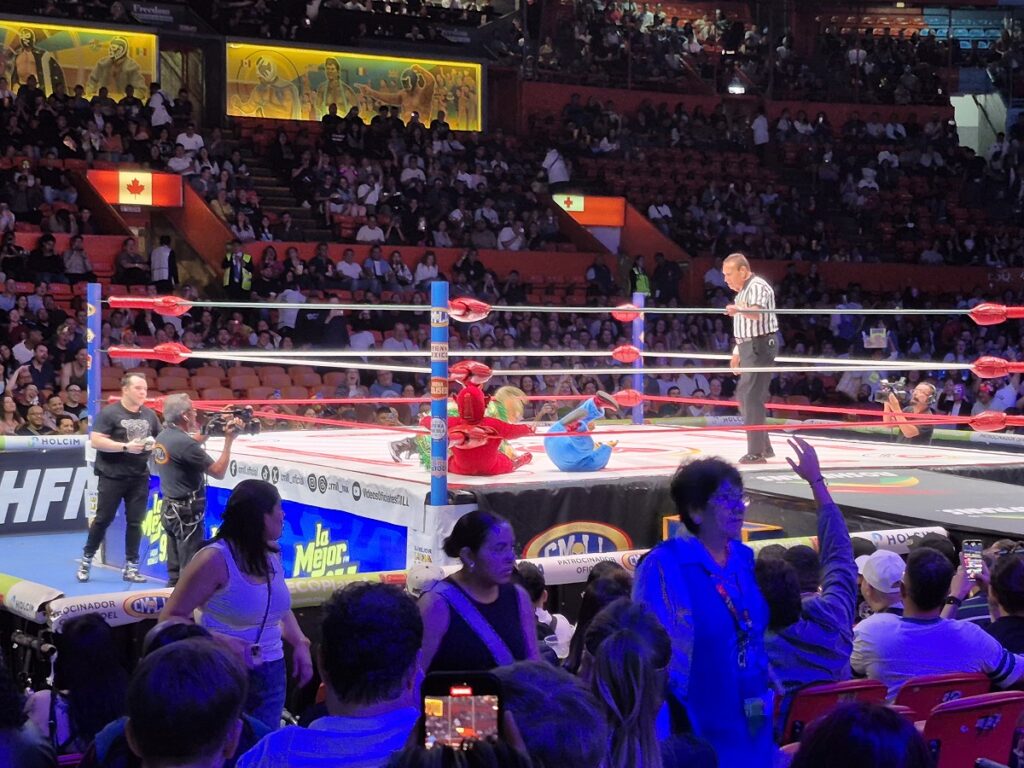
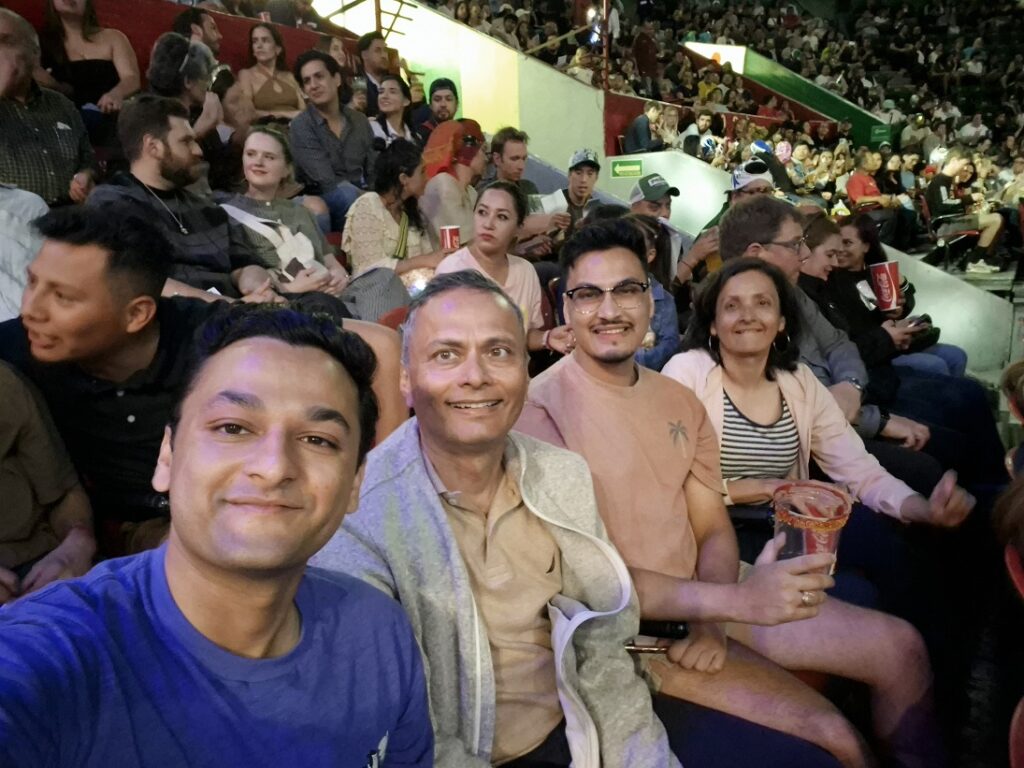
We got back to our hotel by 9:30 pm and called it a night by 11, after the usual ritual of checking messages and emails…
Day 2: Saturday, 24 May
At 10:20 am, we joined a free walking tour of Mexico City’s Historic Center. It took about 30 minutes by taxi to get there. Our guide, Areli, was a second-year translation student fluent in Spanish, learning English and French — warm, knowledgeable, and easy to talk to.
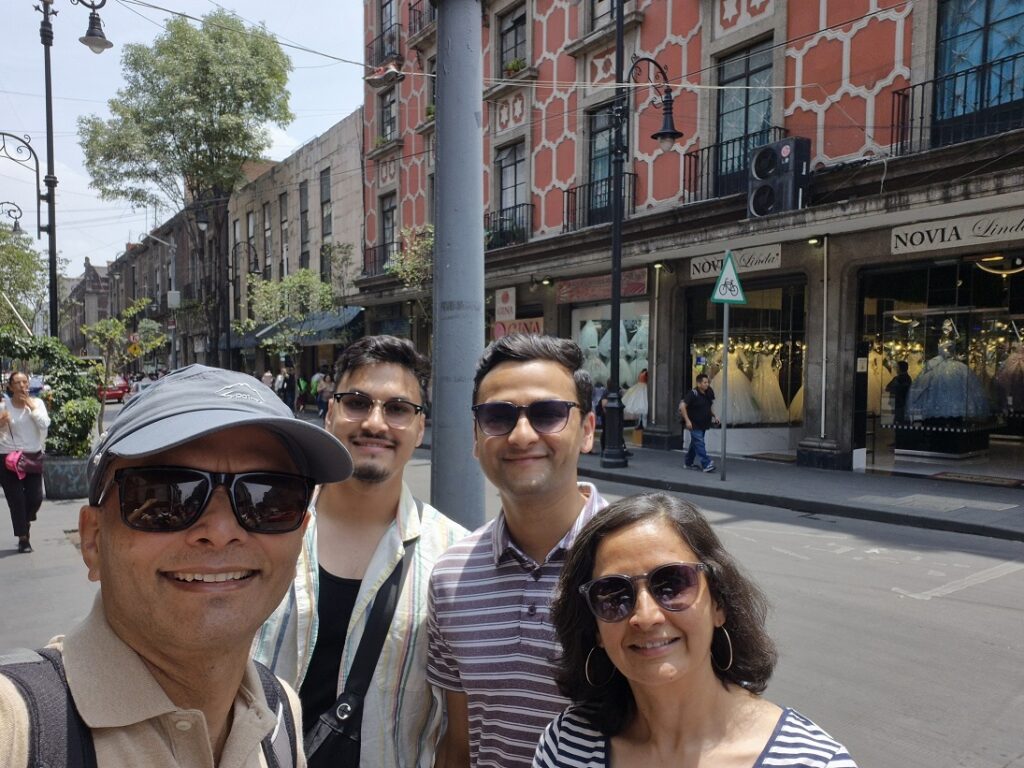
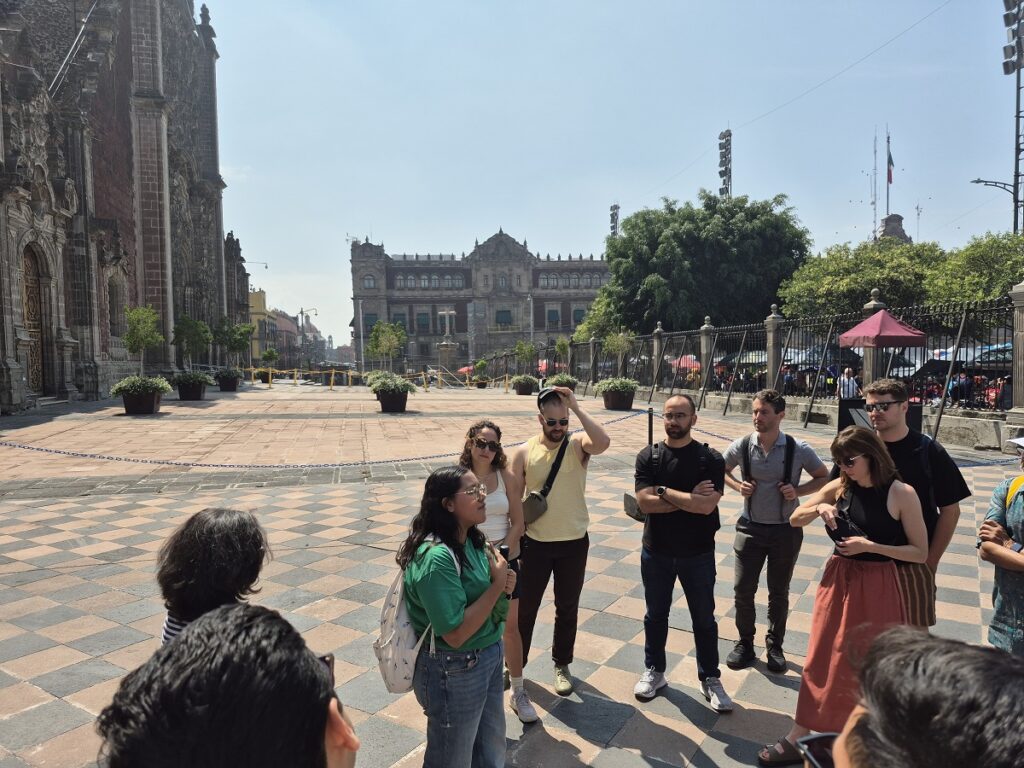
We began at the Palacio de Bellas Artes, a grand cultural center with stunning murals by Diego Rivera and others.
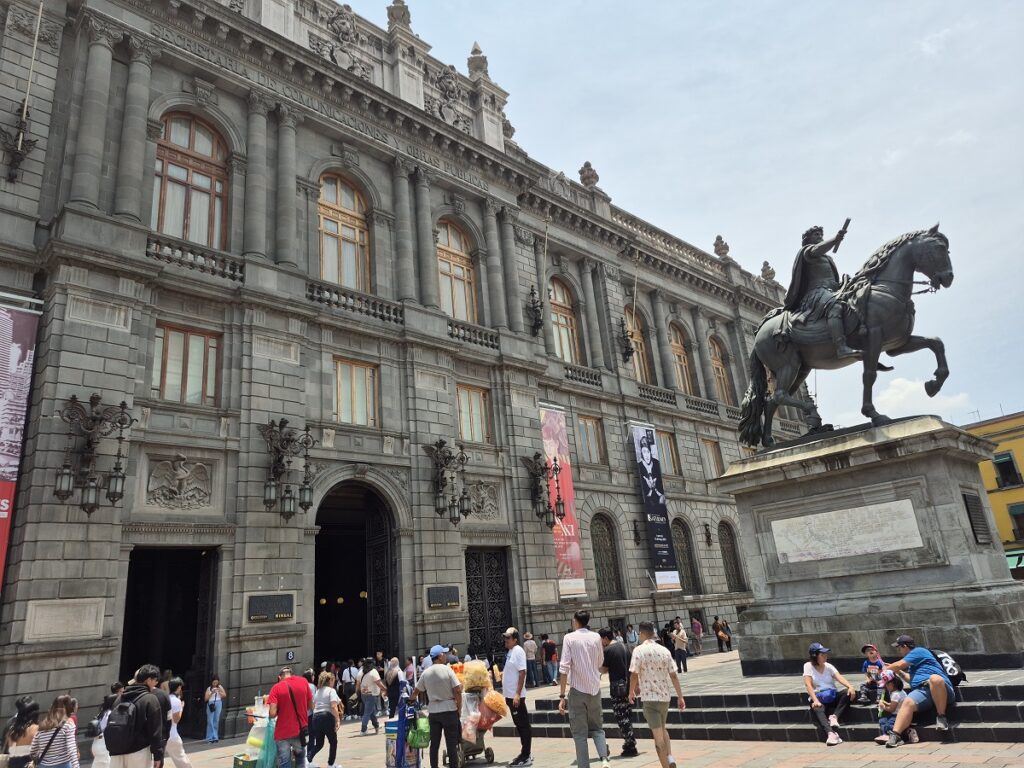
The Palacio de Bellas Artes (Palace of Fine Arts) in Mexico City’s Historic Center is an iconic cultural landmark known for its stunning Art Nouveau and Art Deco architecture. Inside, it houses some of Mexico’s most celebrated murals by artists like Diego Rivera, David Alfaro Siqueiros, and José Clemente Orozco. Rivera’s mural “Man, Controller of the Universe” is a powerful reinterpretation of his earlier Rockefeller Center work. The grand stained-glass stage curtain made of crystal depicts the Valley of Mexico. The building also serves as a venue for opera, classical music, and dance performances.
From there, we admired the Casa de los Azulejos (“House of Tiles”), a gorgeous 18th-century mansion adorned with Puebla tiles.
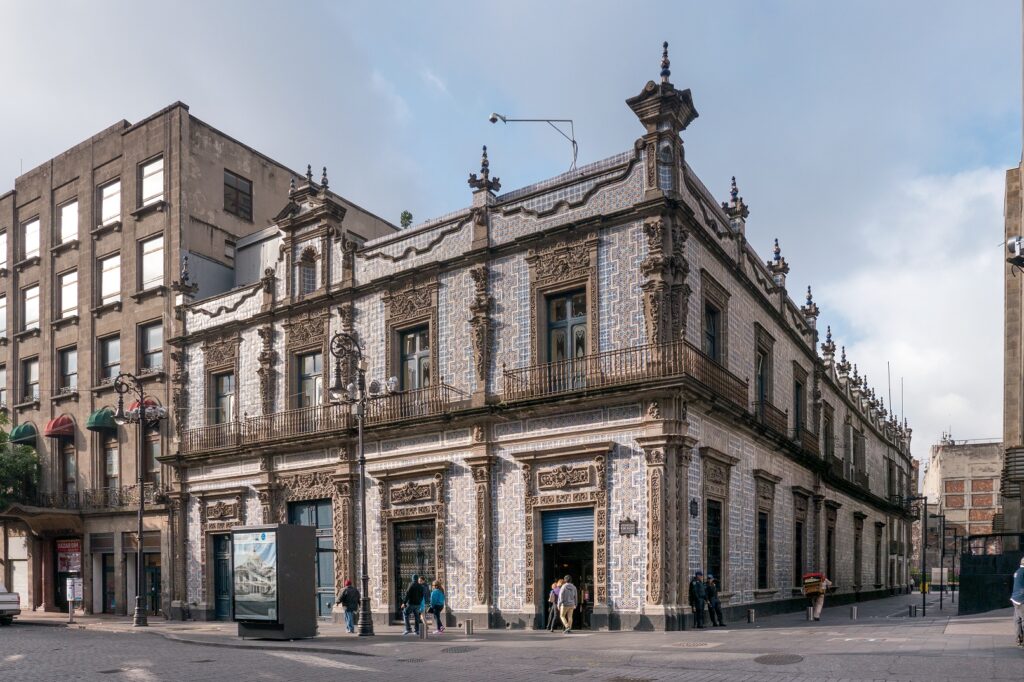
The Casa de los Azulejos (“House of Tiles”) is a historic 18th-century palace in Mexico City’s Historic Center, famous for its striking blue and white Puebla tiles covering its façade. Originally built by the Count del Valle de Orizaba, it later became a symbol of aristocratic wealth. Today, it’s home to a Sanborns café and restaurant, retaining much of its colonial charm and elegance inside.
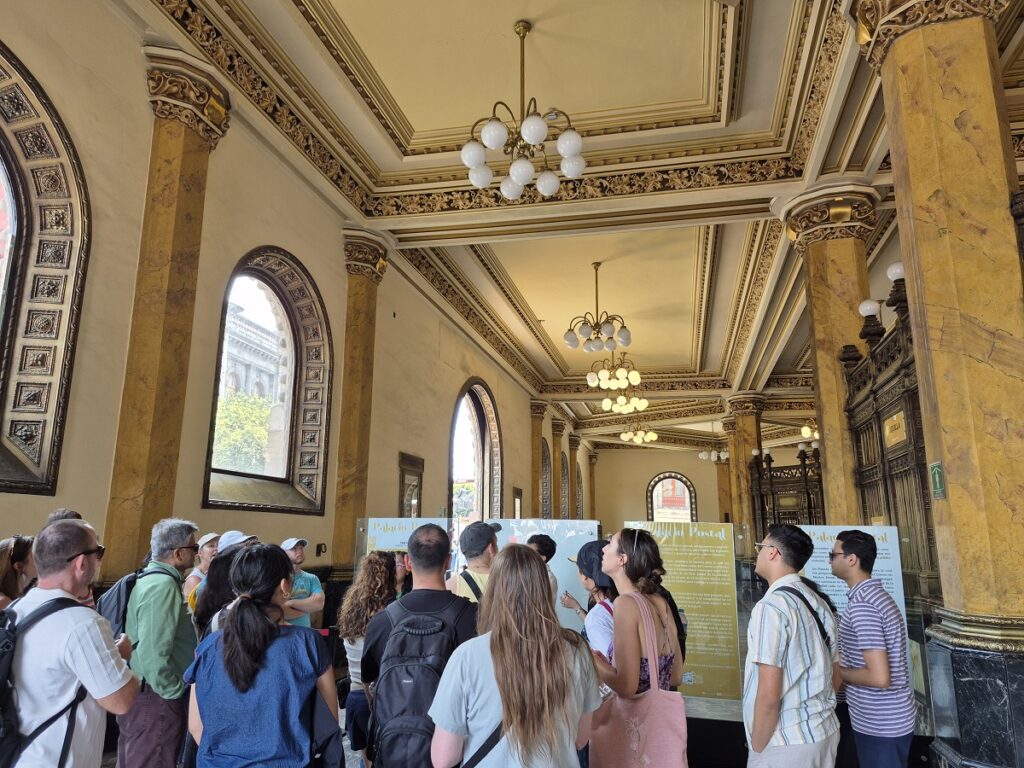
Next stop: Palacio Postal, the city’s opulent central post office. Built in 1907, it combines Neoclassical and Art Nouveau styles with brass staircases, marble finishes, and stained glass — more palace than post office.
We strolled to the Zócalo, the heart of the city and one of the world’s largest public squares. Here, the opening scene of the 2015 James Bond film Spectre was shot, a Day of the Dead parade, the scene became so iconic that it became a real annual event.
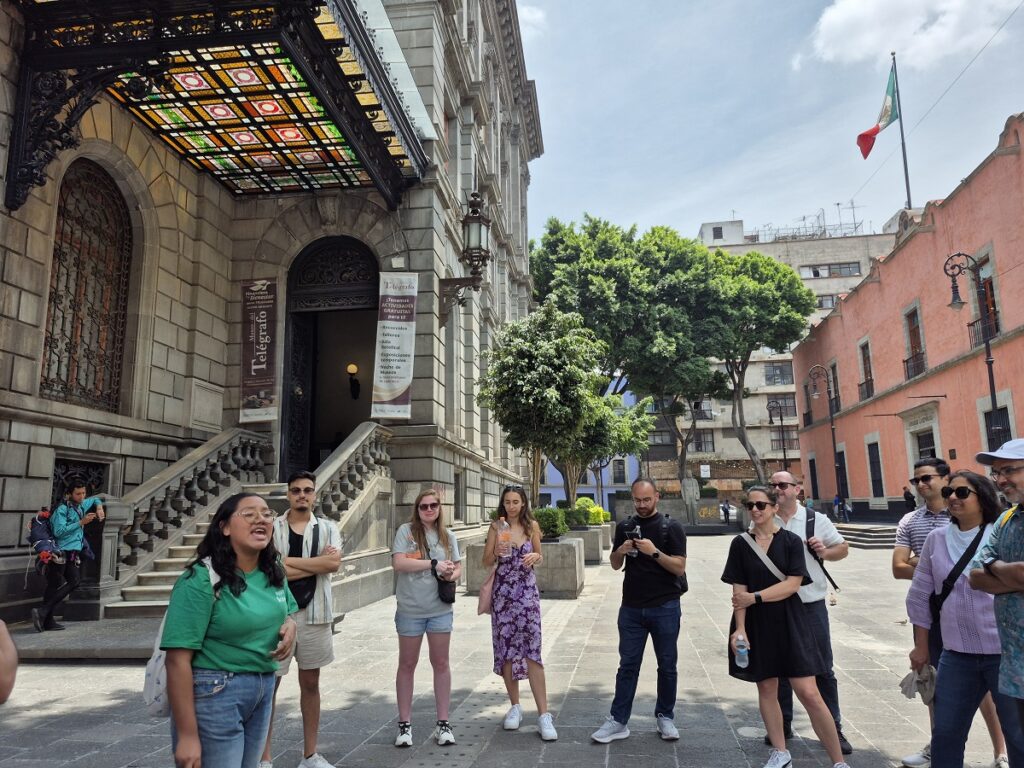
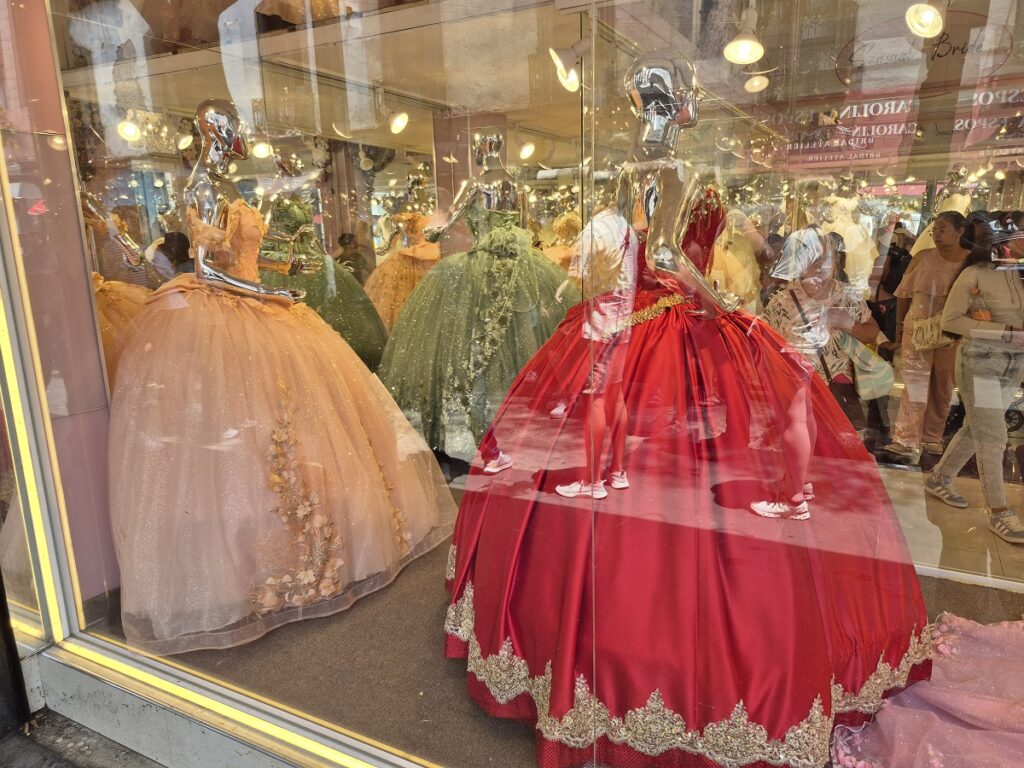
We paused at a boutique filled with glittering quinceañera gowns. In Mexican tradition, the quinceañera is a coming-of-age celebration for girls turning 15, often involving a church ceremony, a lavish dress, dancing, and a family fiesta — a major milestone in Latin culture.
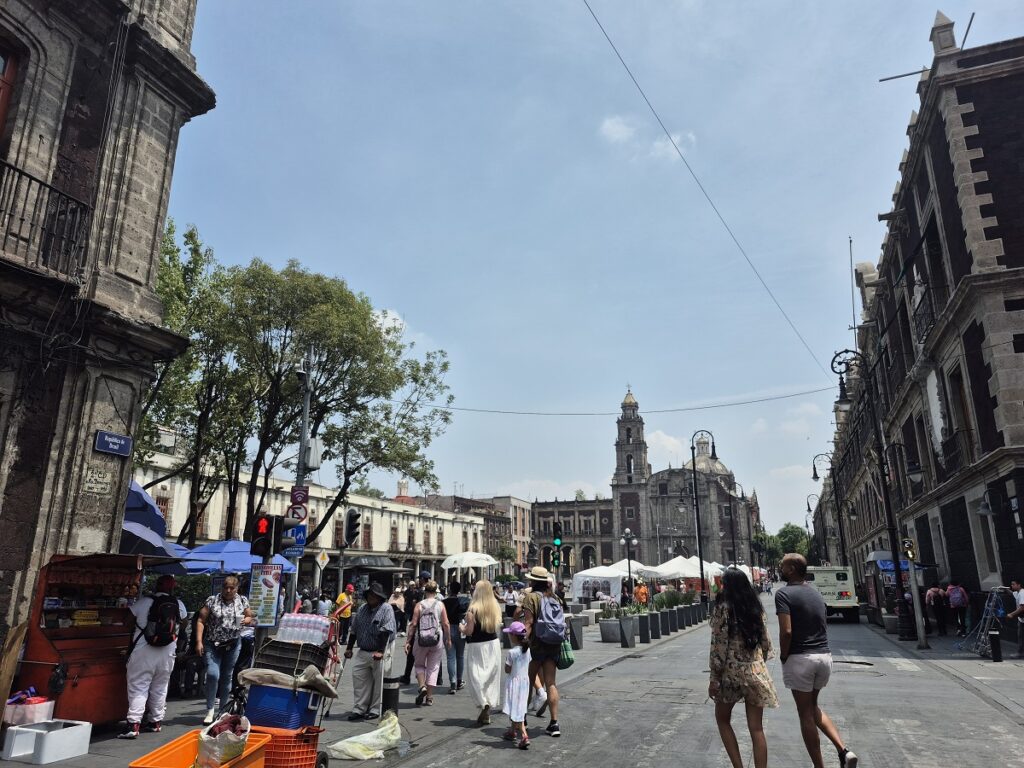
Then we arrived at the Plaza de Santo Domingo – is a historic square just north of the Zócalo in Mexico City, anchored by the Baroque-style Church of Santo Domingo, built in the 16th century. The square is flanked by colonial arcades and has long been a hub of printing and scribe activity. For centuries, escribanos (public letter-writers) set up typewriters here to help people draft letters, legal documents, and even counterfeit degrees. It’s a vibrant spot that reflects both the bureaucratic and creative quirks of Mexico City’s past. The plaza remains lively today, surrounded by shops, street vendors, and historical charm.
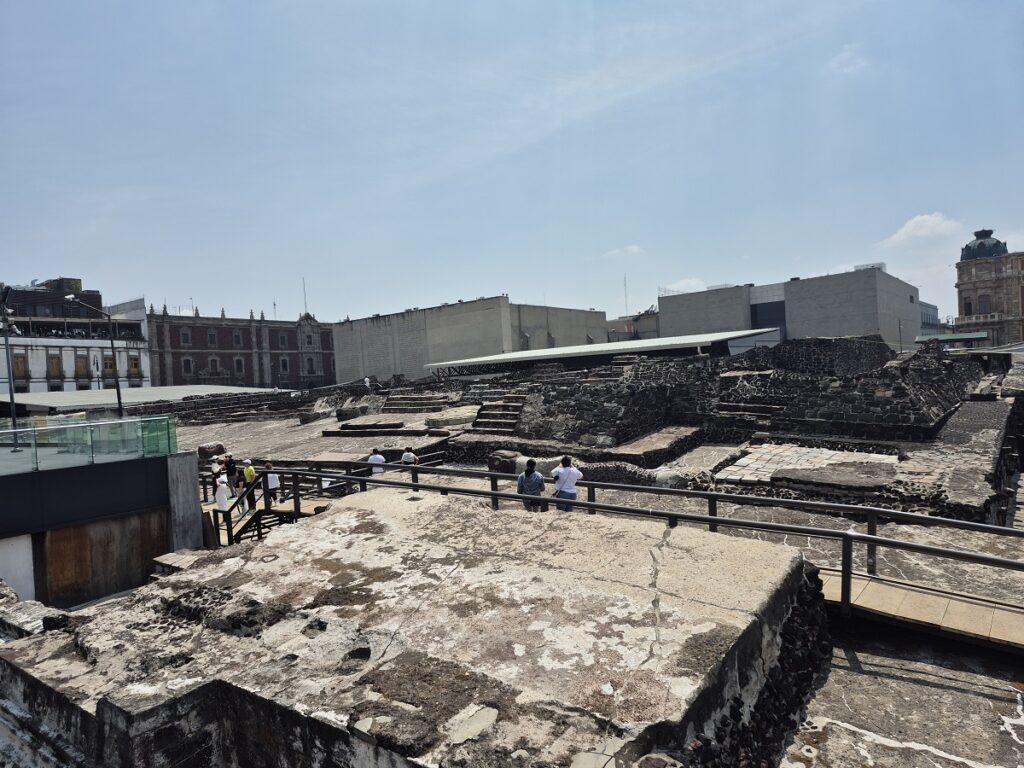
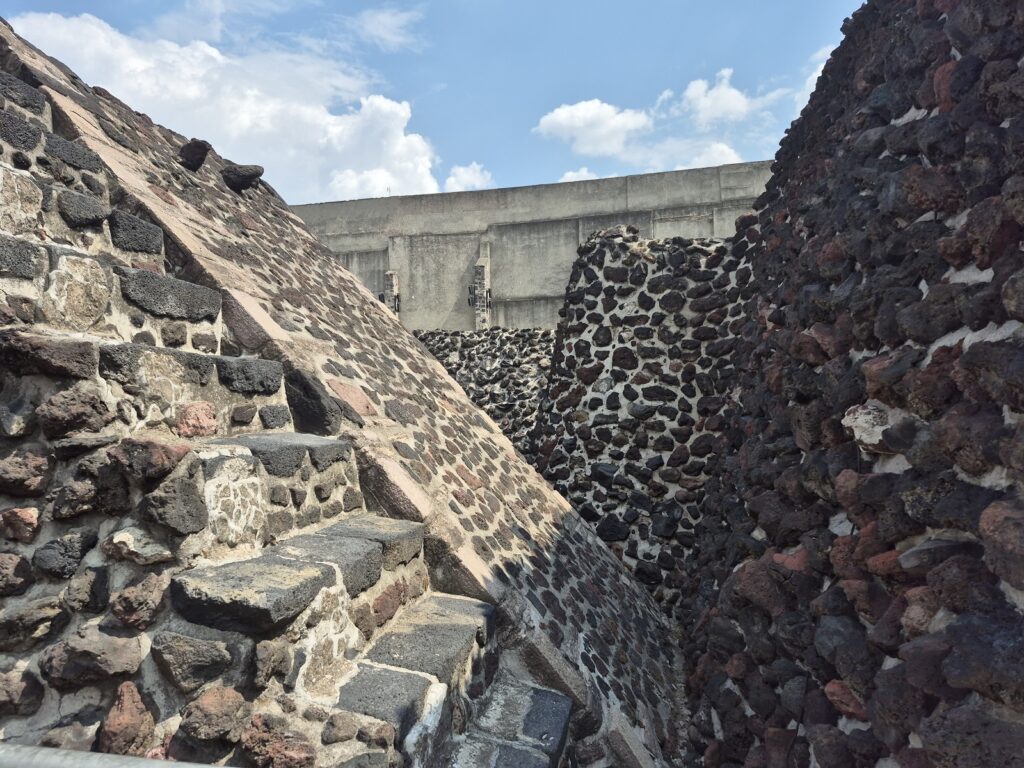
Next, we visited the Templo Mayor, the remains of the Aztec empire’s main temple. Templo Mayor was the main temple of the Mexica (Aztec) civilization, located in the heart of ancient Tenochtitlan—what is now Mexico City. Excavated just off the Zócalo, the ruins reveal layers of construction that span centuries before the Spanish conquest. The temple was dedicated to two gods: Huitzilopochtli (god of war and the sun) and Tlaloc (god of rain and agriculture). Today, visitors can explore the archaeological site and an adjoining museum that displays unearthed artifacts including sculptures, ceremonial offerings, and tools. It offers a powerful glimpse into the spiritual and architectural richness of Aztec life.
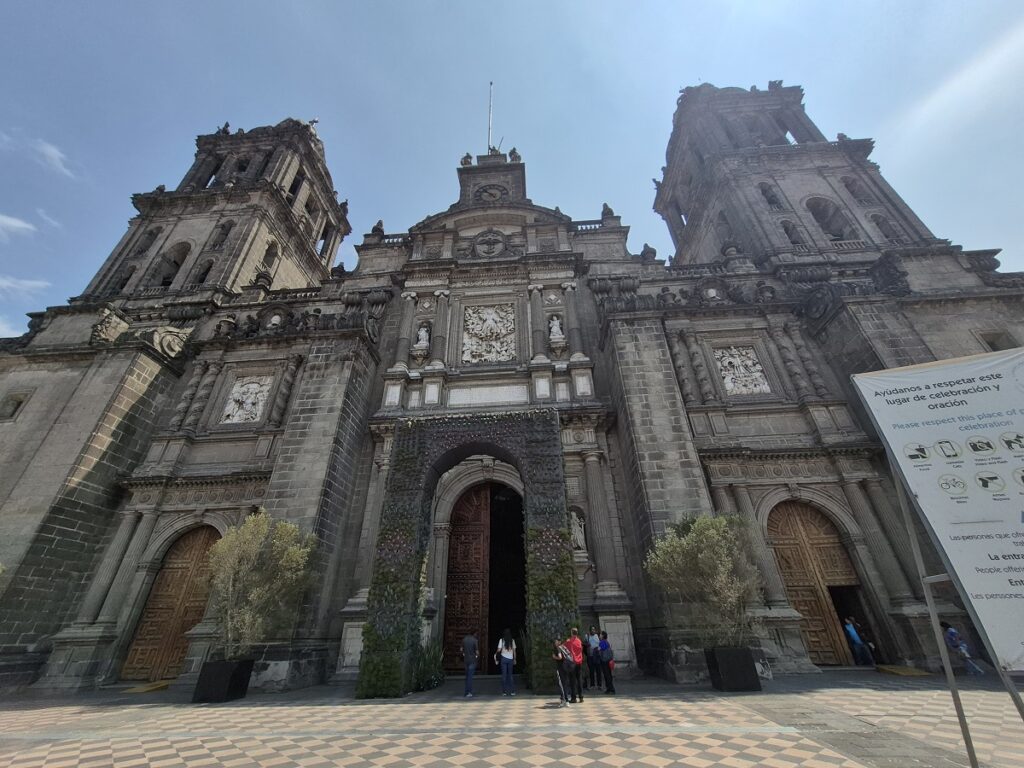
The juxtaposition is stark: pre-Hispanic ruins alongside the towering Cathedral Metropolitana, the largest in the Americas. Inside, the cathedral is grand — ornate altars, gilded chapels, and a rich blend of Renaissance, Baroque, and Neoclassical styles.
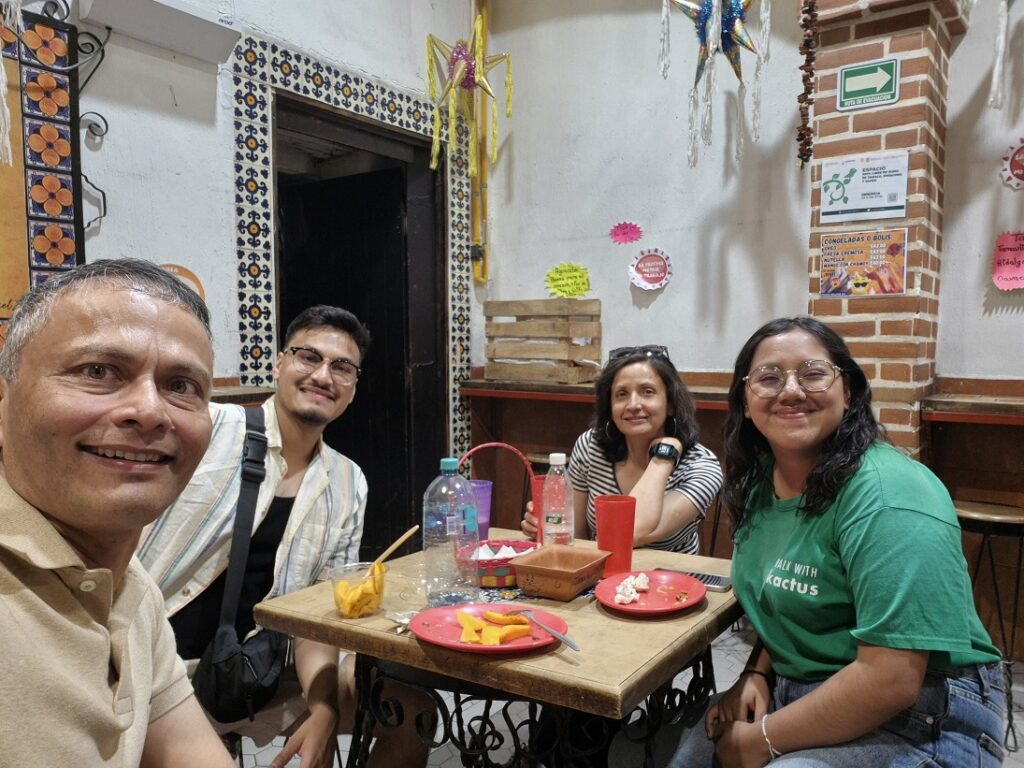
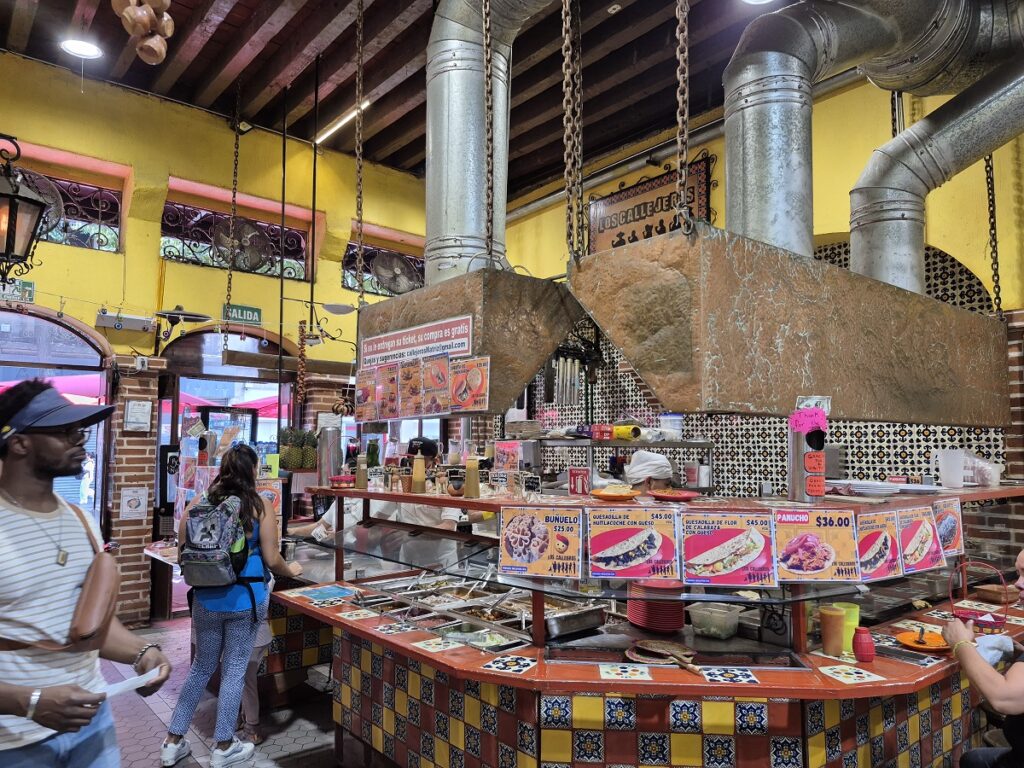
At 1:00 pm, Areli suggested lunch at her favorite local spot, Los Callejeros. We had tacos and enchiladas with bright green and red salsas — fresh, spicy, and thoroughly authentic. As it turned out, Areli herself stopped by for lunch, so we got to learn more about her life in Mexico.

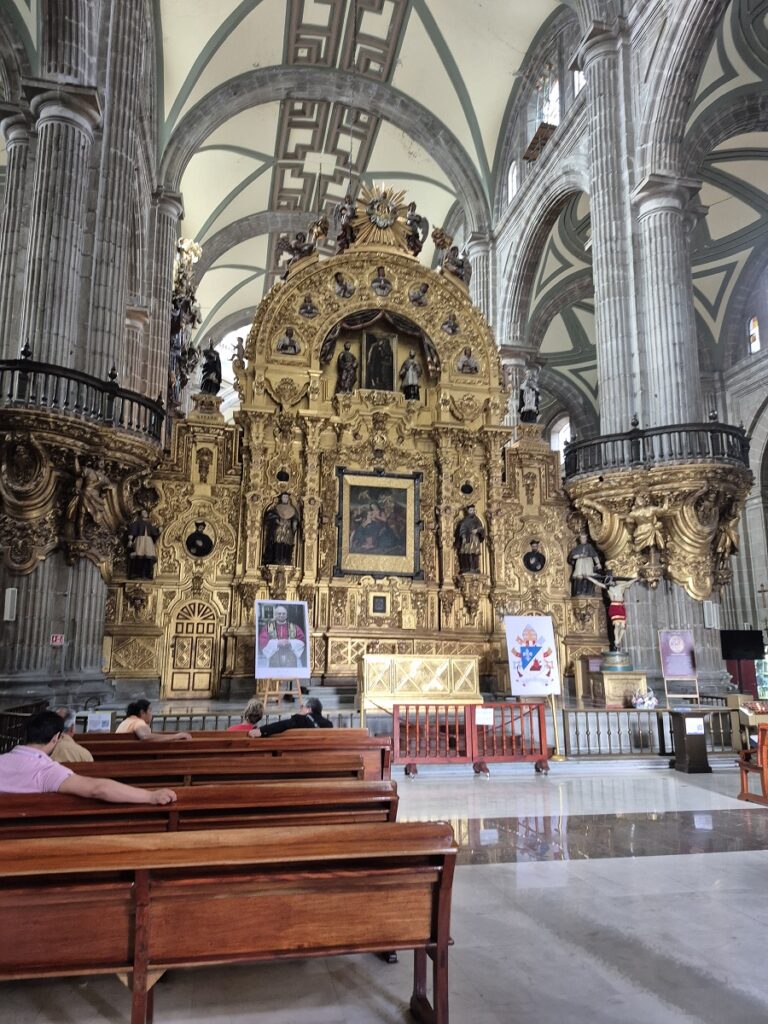
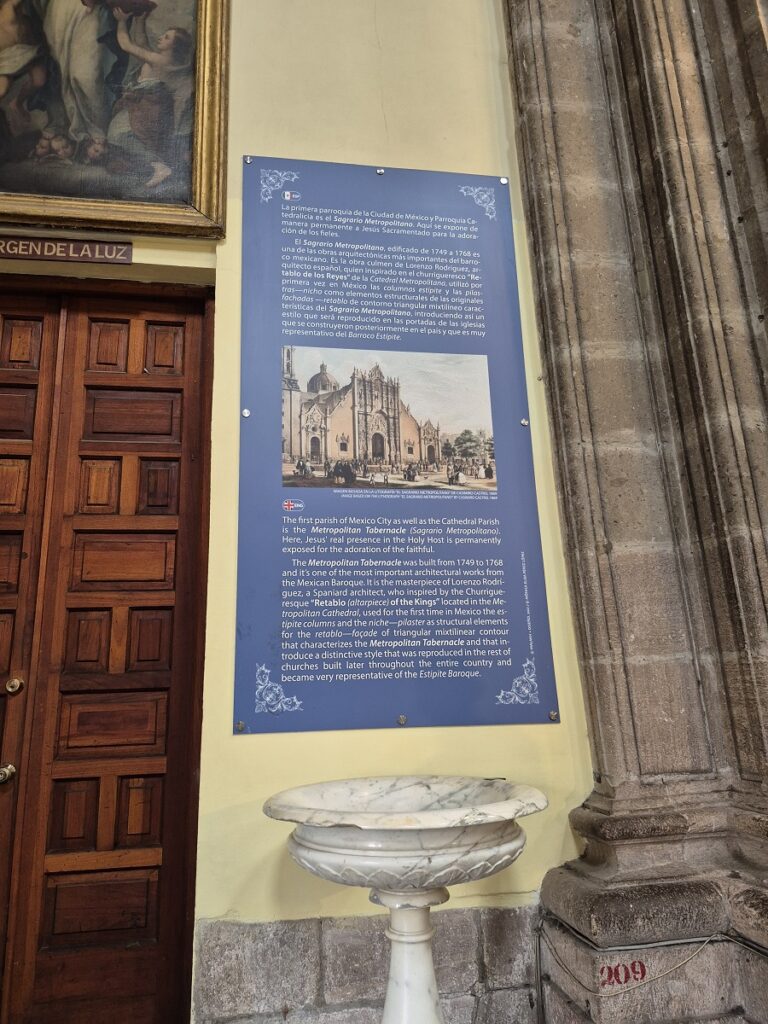
In the afternoon, we toured the Templo Mayor Museum, which houses artifacts from the ruins — sacrificial knives, deity statues, and temple relics.
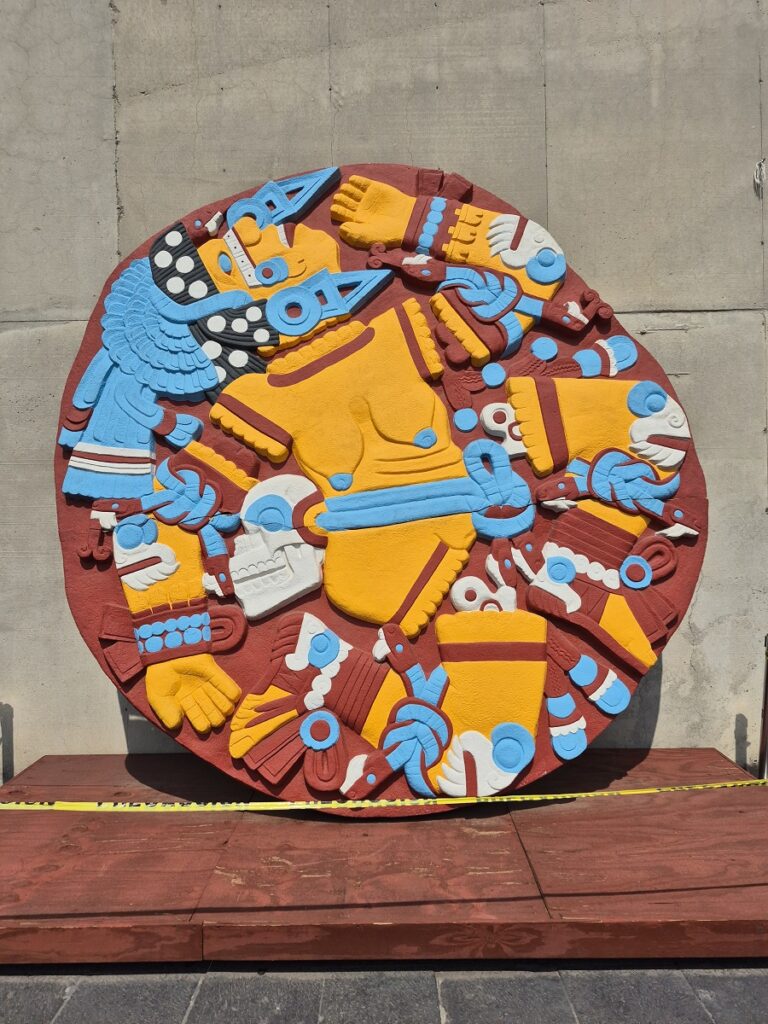
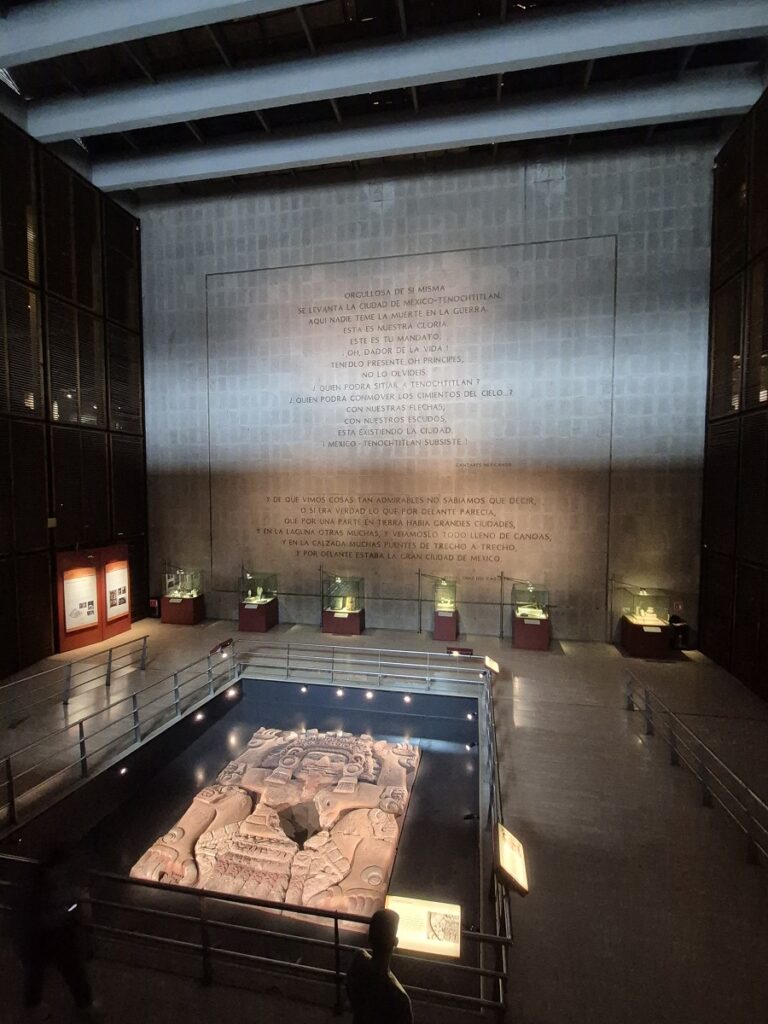
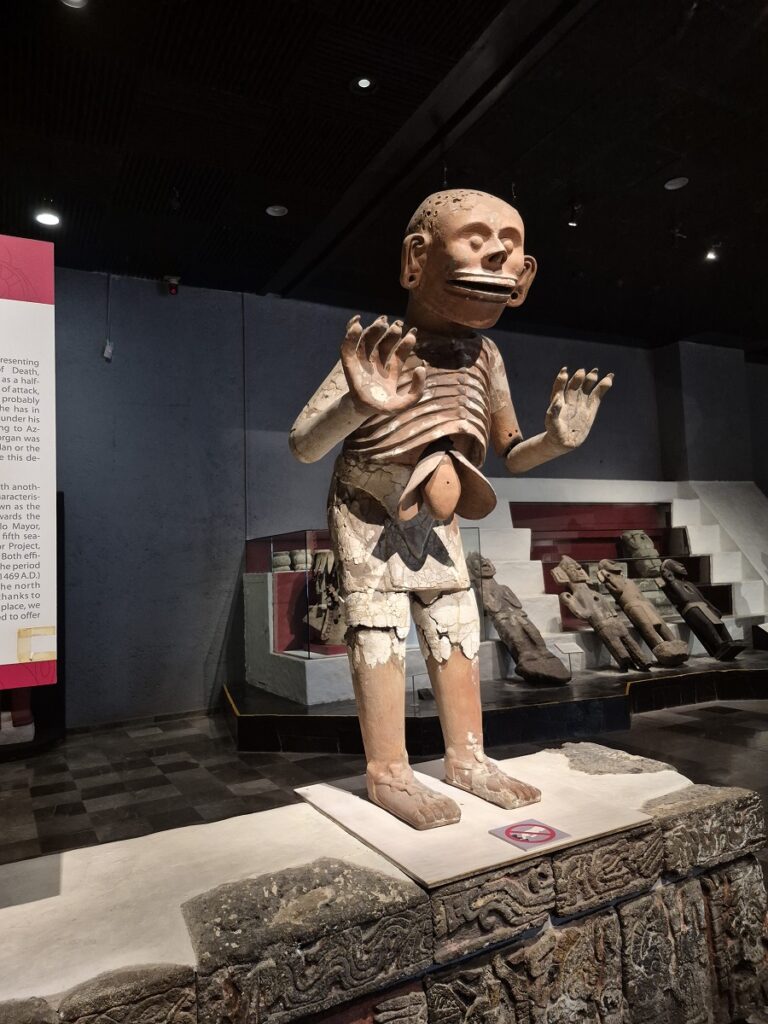
We ended around 4:15 pm and walked past the Palacio Nacional, home to the current President. In front of the palace, a peaceful teacher protest had been ongoing for 11 days, with demands for better wages and benefits.
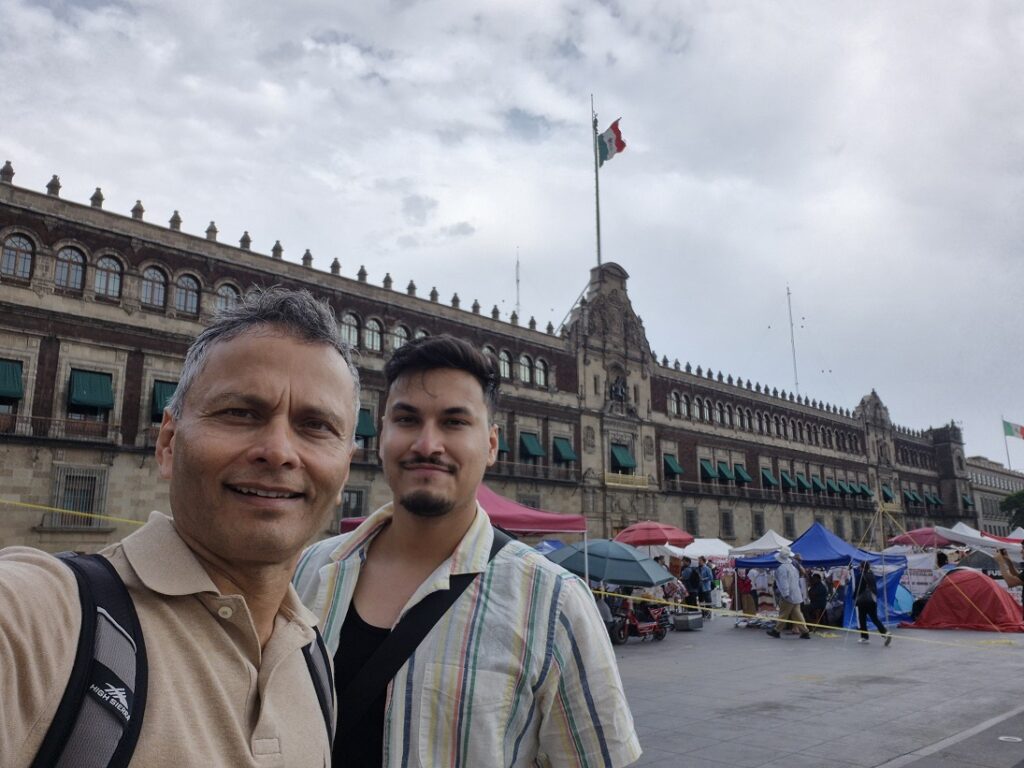
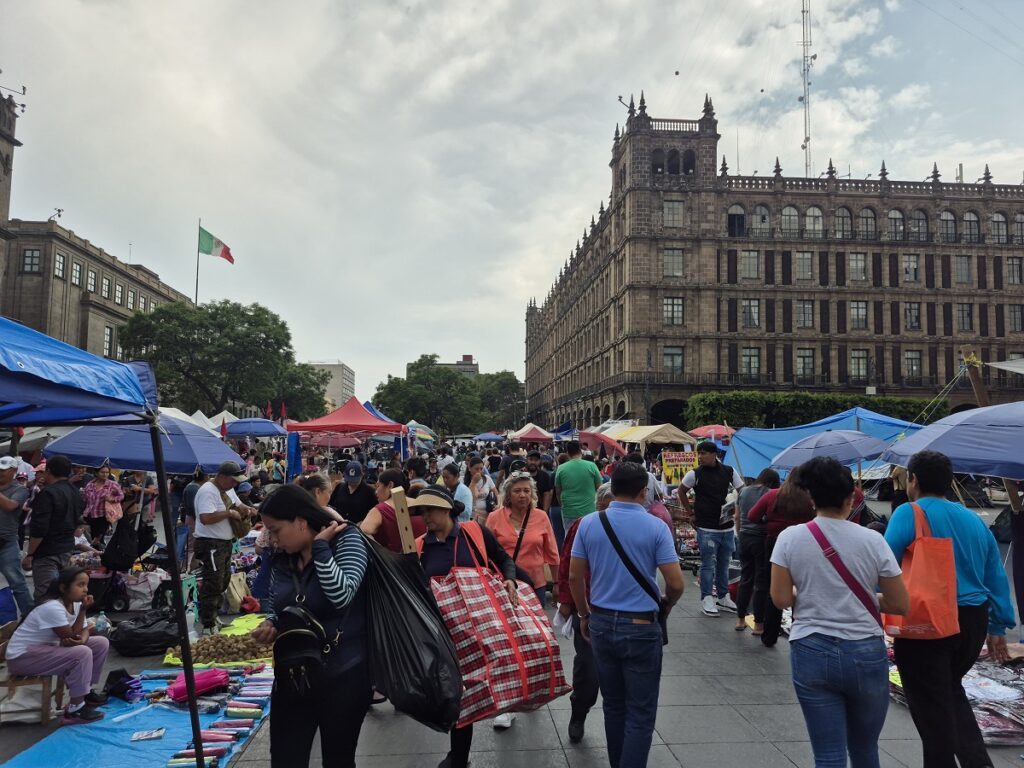
A highlight was witnessing a live Aztec dance performance in the square. Dancers donned elaborate feathered headdresses and shell anklets, moving rhythmically to the pulse of drums and flutes. These concheros or “Aztec dancers” represent a rich legacy—ritualistic dances blending pre-Hispanic ceremonies with colonial traditions, performed as a form of spiritual expression and as a nod to ancestral roots
Navigating through the crowds and shops near the Zócalo, we finally caught an Uber and reached our Airbnb in Condesa around 5:30 pm. Dinner was simple burritos from a nearby eatery, and we turned in early — the next day would begin before sunrise.
Day 3: Sunday, 25 May
At 4:30 am, we were picked up in a van headed for Teotihuacan, one of Mexico’s most important archaeological sites.
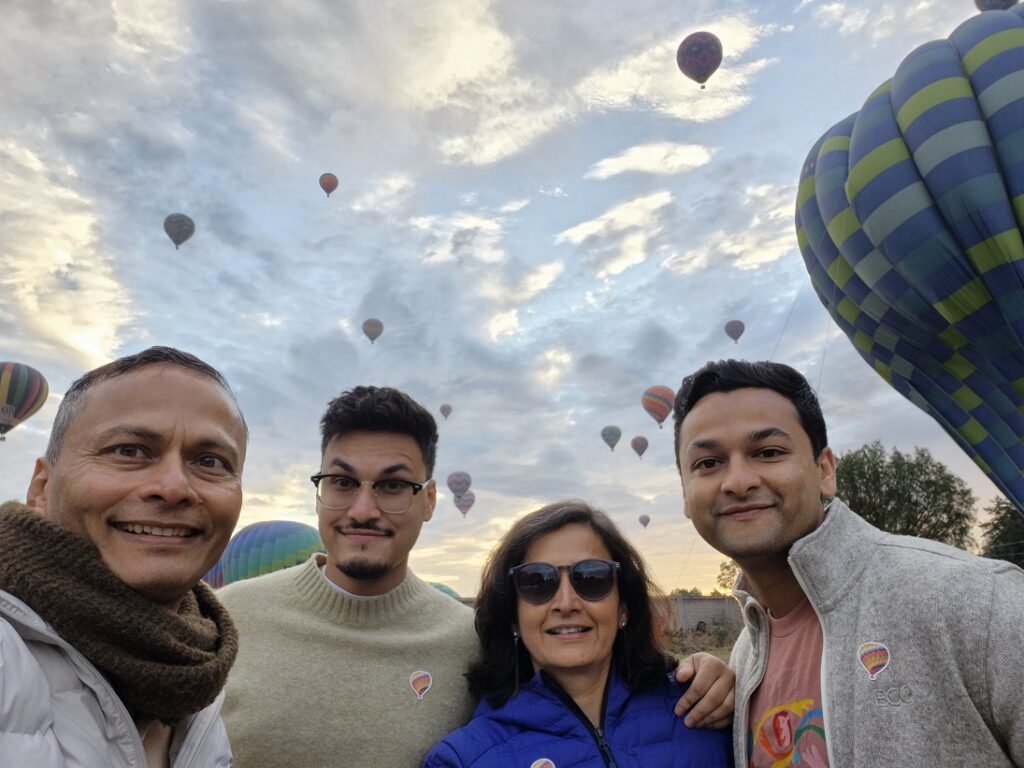
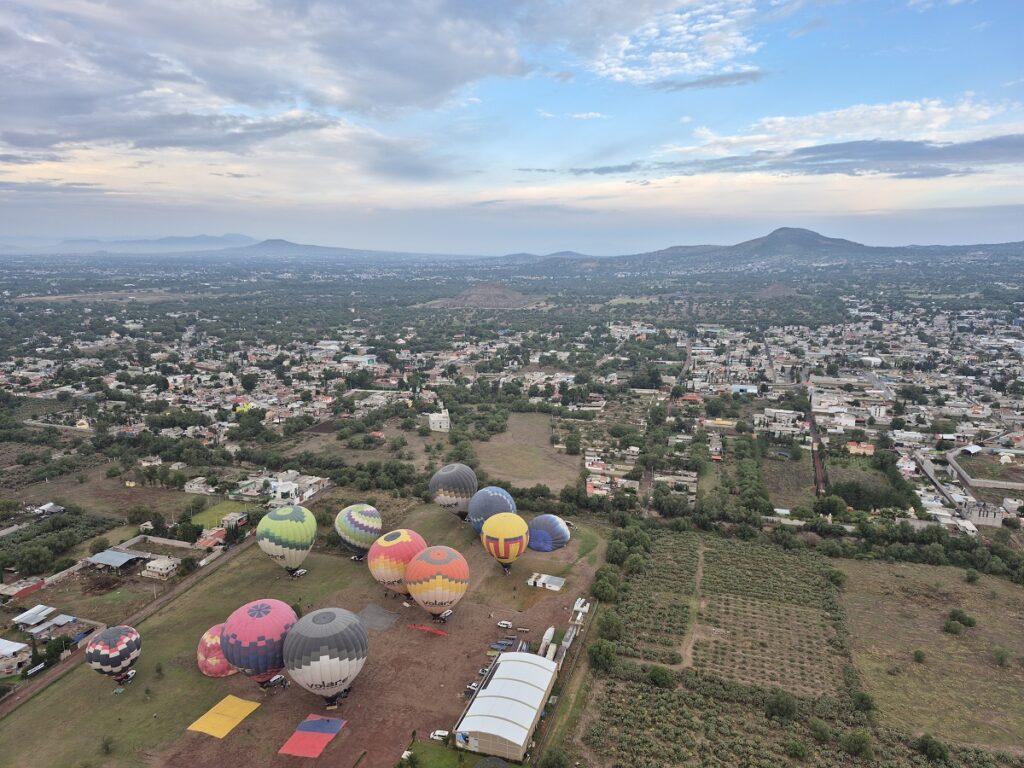
By 6:30 am, we were airborne in a hot air balloon called Mercurio, gliding silently over the Valley of the Pyramids. The sun rose over a misty landscape as we climbed from 8,000 to 10,000 feet, revealing the grandeur of the Pyramid of the Sun, Pyramid of the Moon, and the Avenue of the Dead — once the ceremonial axis of an ancient metropolis. There were 4 more people other than us.
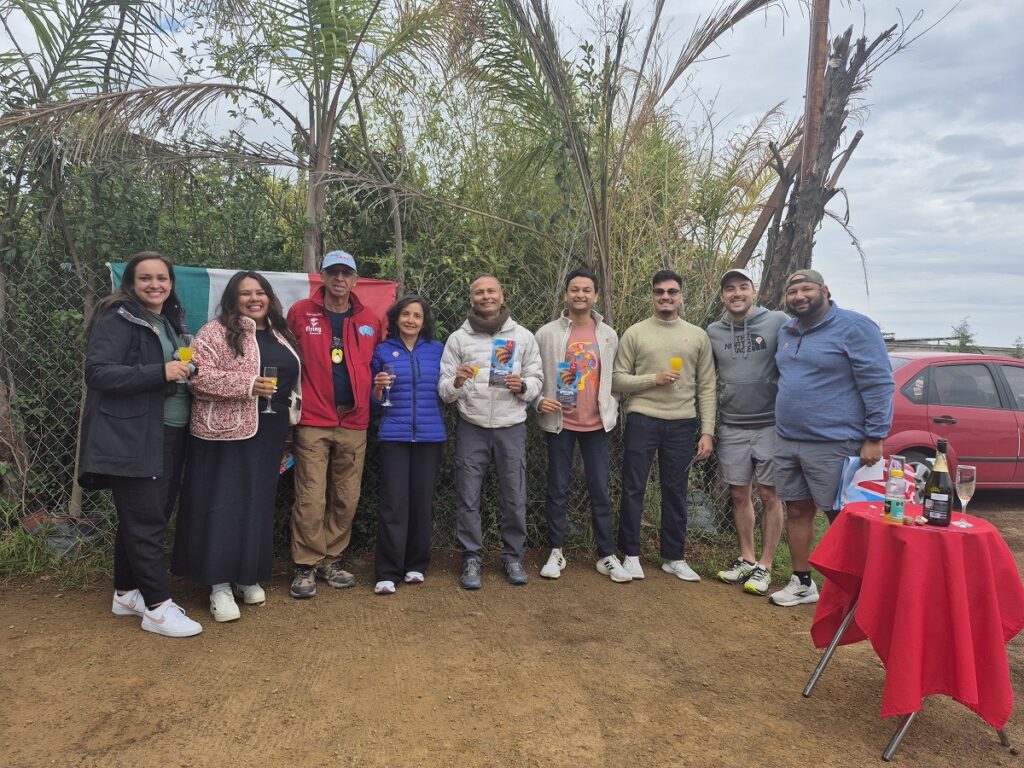
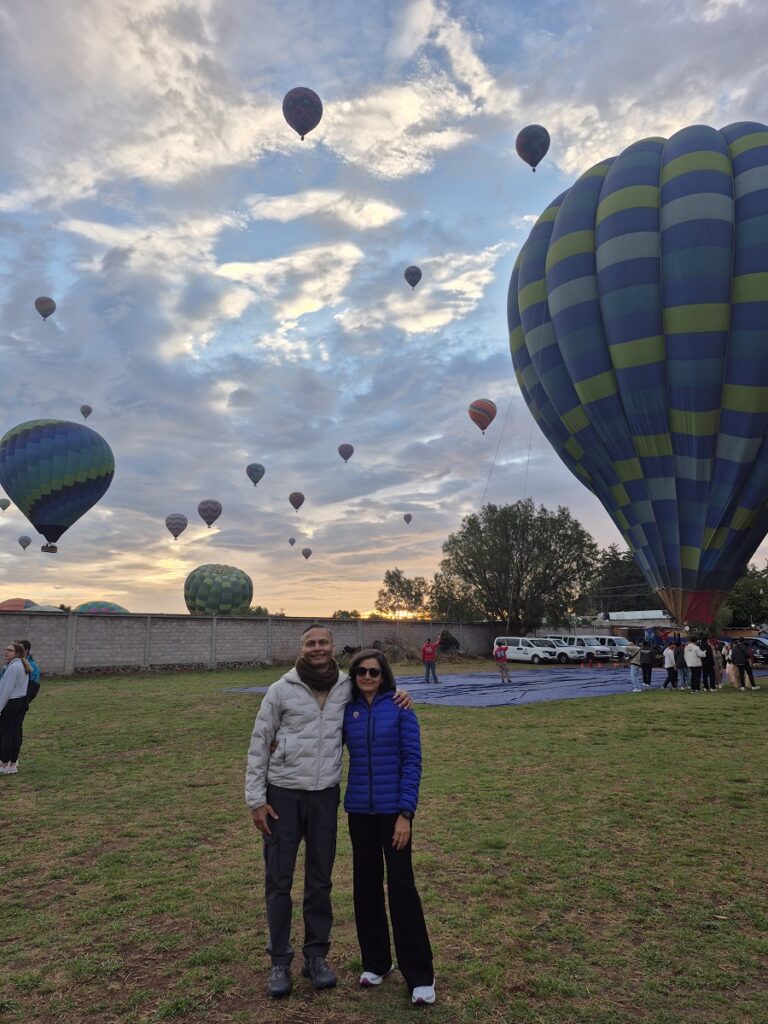

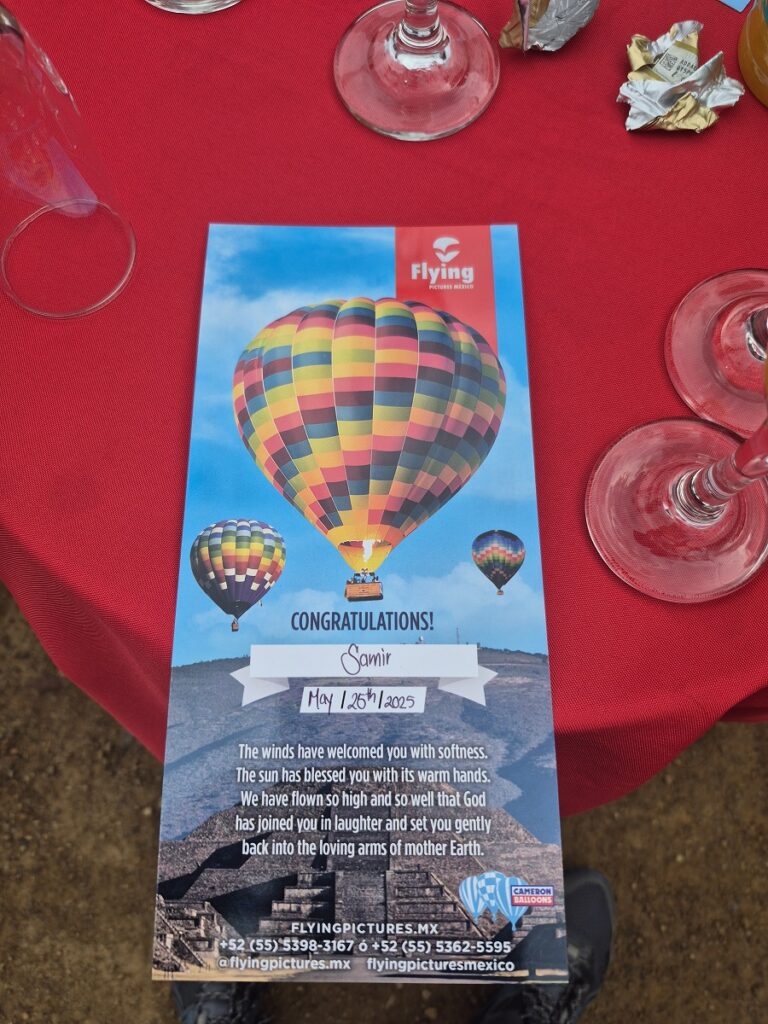
We were then taken to the archaeological site of Teotihuacan.

Teotihuacan, dating back to 100 BCE, was one of the largest cities of its time, covering about 21 square kilometers. At its height, it may have housed over 100,000 residents. The Pyramid of the Moon, aligned with sacred mountains, was the site of human and animal sacrifices. The Pyramid of the Moon, built around 200 AD, was used for ceremonies and sacrifices. Archaeologists found remains of humans and animals like jaguars and eagles buried inside—likely offerings to honor gods and assert power. The Pyramid of the Sun — one of the world’s largest — was a ceremonial center rather than a tomb like those in Egypt.
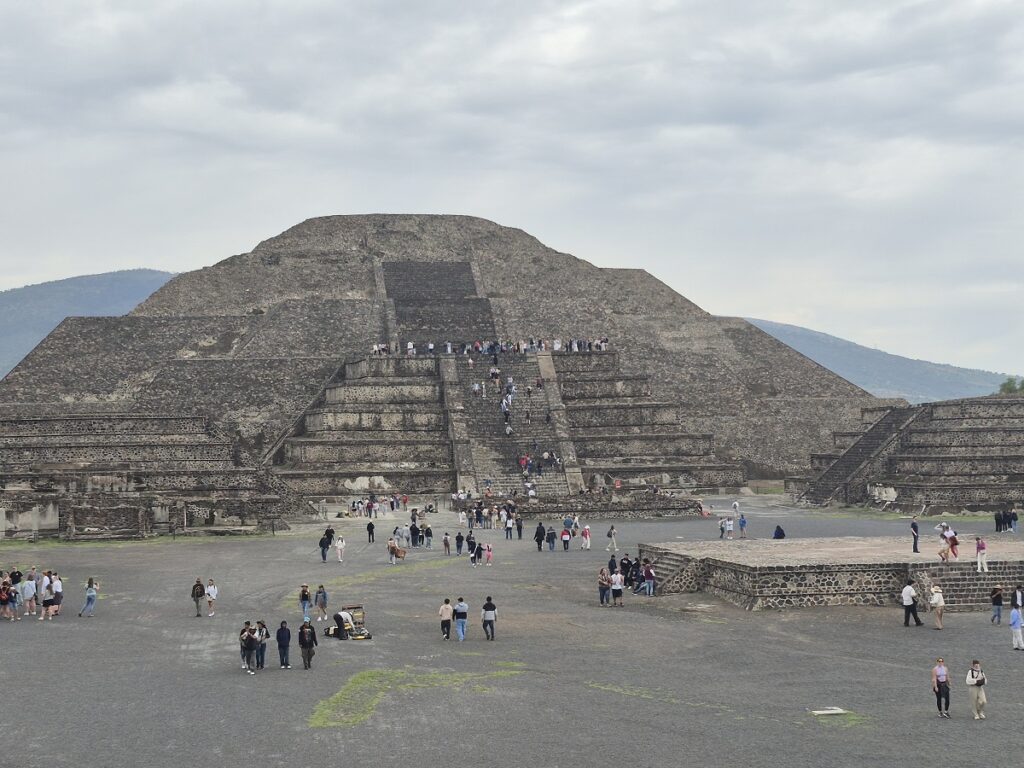
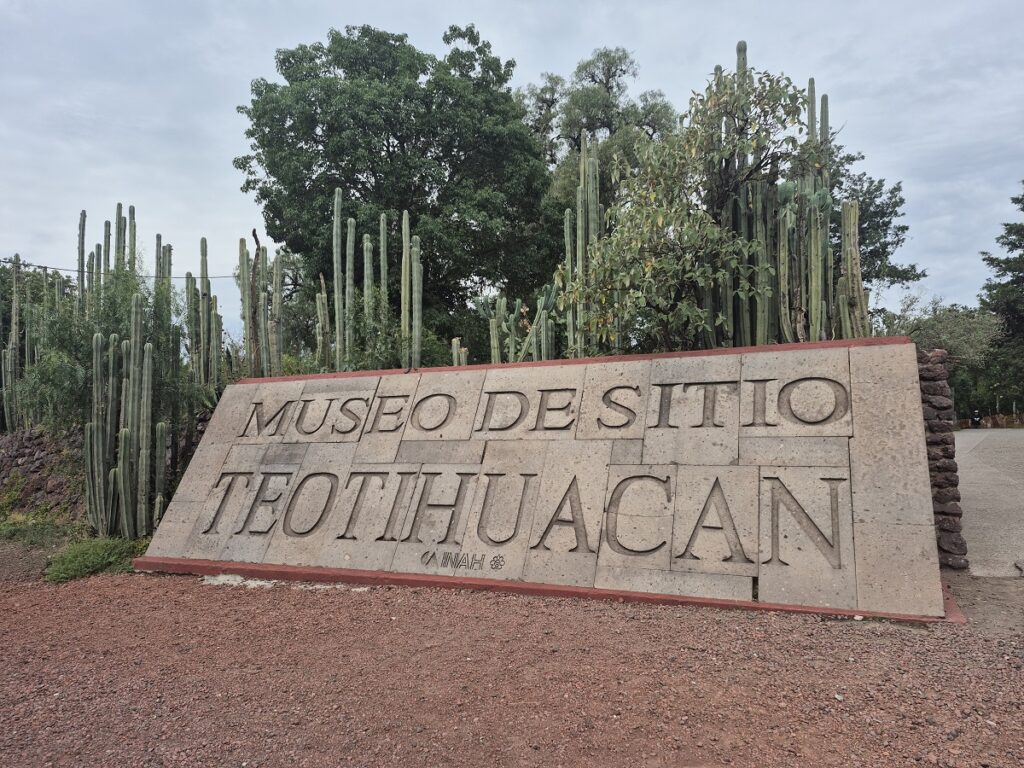
Our final visit was to the Teotihuacan Museum – officially the Museo de la Cultura Teotihuacana, sits near the Pyramid of the Sun and showcases artifacts unearthed from the ancient city. It displays pottery, masks, obsidian tools, jewelry, and murals that offer deep insight into Teotihuacan’s urban life, religion, and trade. Highlights include intricate clay figurines and a scale model of the city. The museum helps visitors understand the complexity of Teotihuacan’s society beyond just its pyramids.
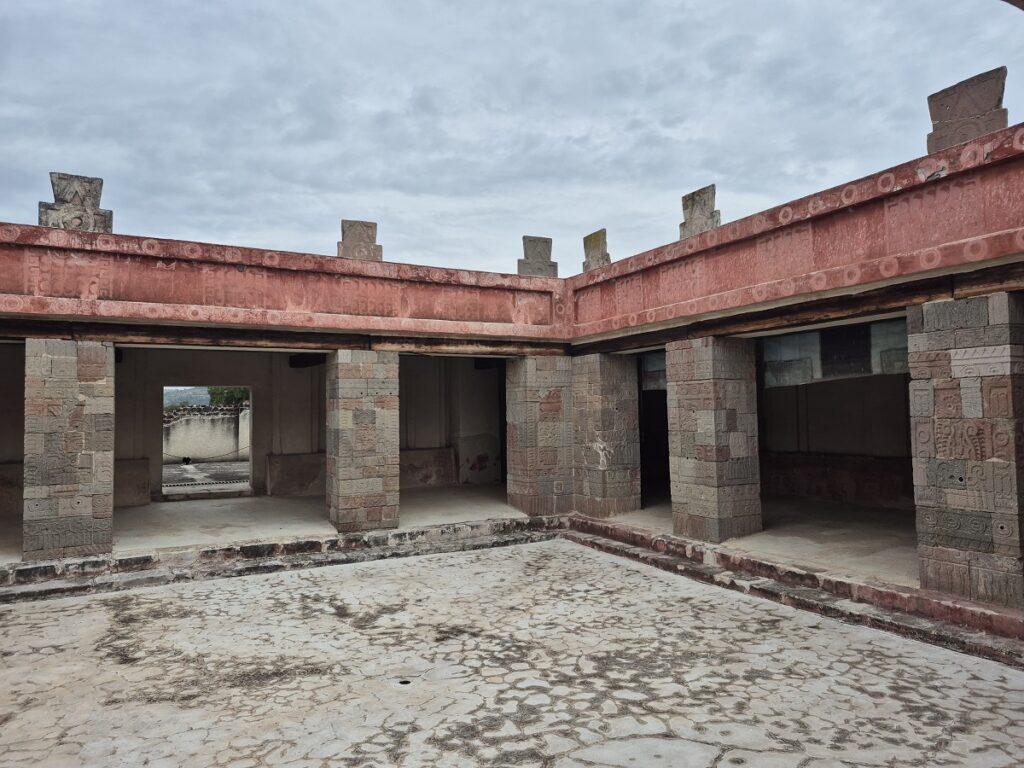
We also visited the Temple of Quetzalpapálotl, featuring carved stone pillars with motifs of butterflies and feathers — symbolic of transformation and divine power. Finally, we explored the Teotihuacan Museum, which explained the city’s urban planning, trade, religion, and mysterious collapse.
By 10:45 am, our tour was done. We reached Mexico City around 12:30 pm and had a quiet lunch.
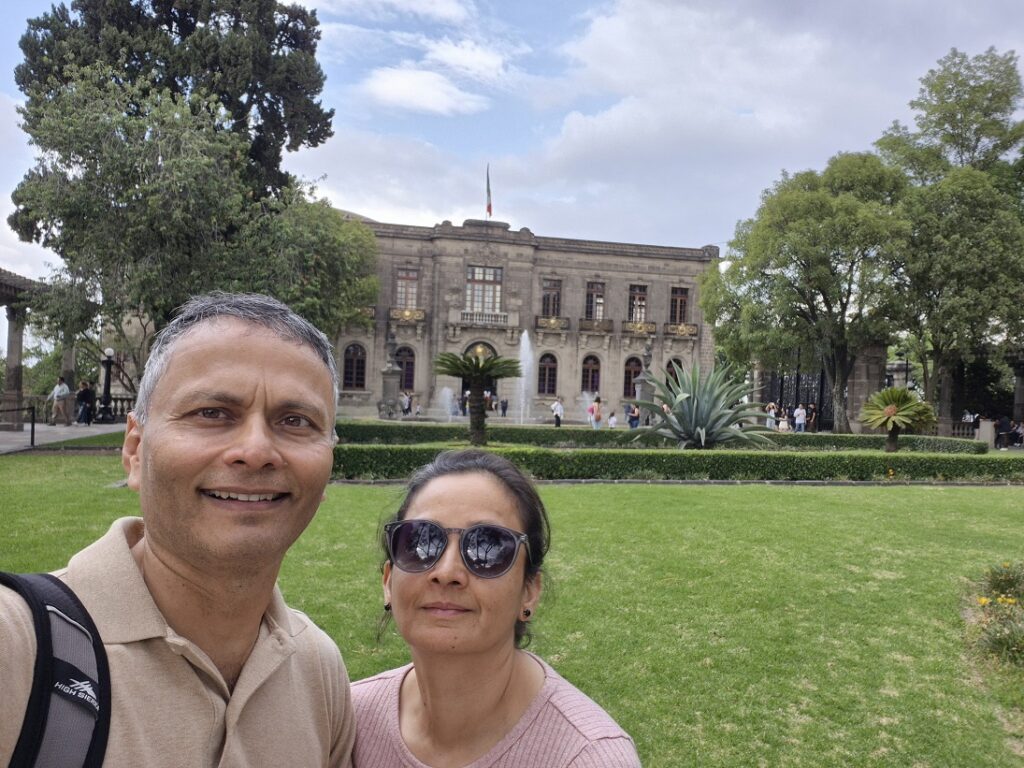
In the afternoon, we explored Chapultepec Castle, perched on a forested hill in the city’s enormous Chapultepec Park. Once the home of Emperor Maximilian I and several Mexican presidents, the castle is now a museum offering sweeping city views and insight into Mexico’s 19th-century history.
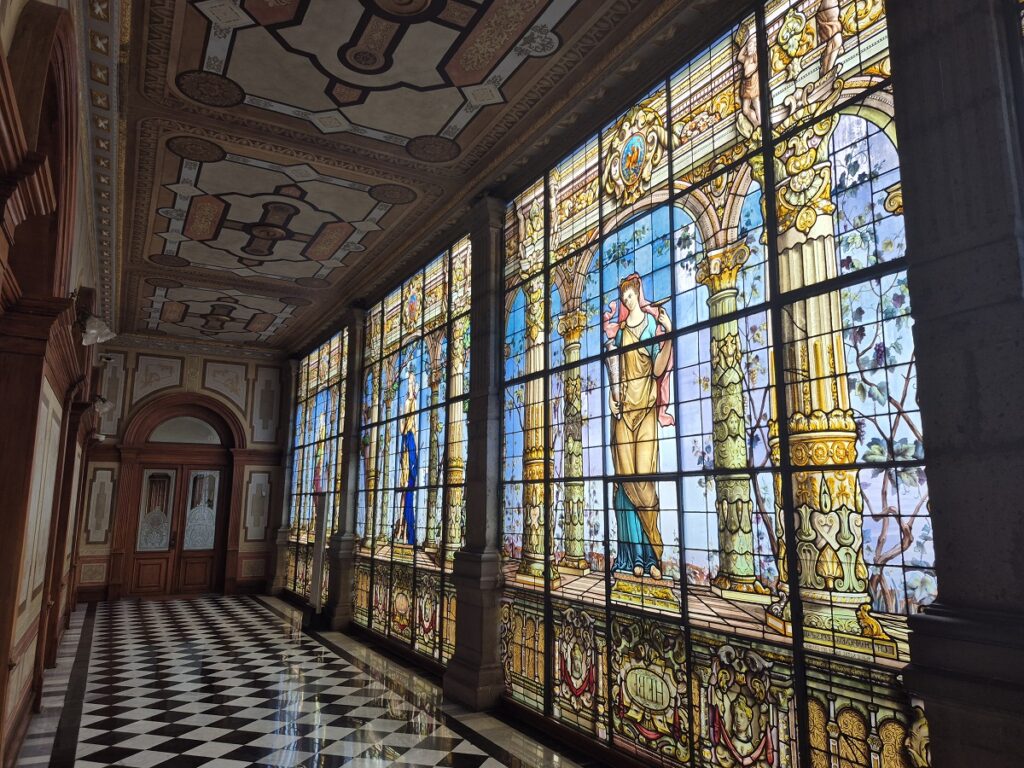

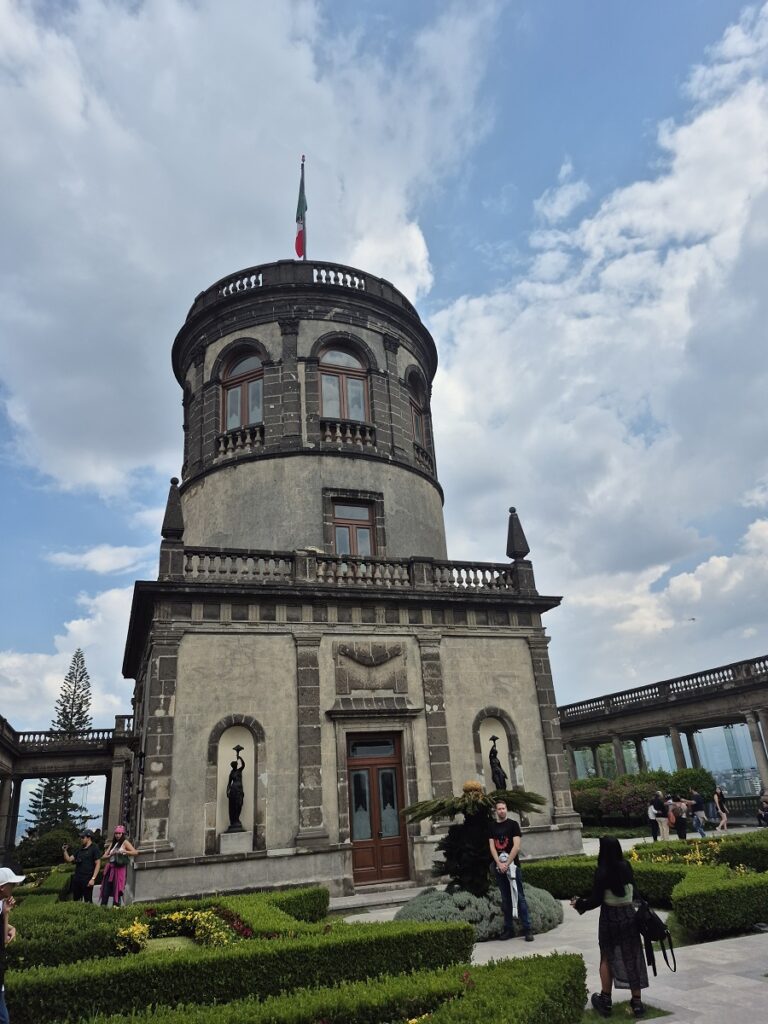
Chapultepec Castle, perched atop Chapultepec Hill in Mexico City, is the only royal castle in the Americas once inhabited by actual monarchs. Built in the 18th century, it served as the residence of Emperor Maximilian I and later as a presidential home. Today, it houses the National Museum of History, featuring elegant rooms, murals by famed Mexican artists like Orozco and Siqueiros, and sweeping views over the city.
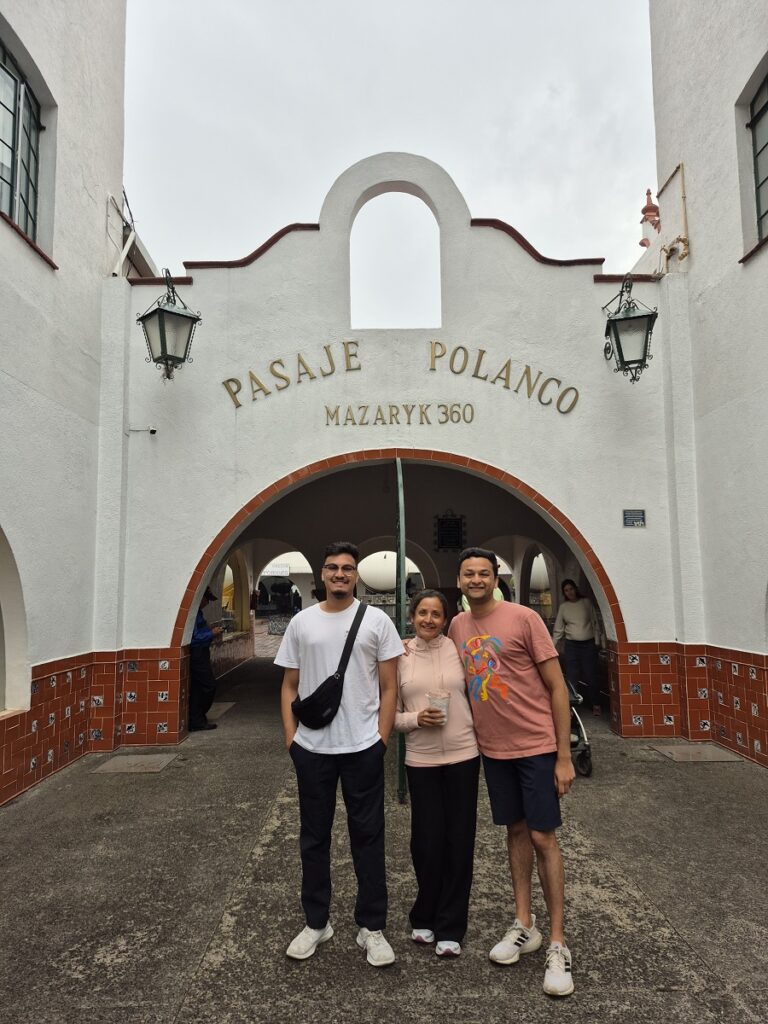
We ended our day strolling through Polanco, an upscale neighborhood lined with designer stores and leafy streets. After some time at a café, we returned to our Airbnb.
Dinner was low-key — Didi Eats delivered burritos for Aditya and Sahil, and panini sandwiches for Anu and me. We were asleep by 9:30 pm, grateful and content.
Day 4: Monday, May 26 – Mexico City
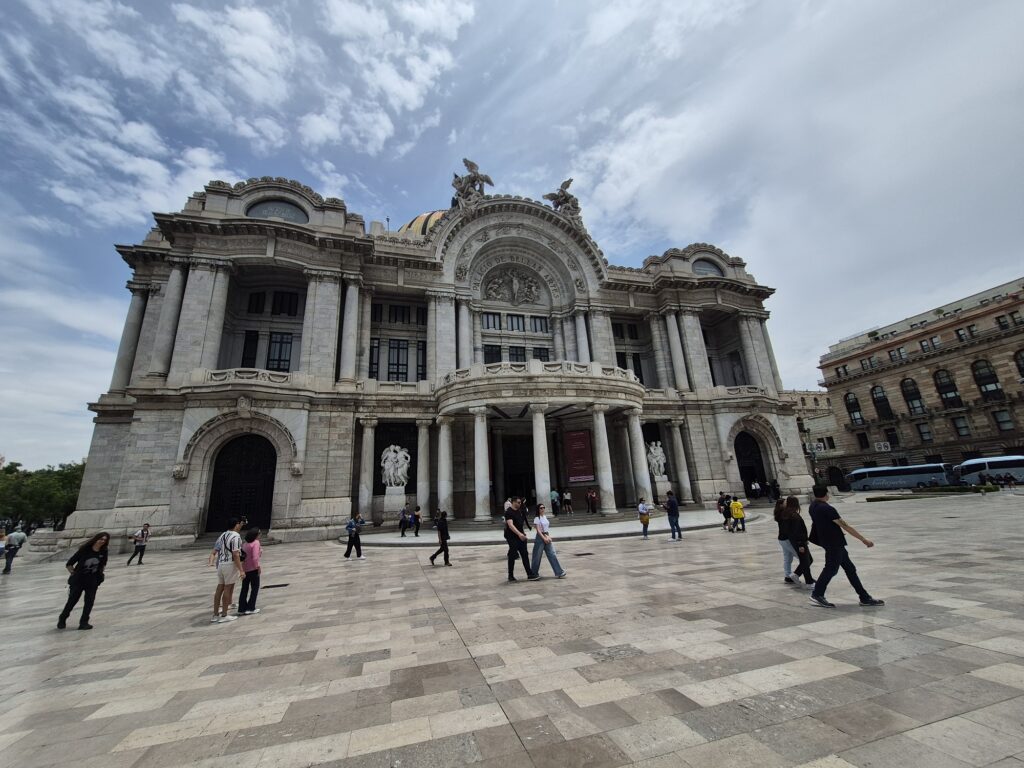
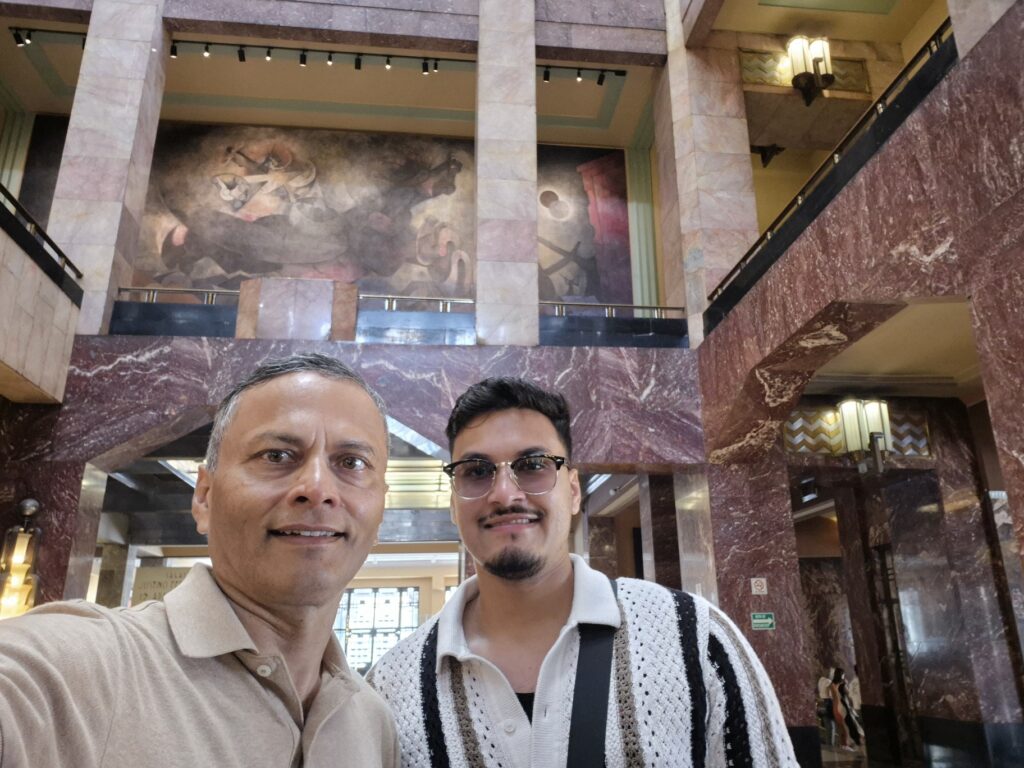
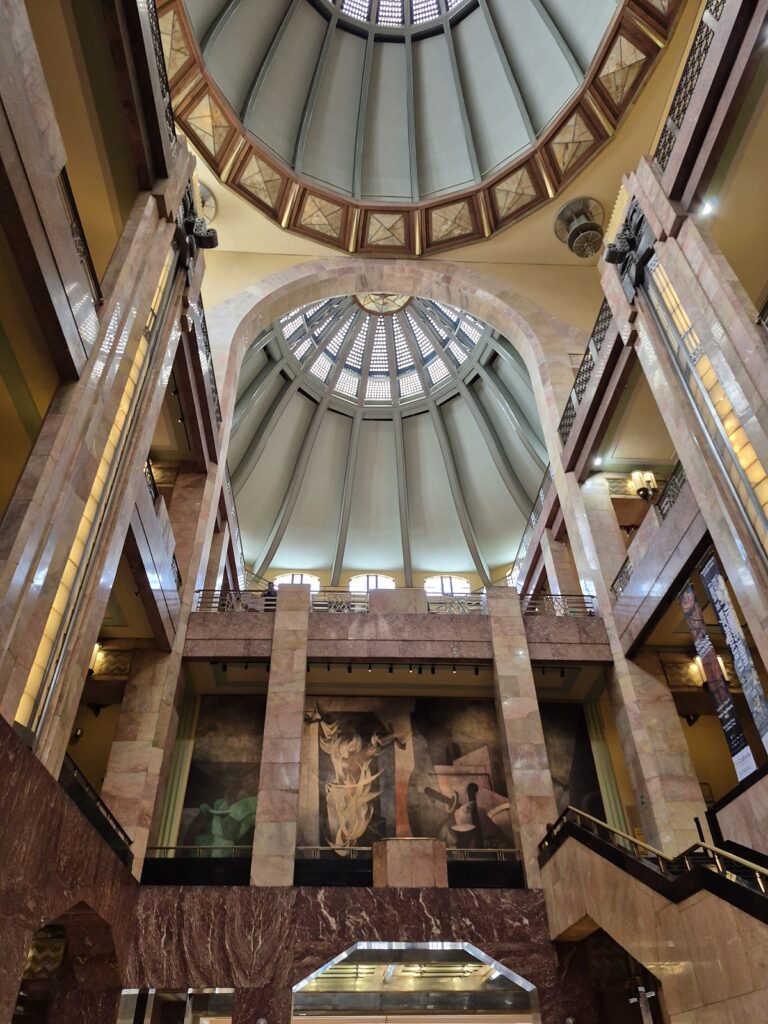
We started our day at leisure around 10 am. Our first destination was Palacio de Bellas Artes, a stunning performance theatre and cultural centre renowned for its murals by Diego Rivera and other prominent Mexican artists. The building showcases an Art Nouveau exterior and an Art Deco interior, and it regularly hosts ballet, opera, and art exhibitions.
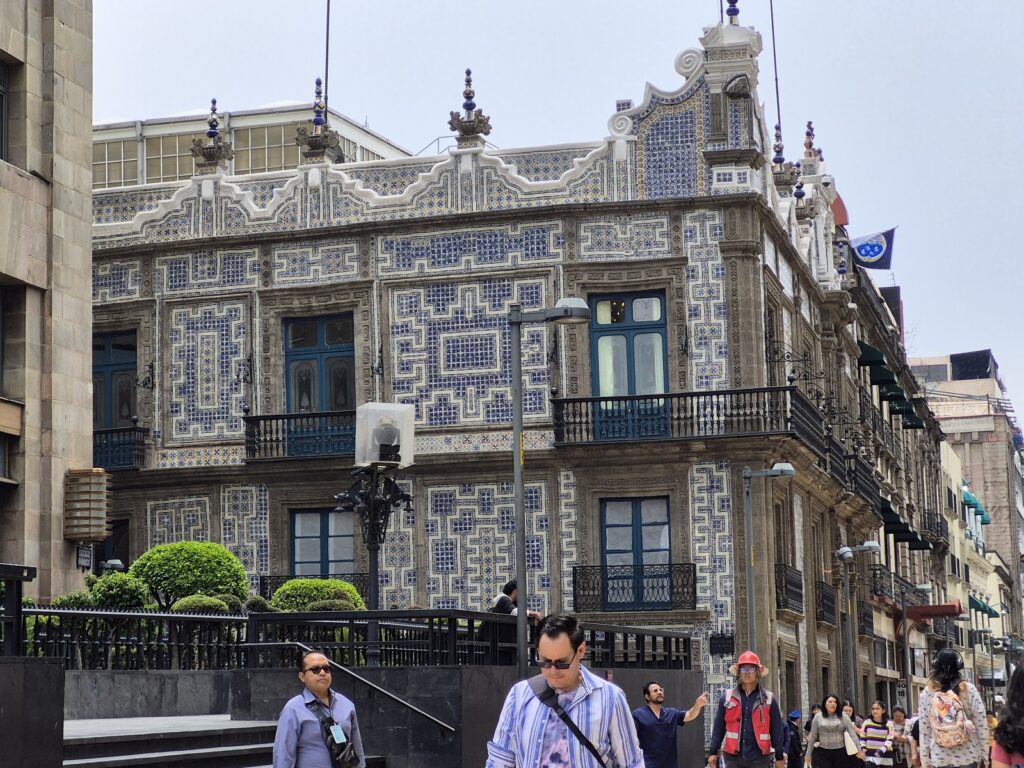
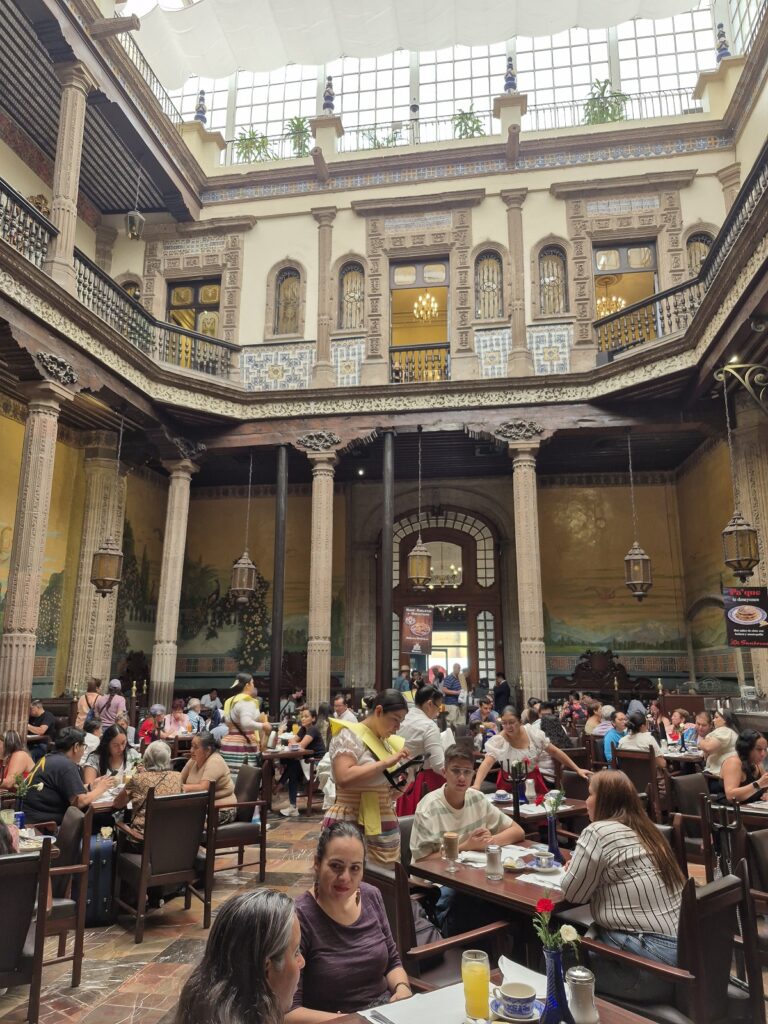
Next, we visited Casa de los Azulejos (The House of Tiles), a historic 18th-century Baroque palace built by the Count of the Valle de Orizaba family. Legend says the building was tiled with blue and white Talavera tiles to prove the owner’s wealth and social status after his father doubted his capabilities. This building now houses a branch of Sanborns restaurant chain, owned by billionaire Carlos Slim. Inside, there are eateries and cafes in a charming colonial courtyard.
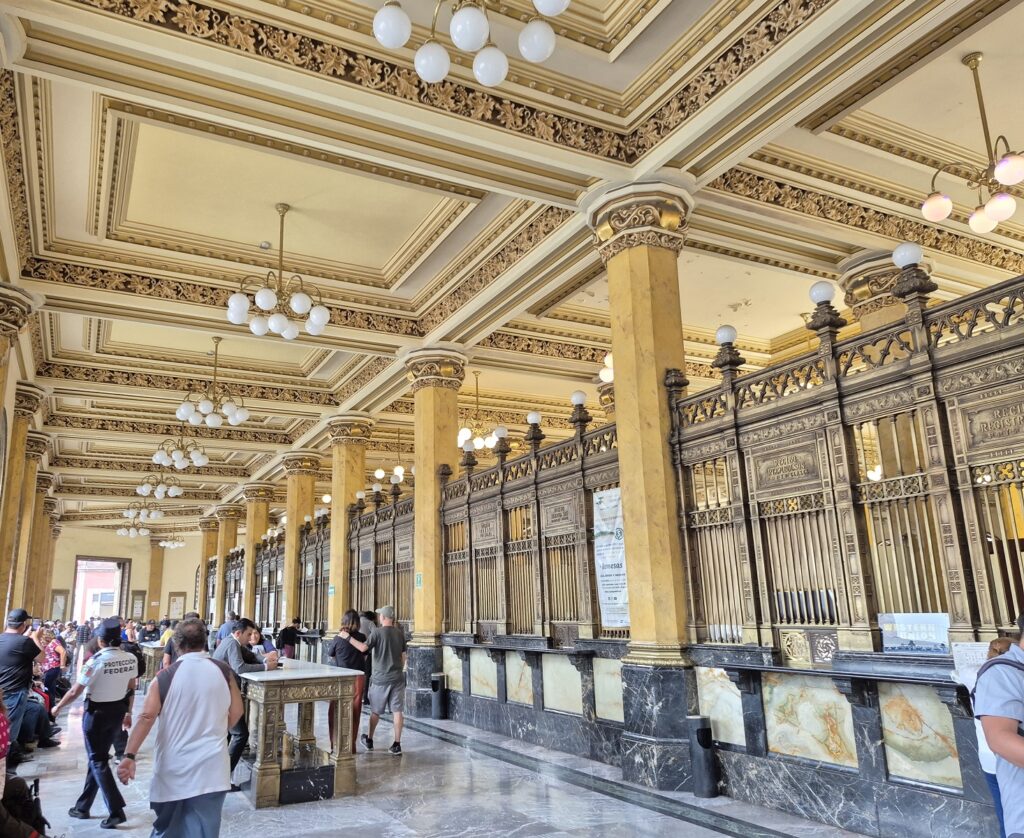
We made a brief stop at the Palacio Postal, Mexico City’s grand post office and an architectural gem. Built in 1907 in the European Beaux-Arts style, it features ornate ironwork, marble staircases, and a gilded interior. Unfortunately, the museum was closed as it was a Monday.
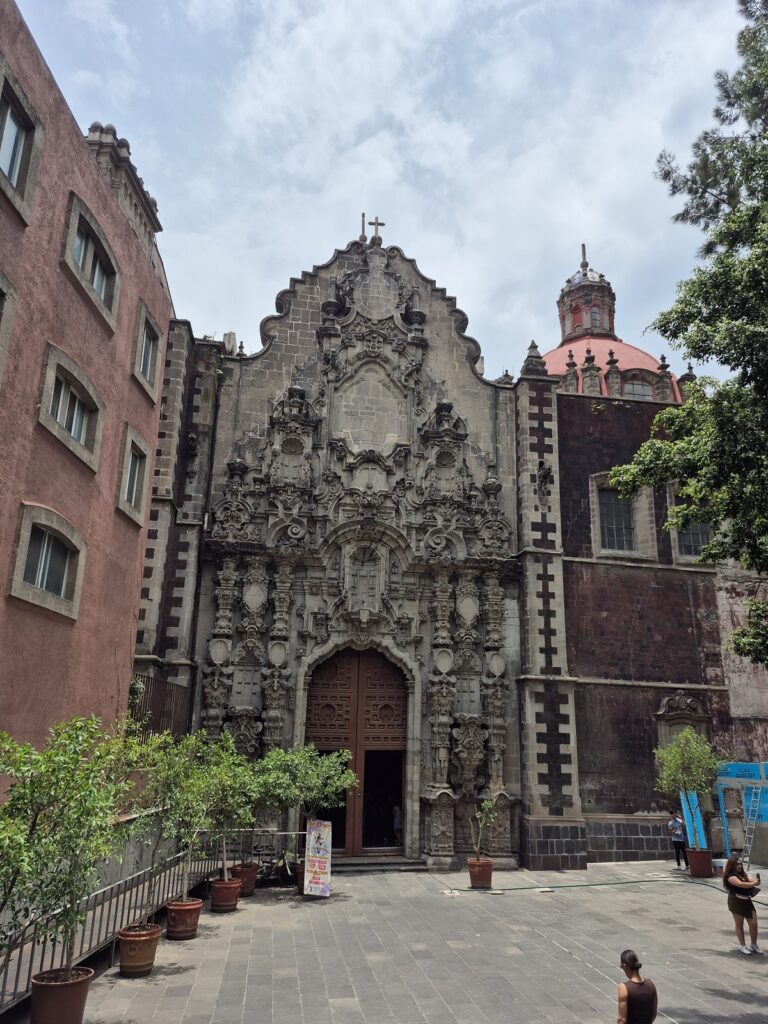
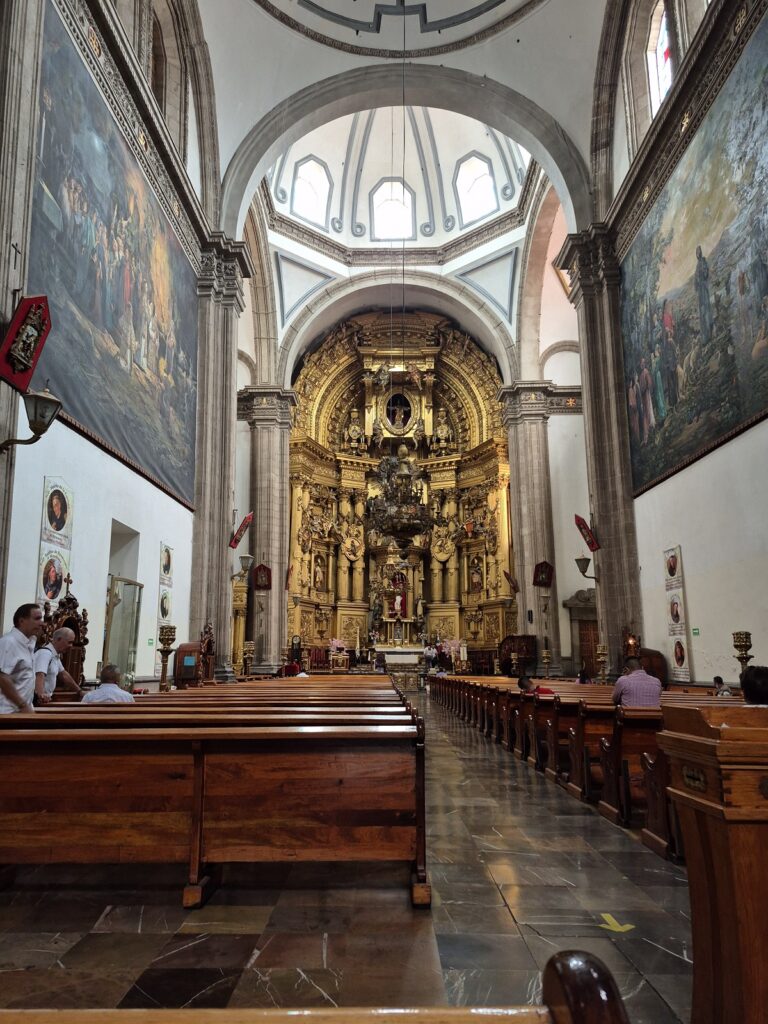
We also passed by the Church of San Francisco, the remnants of what was once one of the largest and most influential convents in Mexico City, established by Franciscan monks in the early 16th century, shortly after the Spanish conquest. Although most of the original complex was demolished during various urban redevelopments, the remaining church still retains elements of Colonial-era architecture, including a beautiful baroque façade and ornate interior. It continues to function as an active place of worship, offering a glimpse into the city’s deep religious and architectural history.
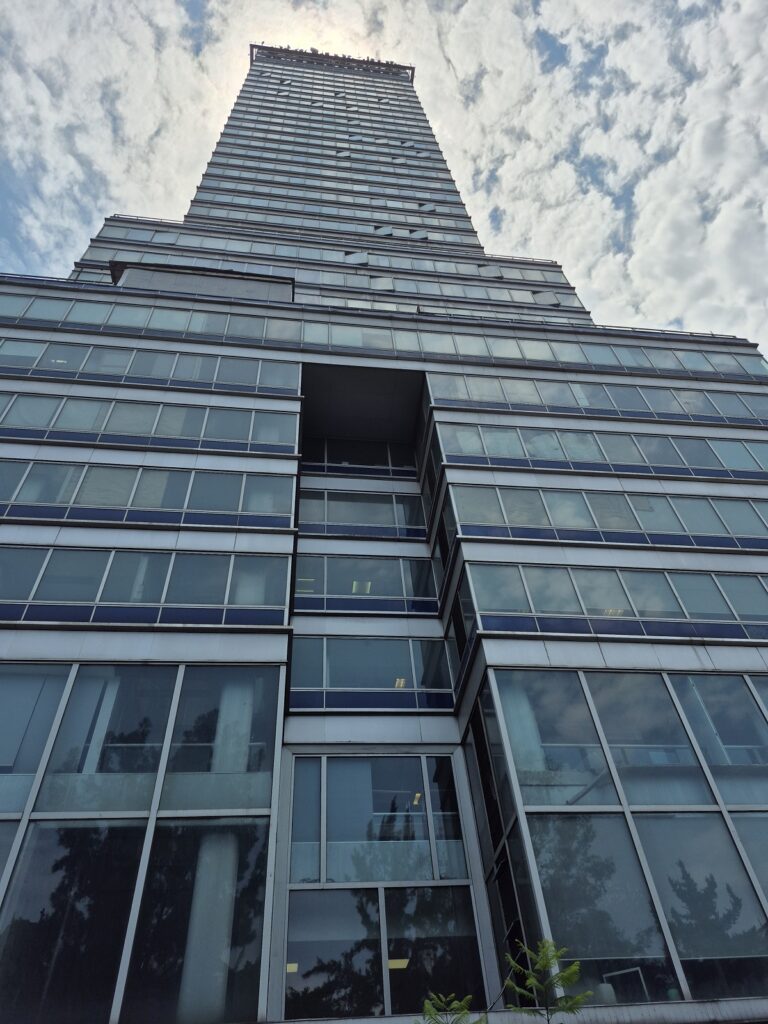
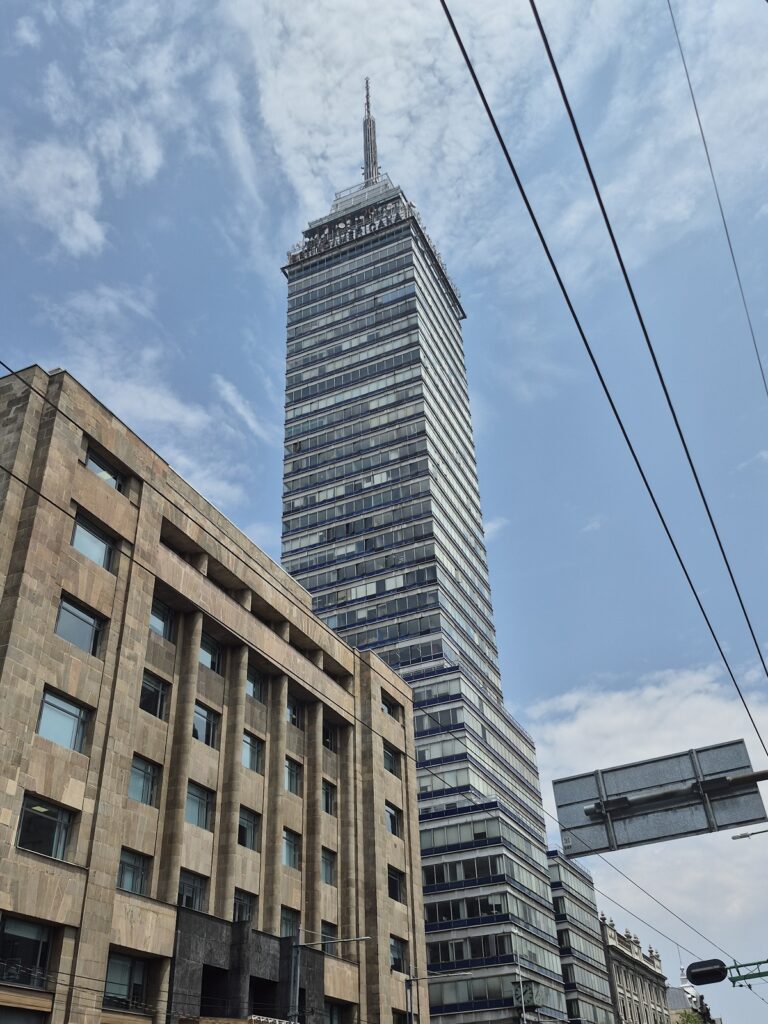
Our next highlight was Torre Latinoamericana, a 44-story skyscraper that stood as the tallest building in Latin America upon its completion in 1956, rising to 214 meters (702 ft). Remarkably, it retained this title until 1982, symbolising Mexico City’s post-war modernisation and resilience in a seismic zone. We took the elevator to the observation deck on the 44th floor. Despite being modest in height compared to skyscrapers in Dubai or Shanghai, it offers panoramic views of Mexico City. However, the slow ticketing process meant empty elevators and a relatively quiet observation area.
Throughout the Centro area, we noticed organilleros – traditional organ grinders dressed in beige uniforms, playing hand-cranked barrel organs. These street performers are a nostalgic symbol of Mexico City’s urban culture.
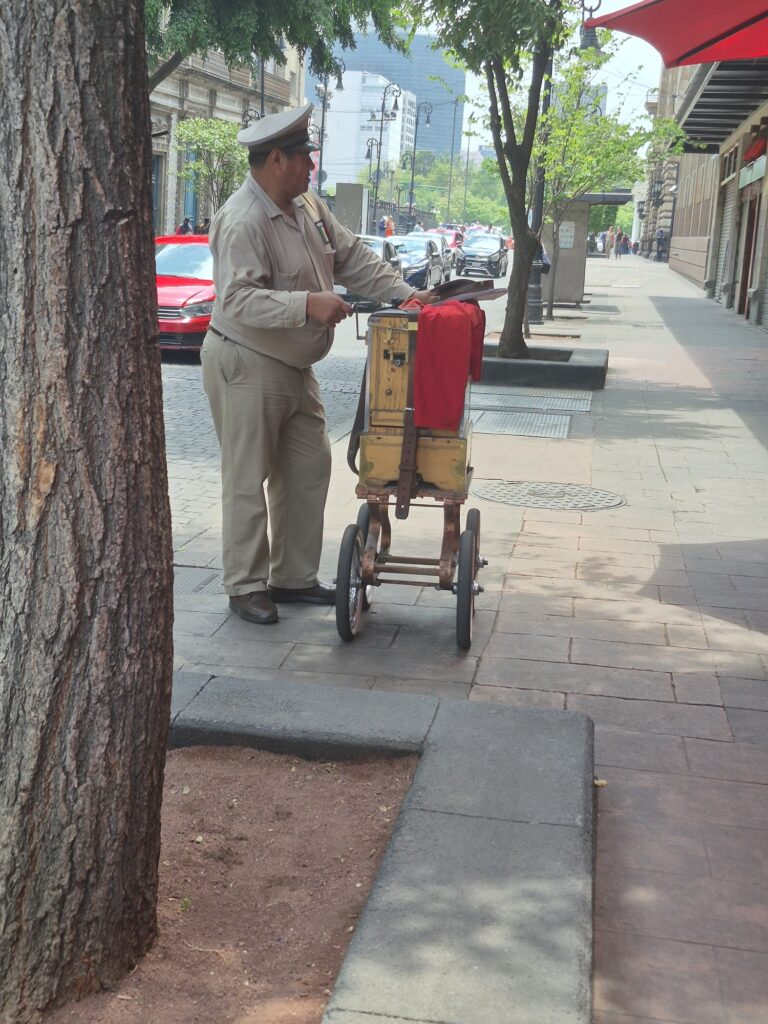
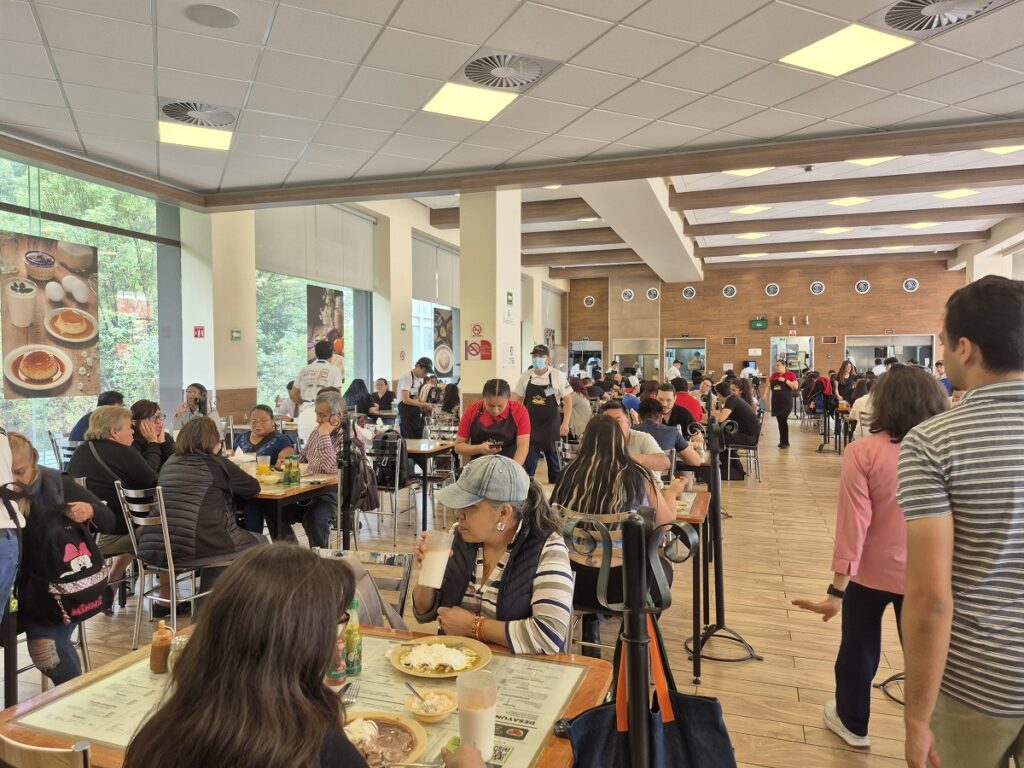
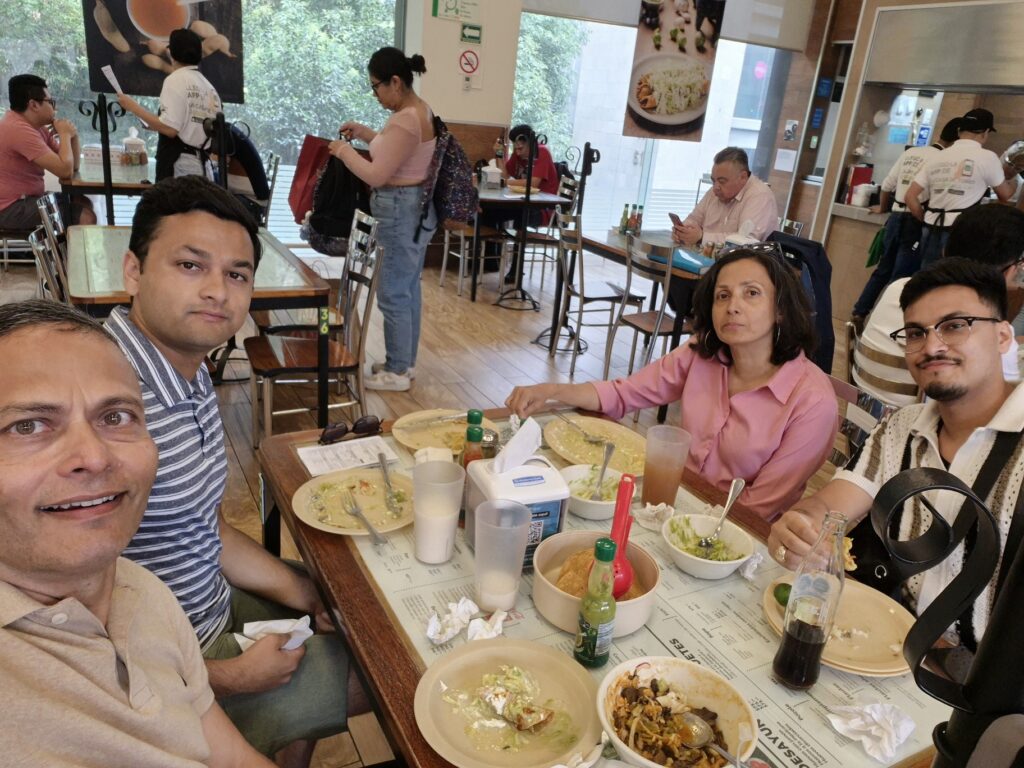
Lunch was at La Casa de Toño, a bustling and authentic Mexican eatery popular with locals. We had pozole (a hominy stew), tacos, and horchata, a sweet rice milk drink. It reminded us of Vaishali in Pune, with fast service and high turnover.
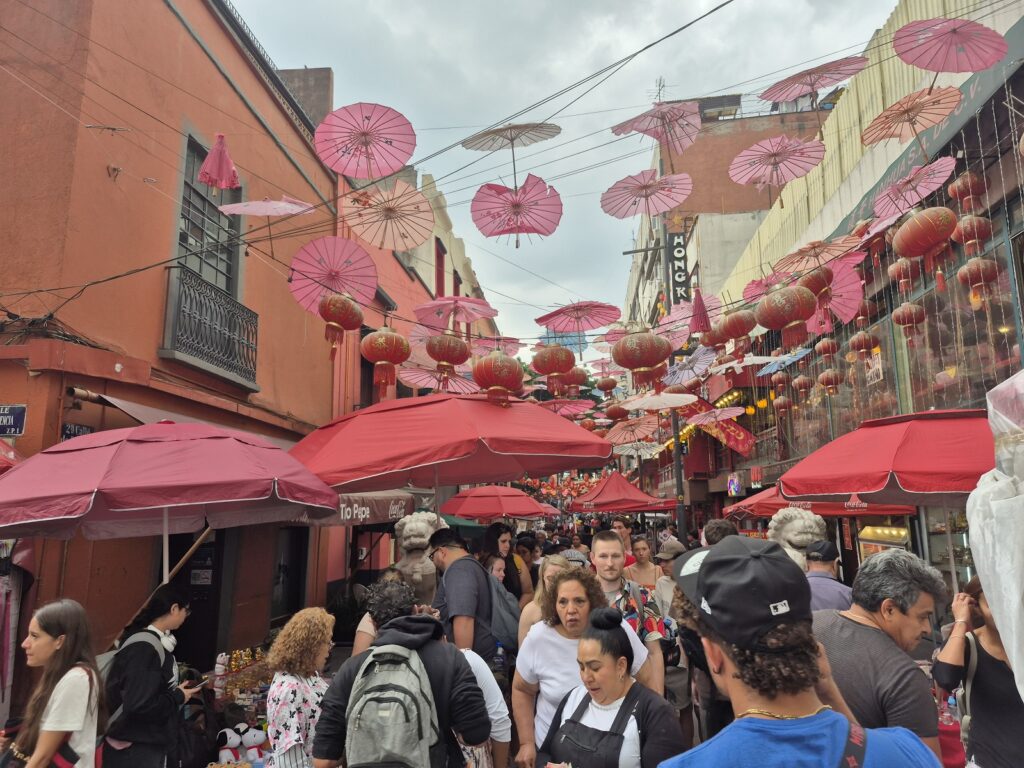
Later, we wandered into Mexico City’s small but lively Chinatown, a short pedestrian stretch filled with lanterns, Asian eateries, and street vendors.
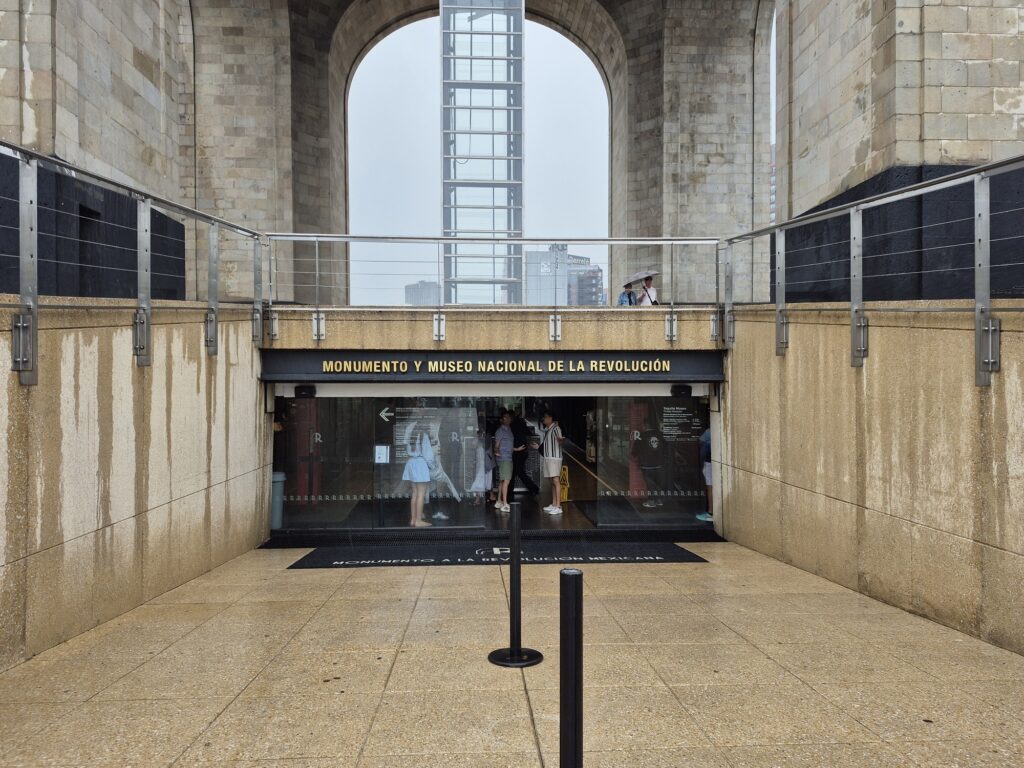
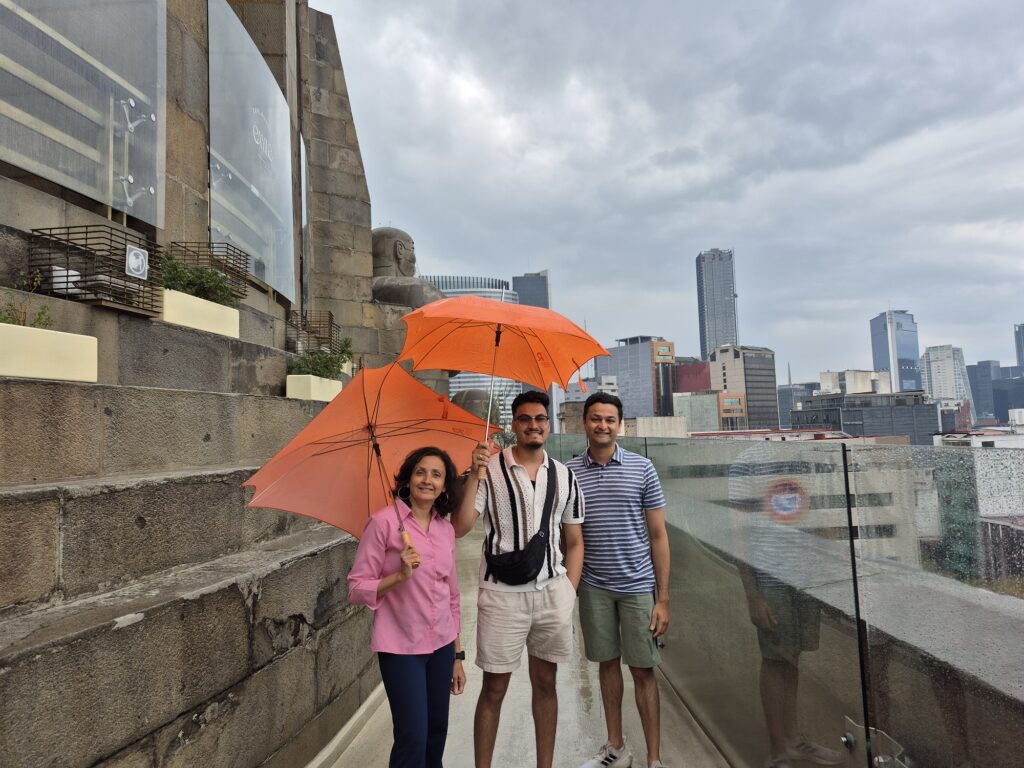

We then visited the Monumento a la Revolución, an iconic dome structure that was originally intended to house Mexico’s new parliament in 1910. Construction was abandoned with the outbreak of the Mexican Revolution, and in 1938, the unfinished building was transformed into a monument commemorating the revolution. Today, it also serves as a mausoleum for revolutionary heroes, and houses both a museum and an observation deck offering sweeping city views..
Our final attraction was Museo Soumaya, a striking, futuristic-looking museum with a shimmering, hexagonal-tiled exterior.
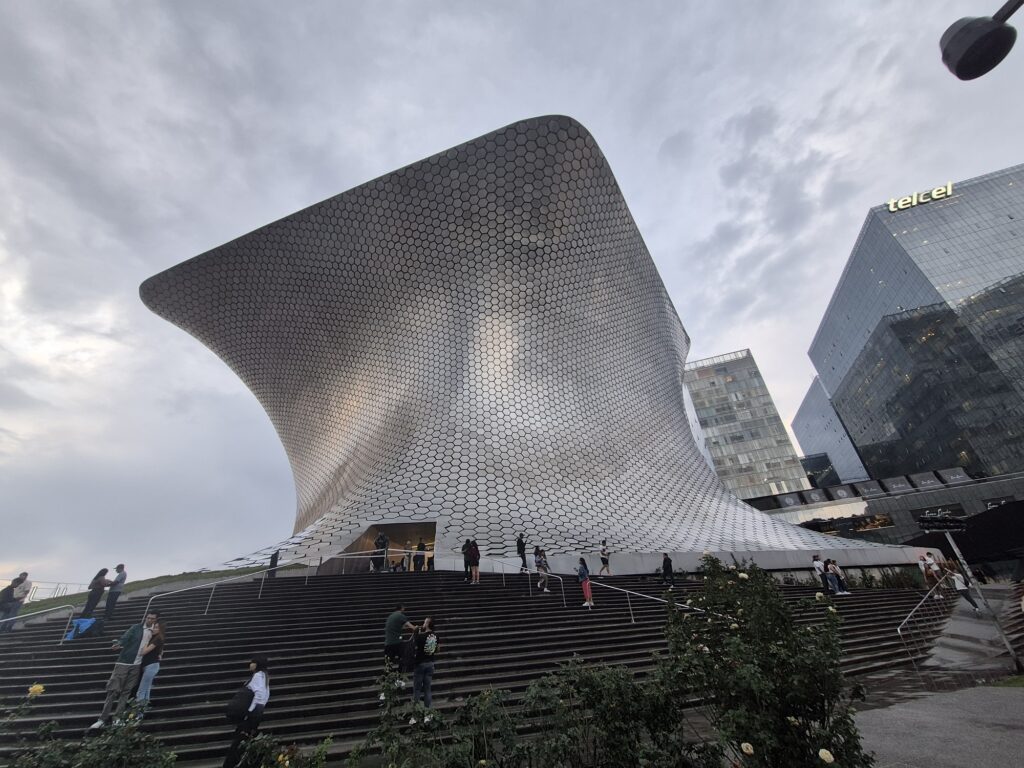
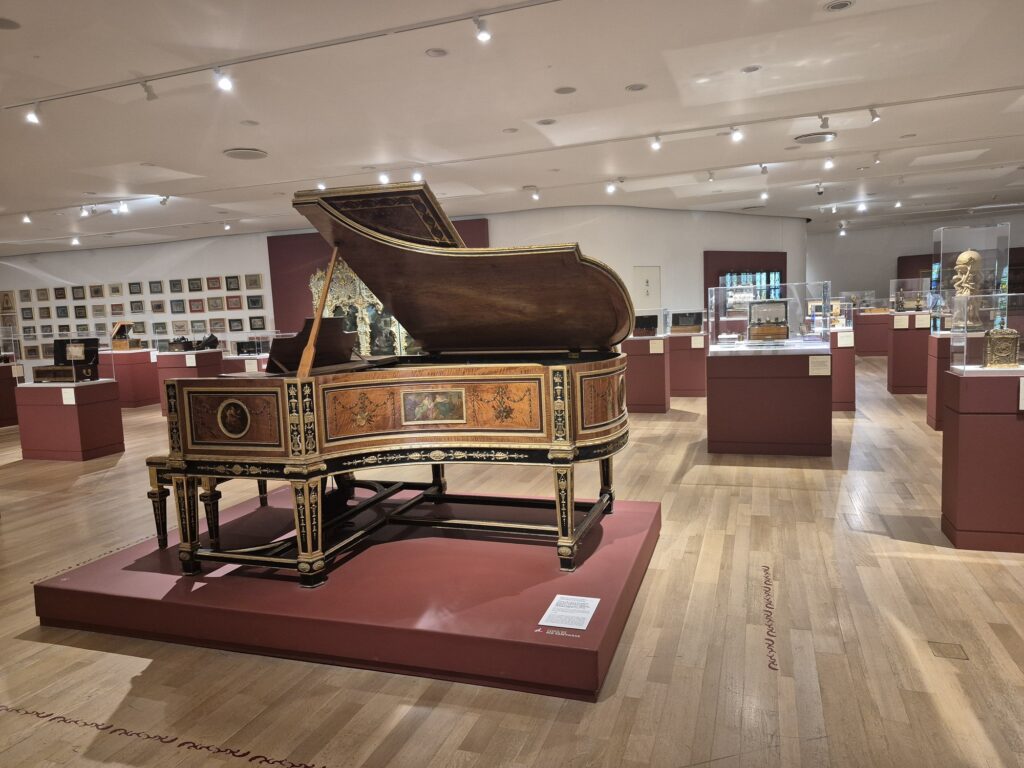
It houses the private art collection of Carlos Slim, one of the richest men in the world, and is named in memory of his late wife, Soumaya Domit. The museum’s six floors span a wide range of art — from ancient Mesoamerican artefacts to European masterpieces. Highlights include works by Van Gogh, Rodin, and Dalí, with one of the world’s largest collections of Rodin sculptures outside of France. The fifth floor was particularly impressive, showcasing an array of Renaissance, Baroque, and Impressionist works that made it feel like stepping into a European gallery.
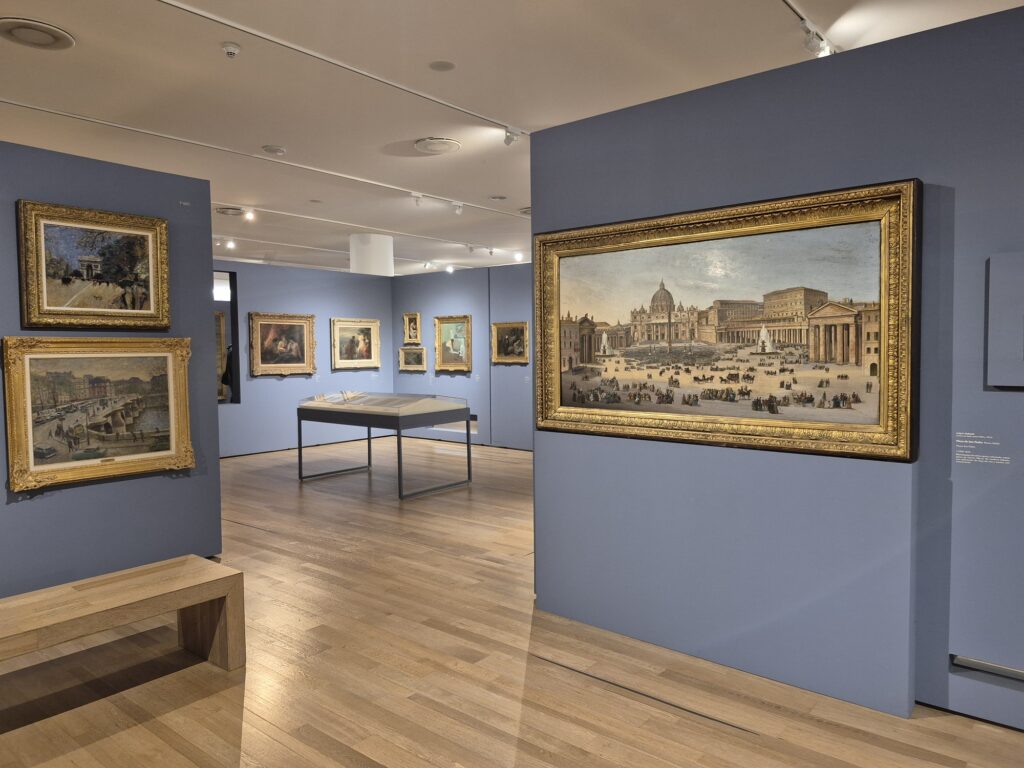
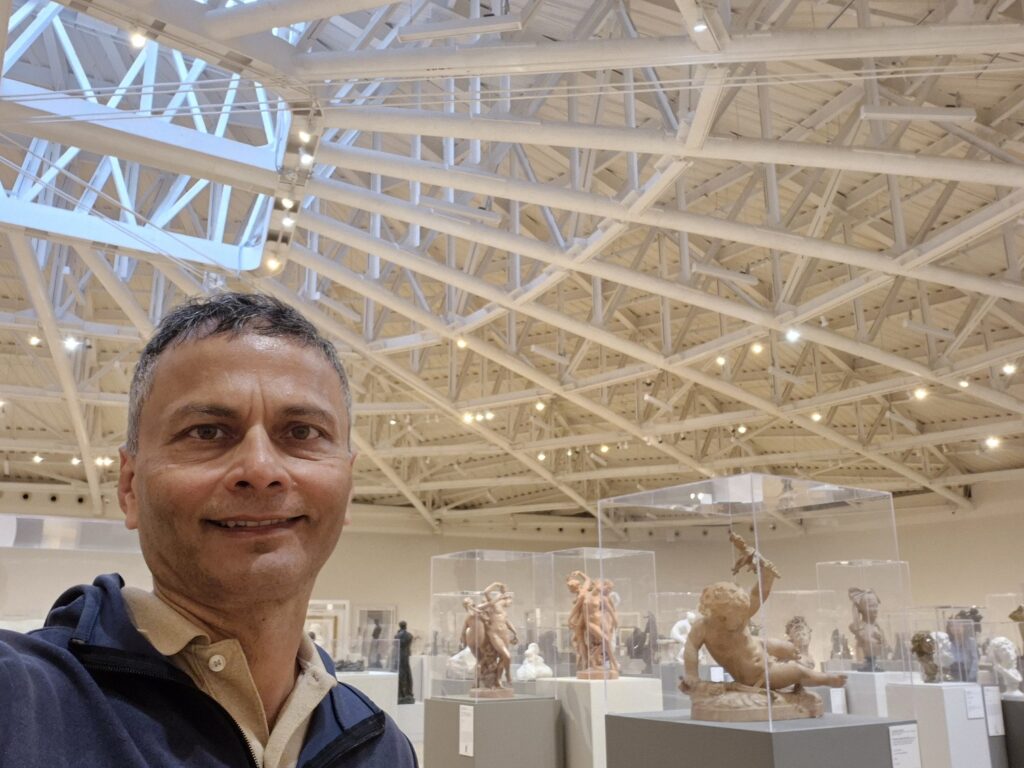
That evening, Aditya and Sahil, who had an early flight the next day, joined us for a special dinner at Lardo’s in the Condesa neighbourhood. This upscale spot served modern Mediterranean cuisine. Our reservation was at 8:30 pm, and we wrapped up the evening by 10 pm, packed, and went to sleep by 10:30 pm
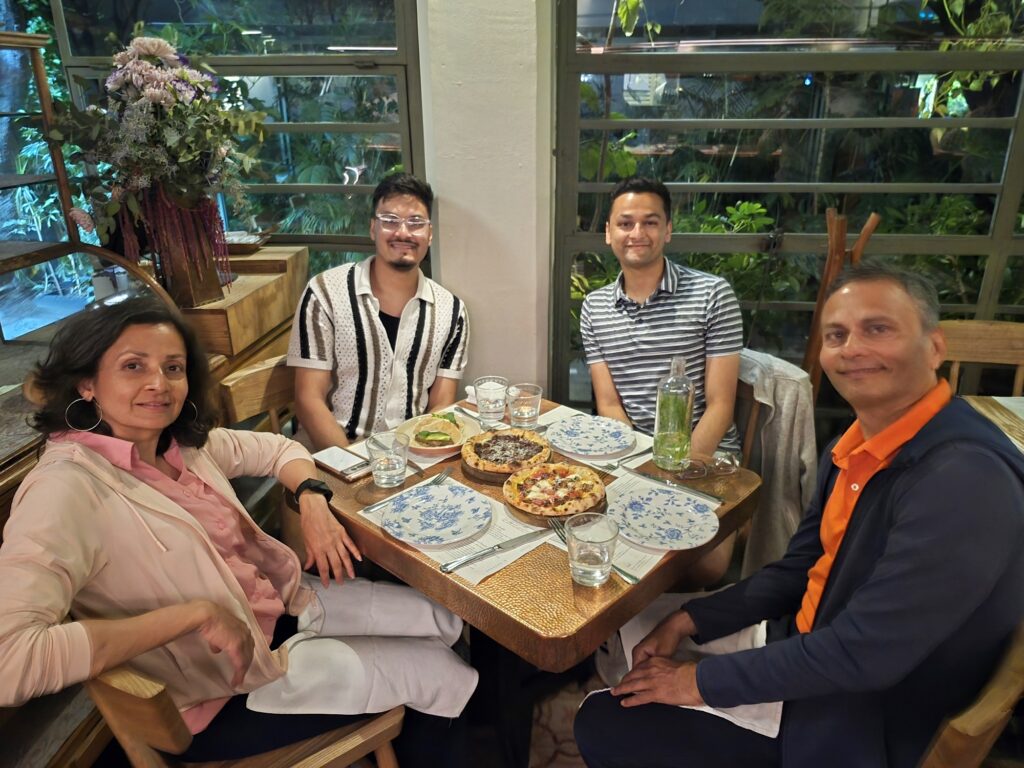
Day 5: Tuesday, May 27 – Oaxaca
Aditya and Sahil left at 3 am for their 5 am flight. Anu and I had a later flight at 11:45 am and departed our Airbnb at 9 am. We flew Volaris from Mexico City to Oaxaca, arriving around 1 pm. From the airport, we took a local taxi to our hotel Santa Rosa, for about $25, as Uber and Didi weren’t available in Oaxaca.
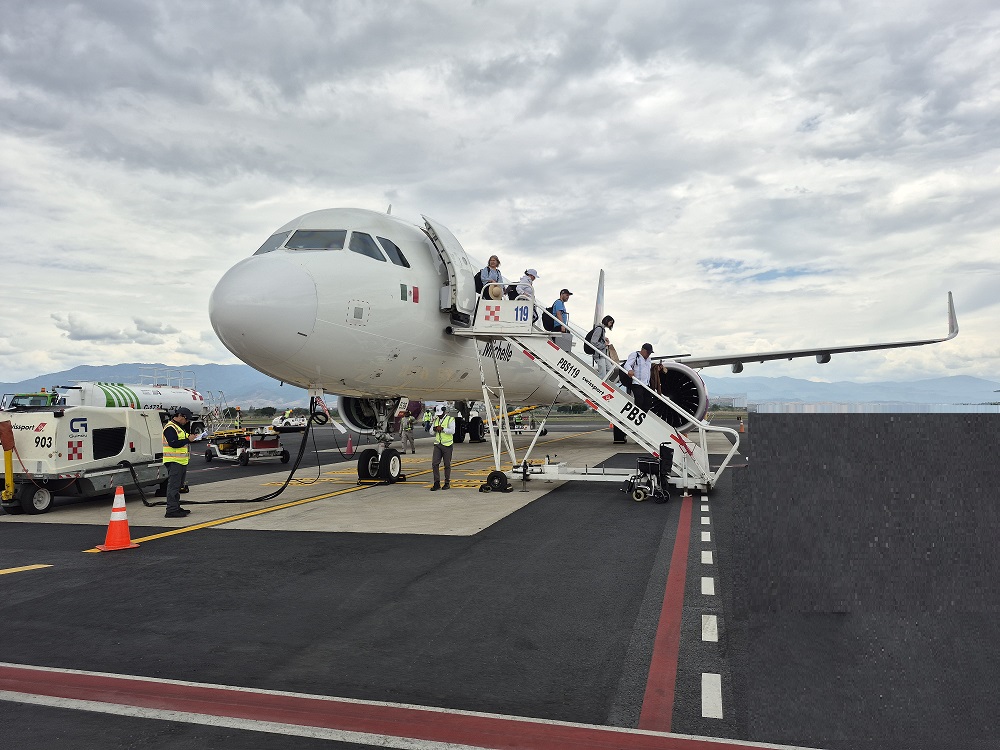
Our afternoon was dedicated to visiting Monte Albán, a majestic Zapotec archaeological site that was continuously inhabited from around 500 BC to 800 AD.
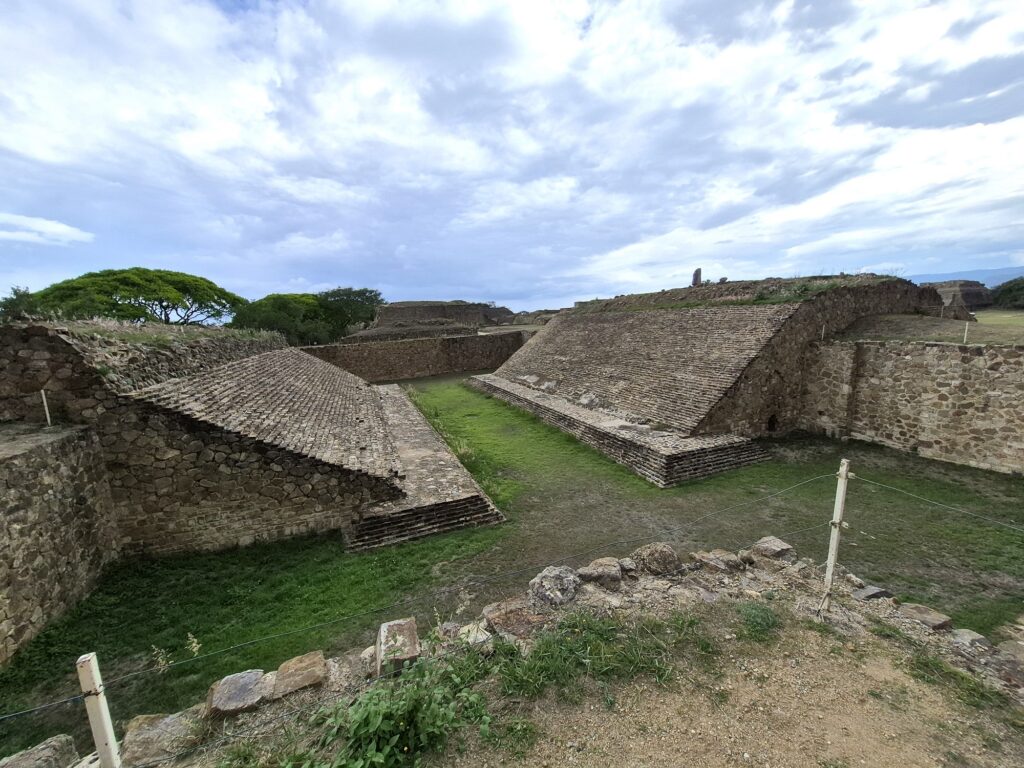
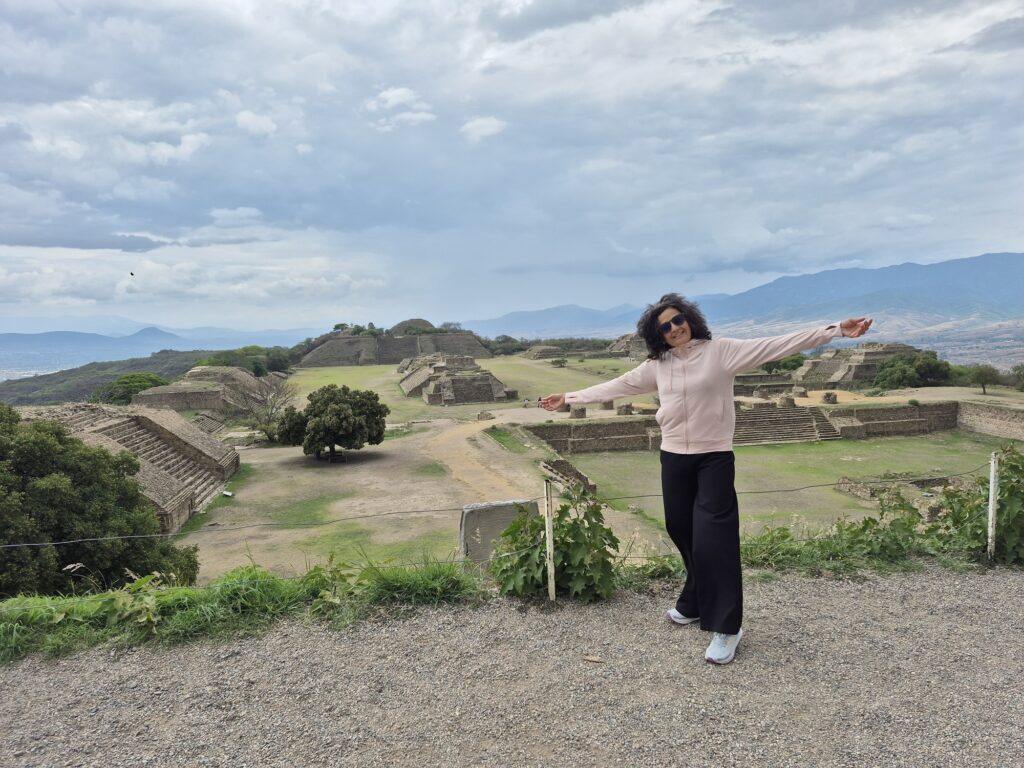
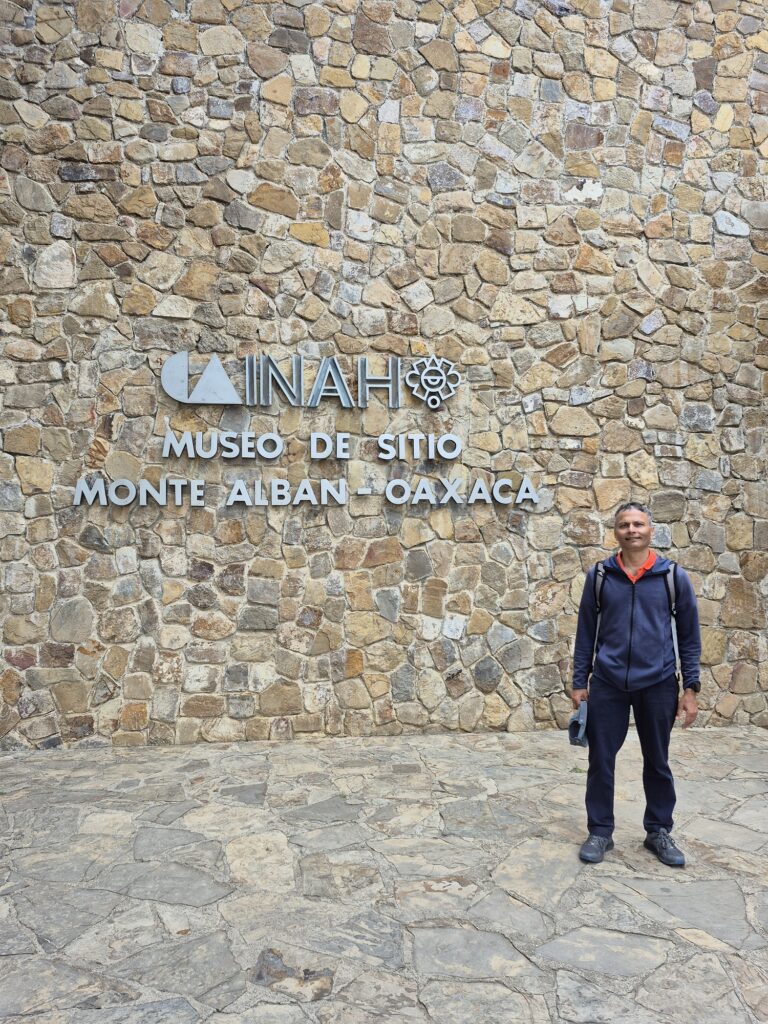
Perched atop a flattened hilltop 400 meters above the Oaxaca Valley, the site provides panoramic views of the surrounding landscape, making it both strategically and spiritually significant. Monte Albán was the first major urban center in Mesoamerica and served as the political, economic, and religious capital of the Zapotec civilization. The expansive site features grand pyramids, ceremonial terraces, elaborate tombs, and one of the oldest known ball courts in Mesoamerica. Intricate carvings, known as Danzantes, can be seen on some stones, thought to represent ritual sacrifices or captured enemies. The combination of architecture and symbolism reflects the site’s enduring power and sophistication.
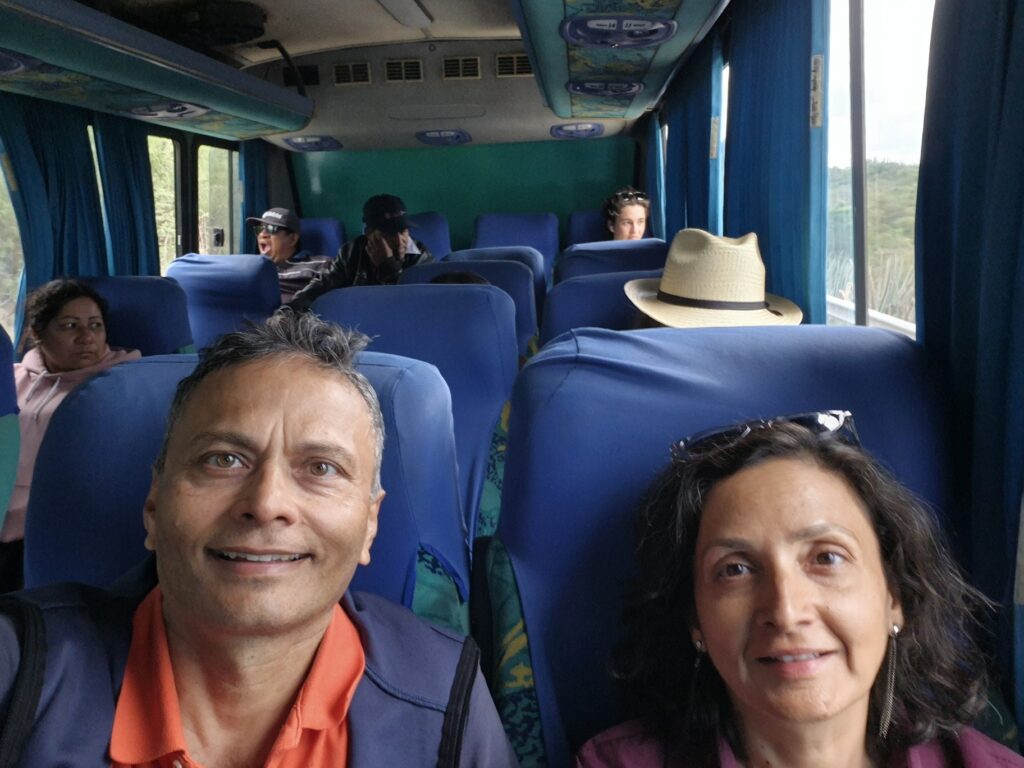
We returned by a local bus (60 pesos or ~$3/person) and arrived back by 5:30 pm.
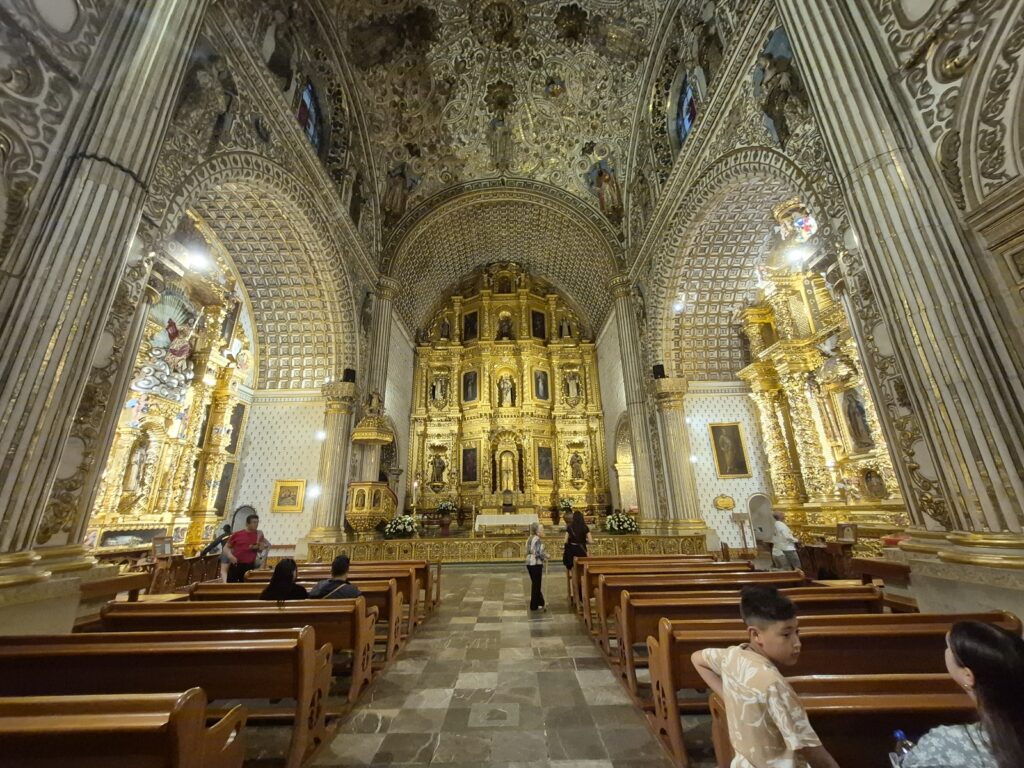
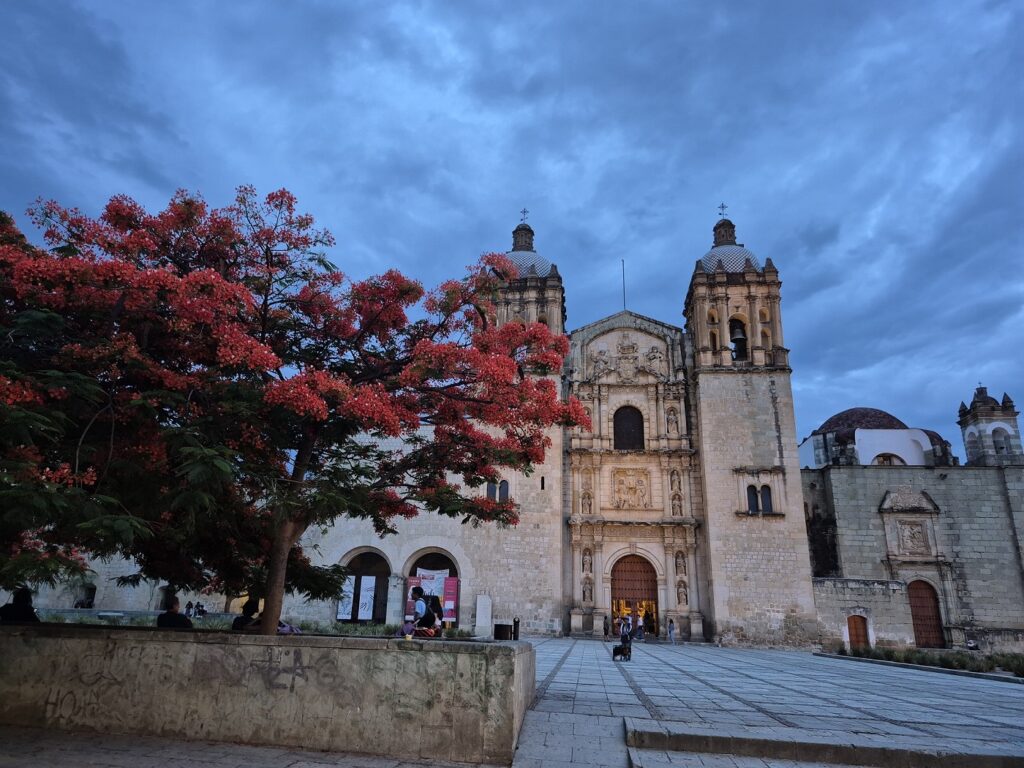
In the evening, we explored Oaxaca’s historic center. Zócalo Square was just 100 meters from our hotel. We also visited the Metropolitan Cathedral and the stunning Santo Domingo Church, a Baroque gem with golden interiors and beautifully maintained grounds.
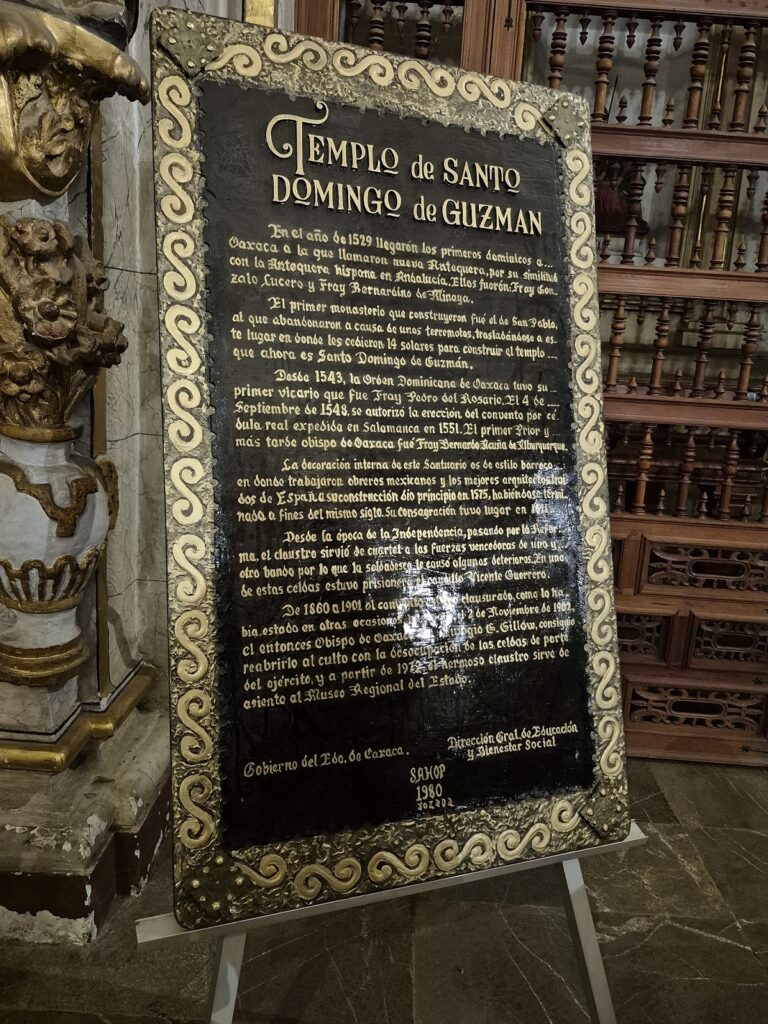
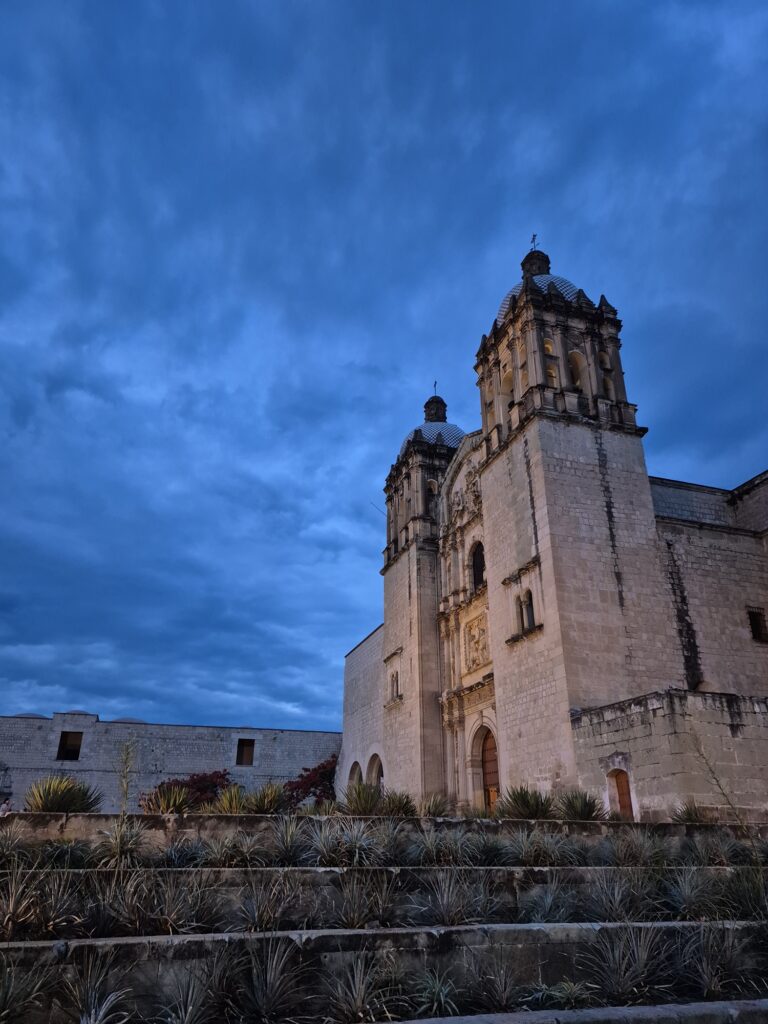
The atmosphere in Oaxaca Centro was magical – charming walking streets, open plazas, cafes, and beautiful blooming Gulmohar trees. We tasted Esquites con patitas, roasted corn topped with cheese, chili, and lime (40 pesos). Dinner was at a local Italian restaurant where the wood-fired pizza was outstanding. We walked back to our hotel and slept by 9:30 pm.
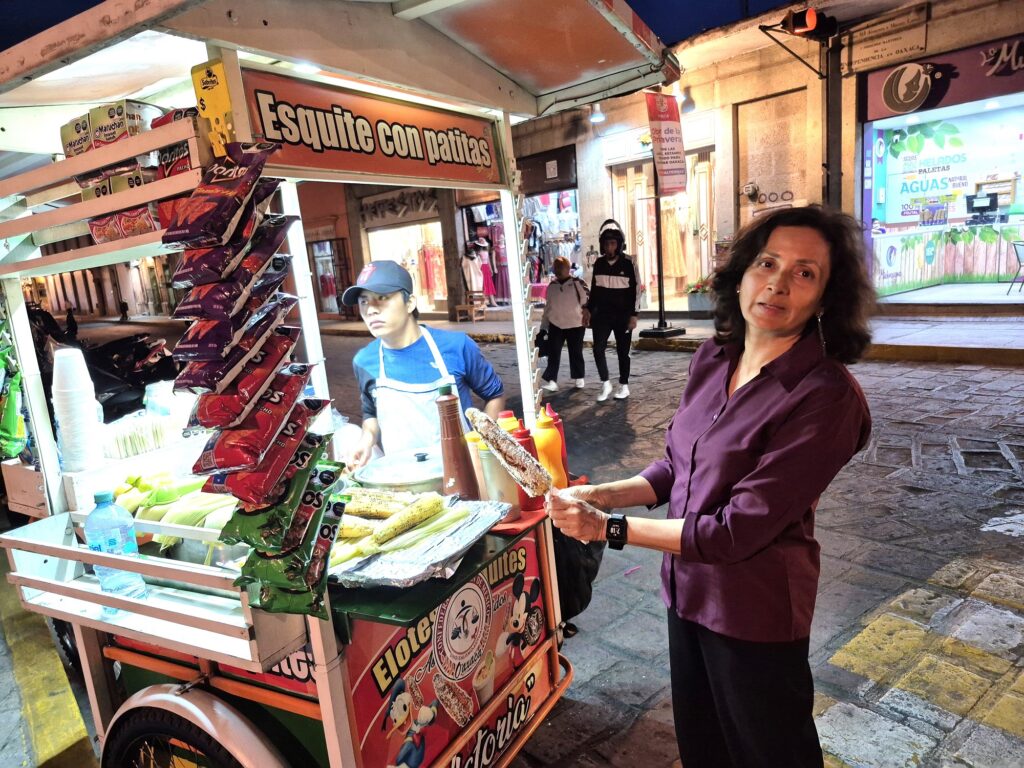
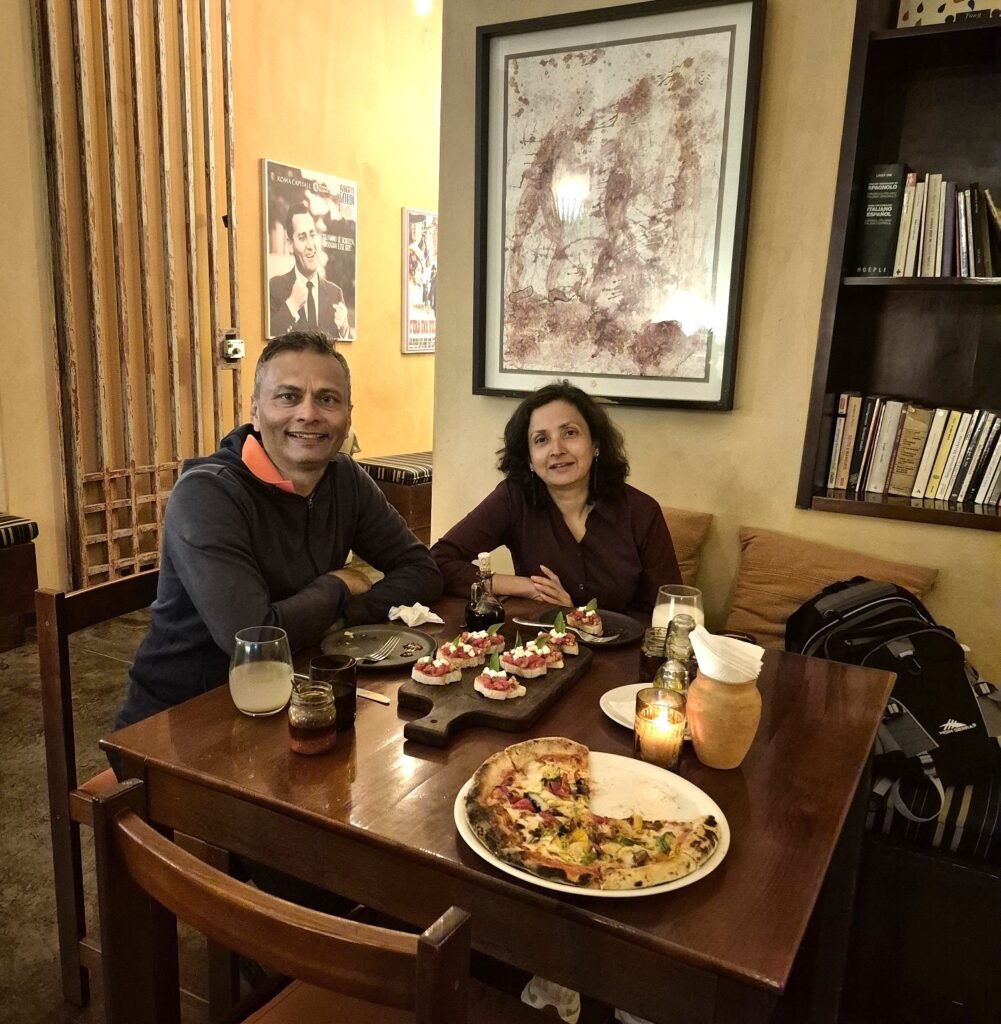
Day 6: Wednesday, May 28 – Oaxaca and Surroundings
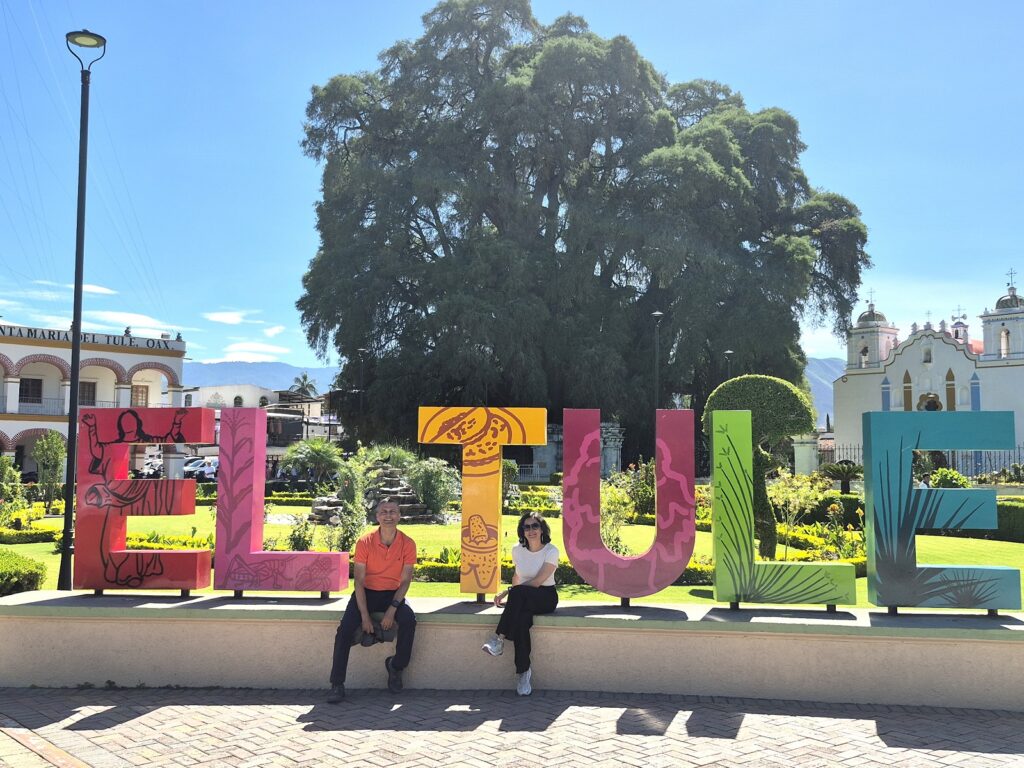
Our guided tour started around 8:30 am with our guide Cristina. The first stop was El Tule in Santa Maria del Tule, home to a 2,000-year-old Montezuma cypress tree, said to be the widest in the world with a circumference of 58 meters. It is next to the town hall and church.
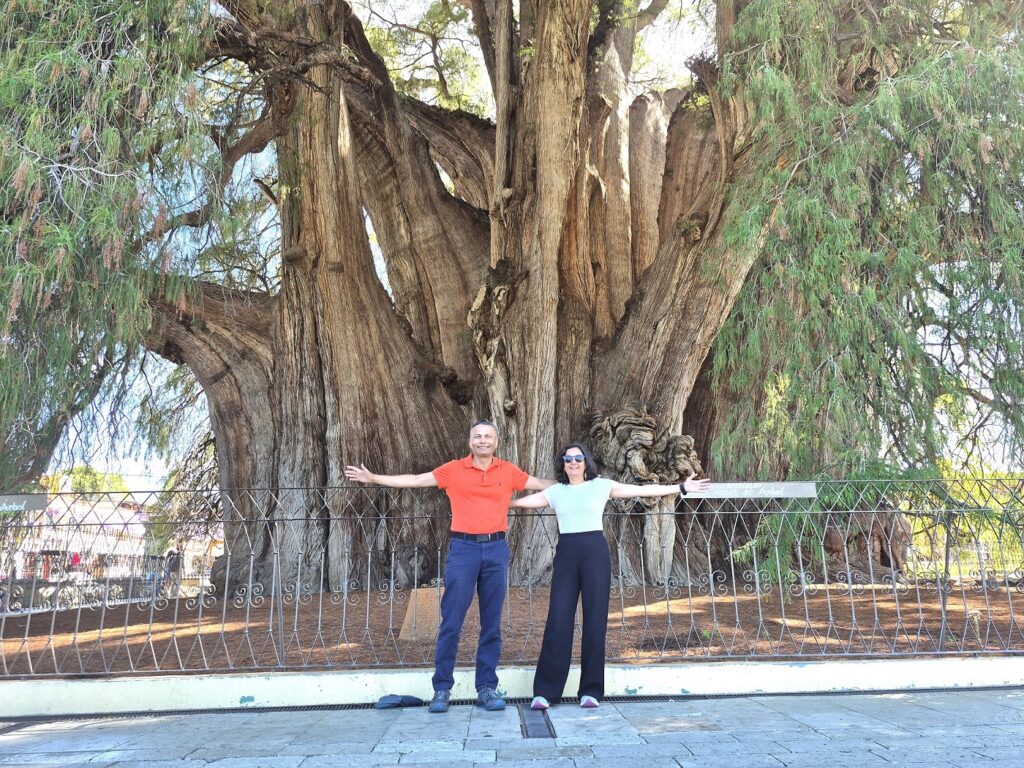
At the location of the cypress tree, we also tried two local drinks from a street vendor. One was tejate, a chocolate-like drink made from fermented corn and cacao, traditionally served cold. The other was chilacayota, made from boiled squash. Each cost around 30 pesos (about ₹120) and came in large servings — both were refreshing and quite unique.
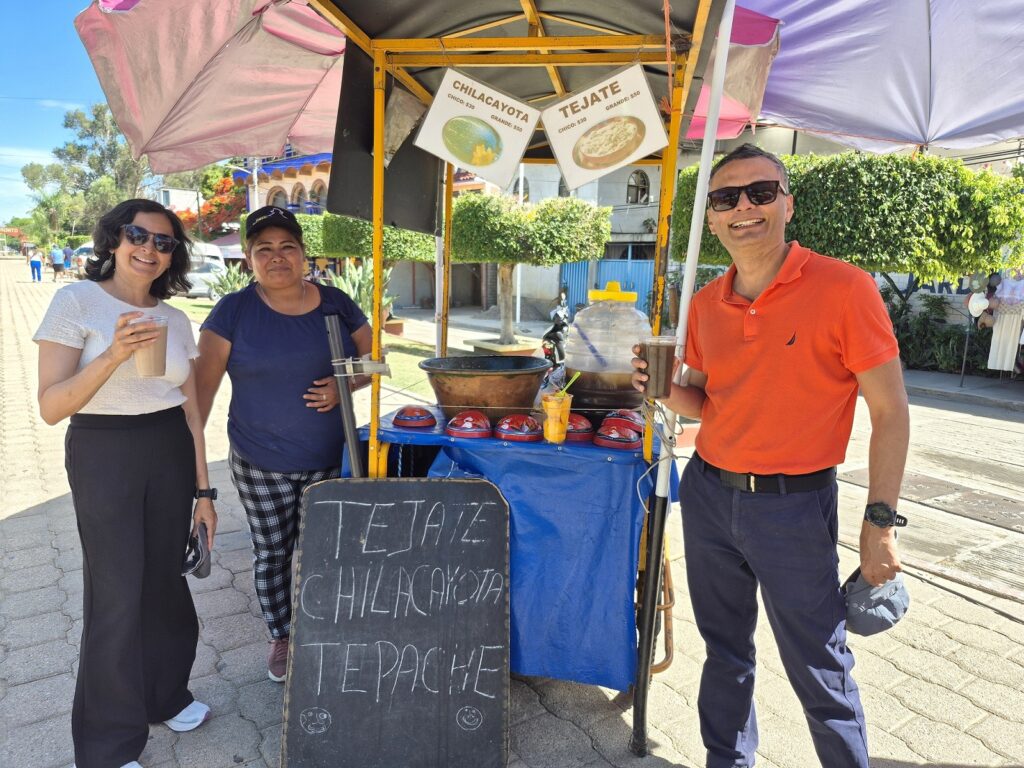
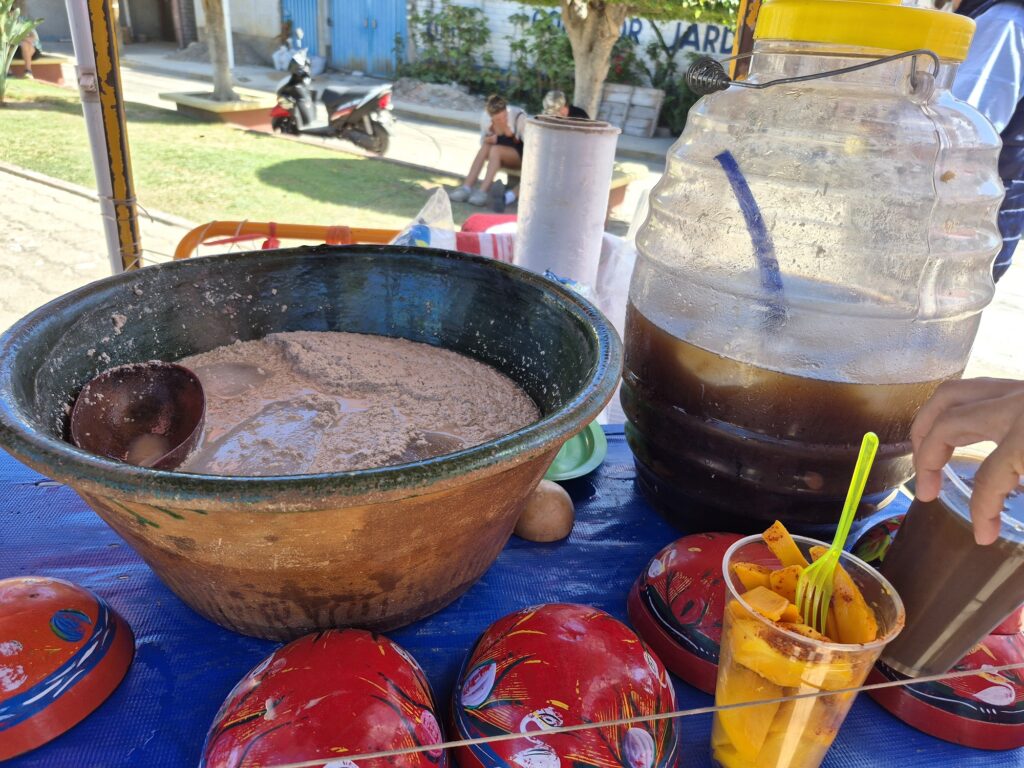
Next, we visited a Zapotec weaving cooperative. Artisans demonstrated traditional techniques, including spinning yarn with a charkha, and dyeing fabrics using natural sources like cochineal insects, indigo, and pomegranate.
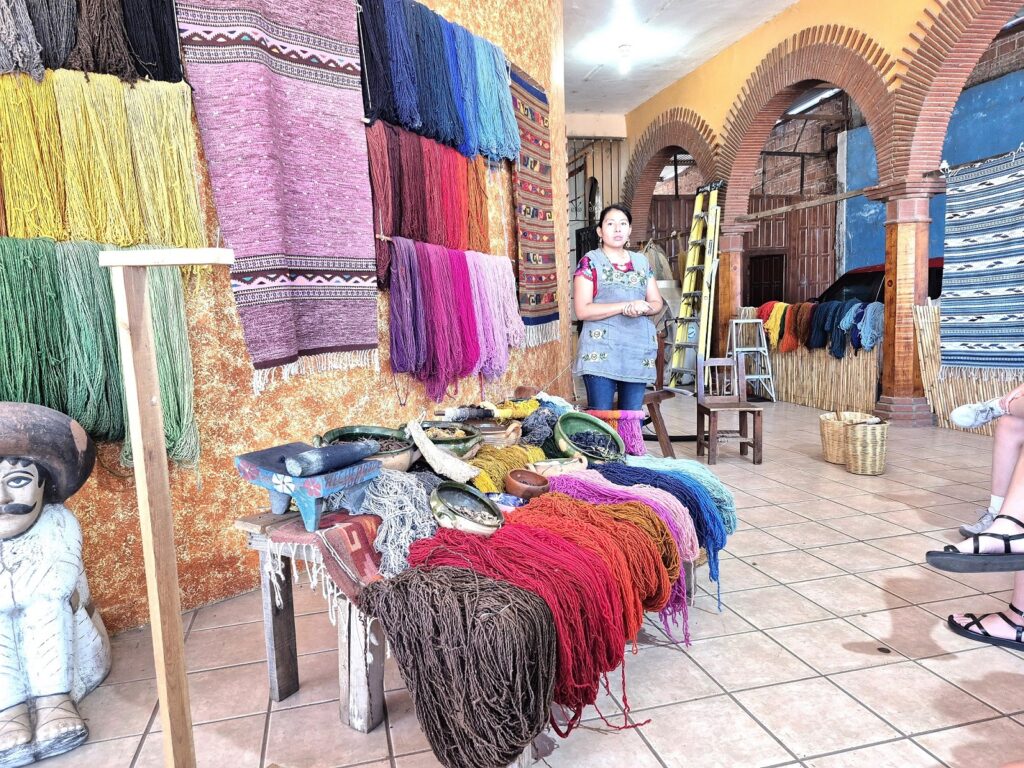
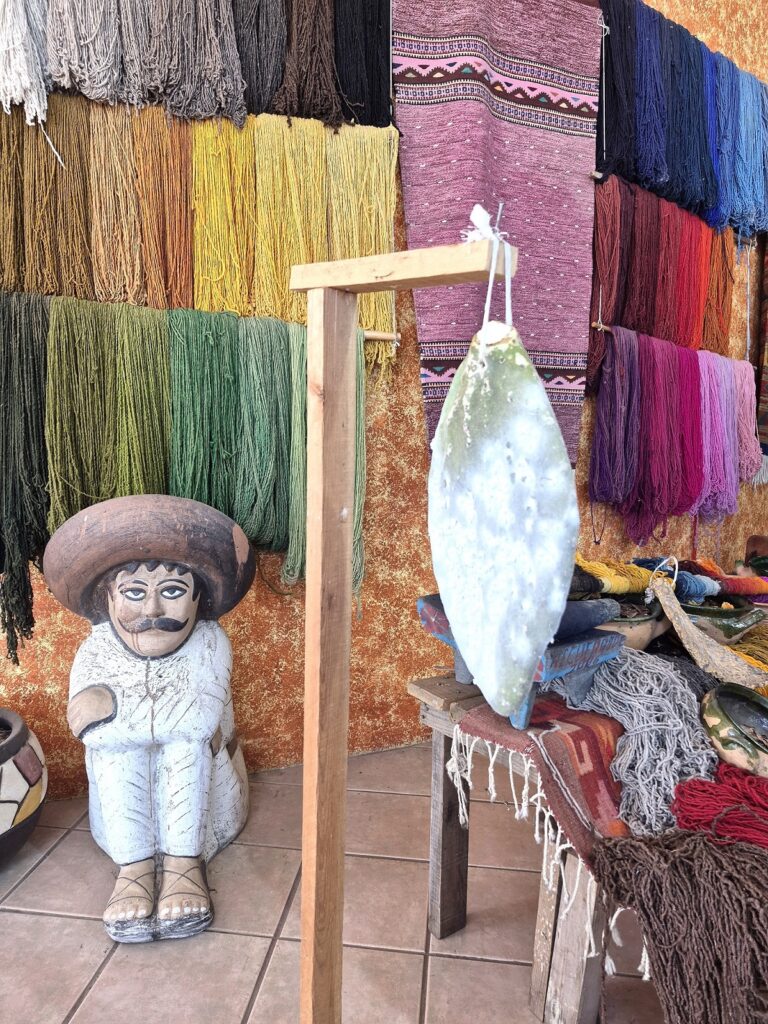
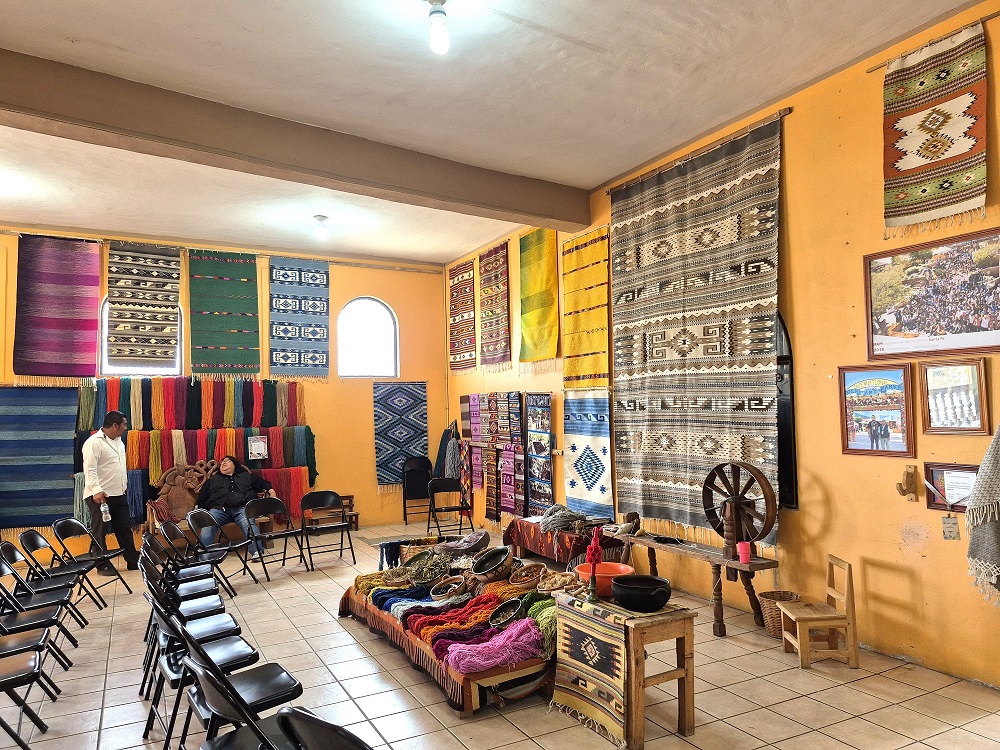
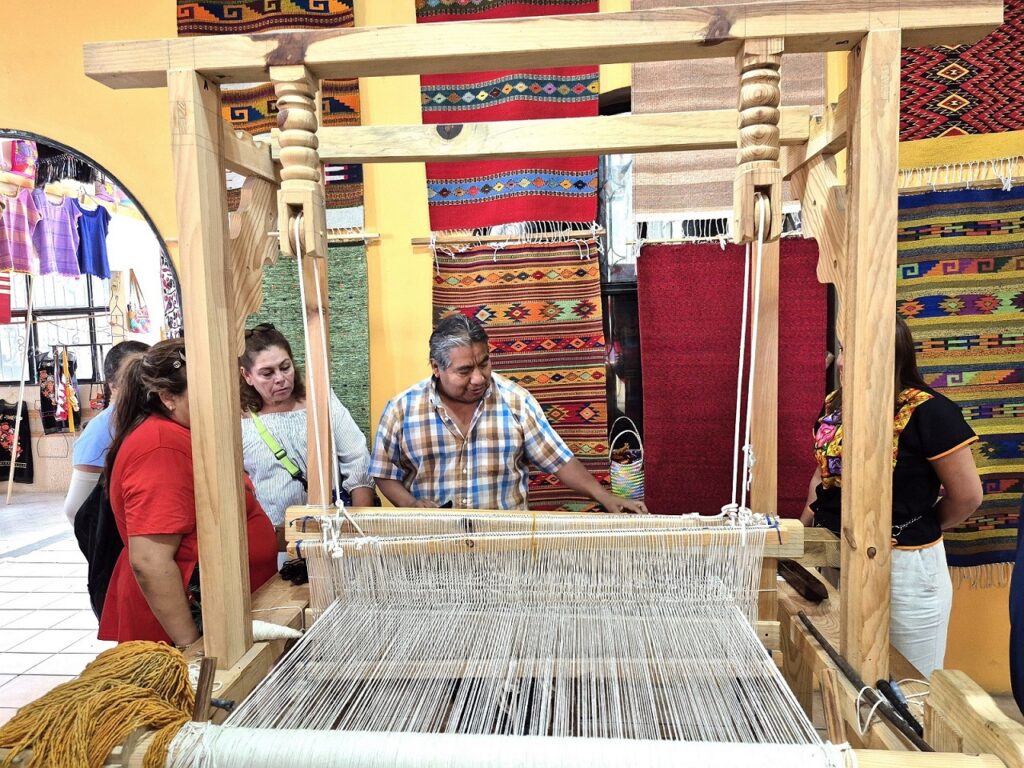

We took some photos with the fellow travelers. There were 13 people in our guided tours. Everyone except us spoke Spanish. Anu and I were the only two English-speaking people. They were curious when we told them we were from India. They were wondering why we had come so far to Mexico.
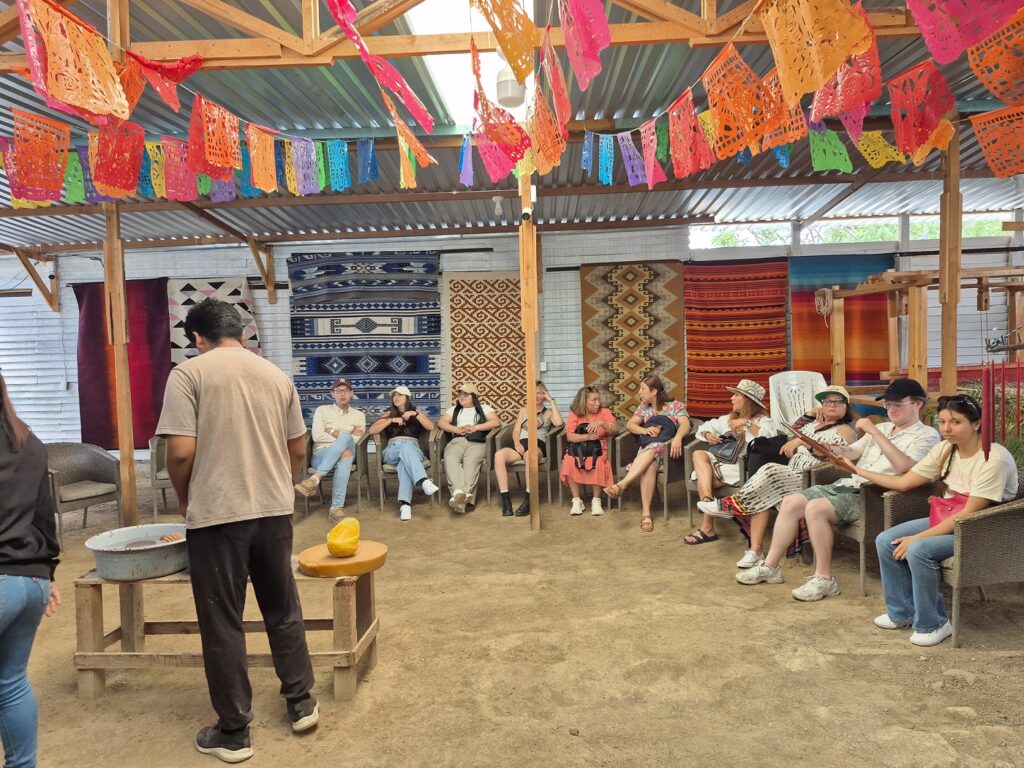
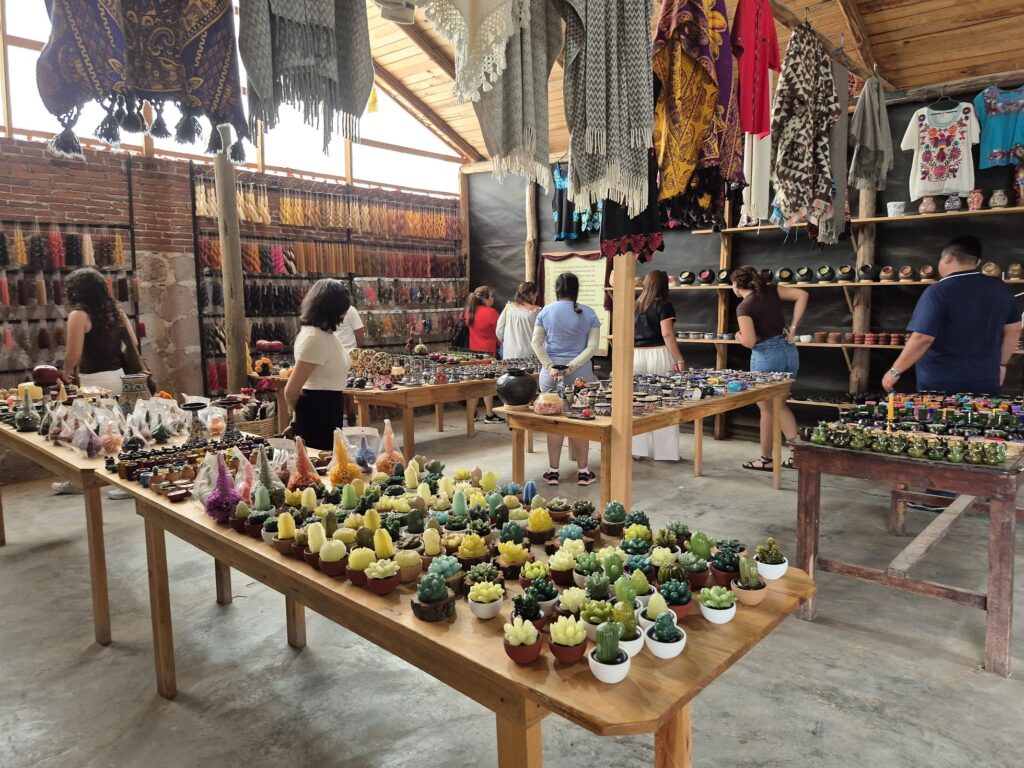
Then, we proceeded to a beeswax-making workshop. They demonstrated how various items are made out of beeswax. It was an ok demonstration, not too great.
Our next stop before lunch was the archaeological site of Mitla, located about 44 km from the city of Oaxaca.
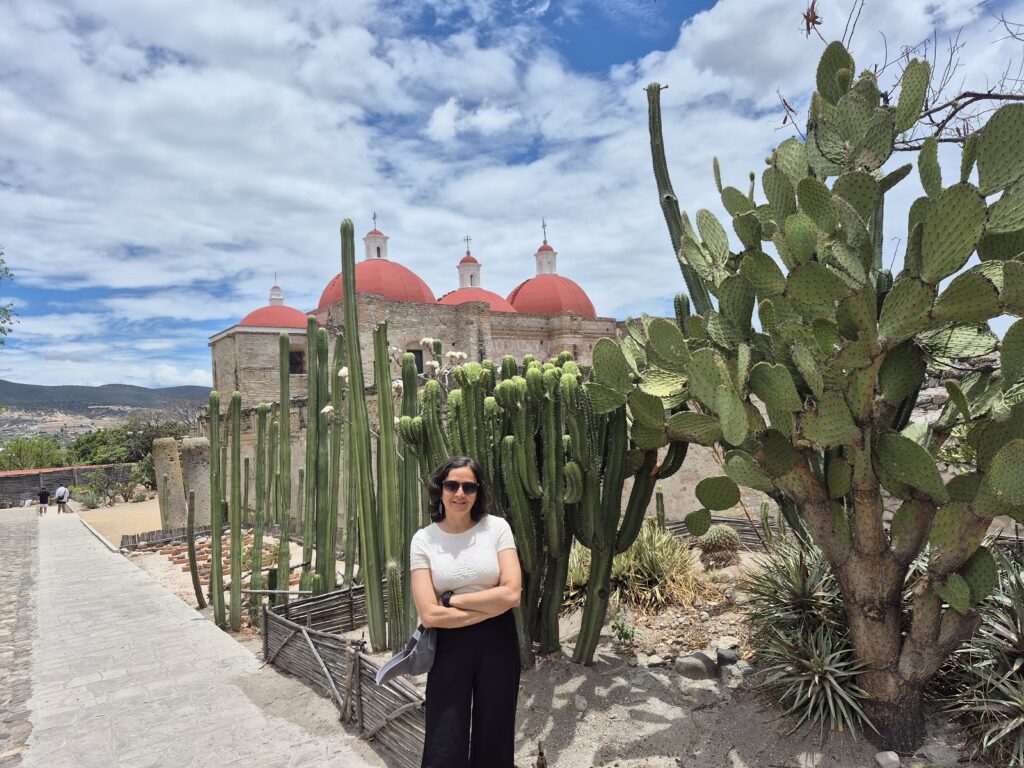
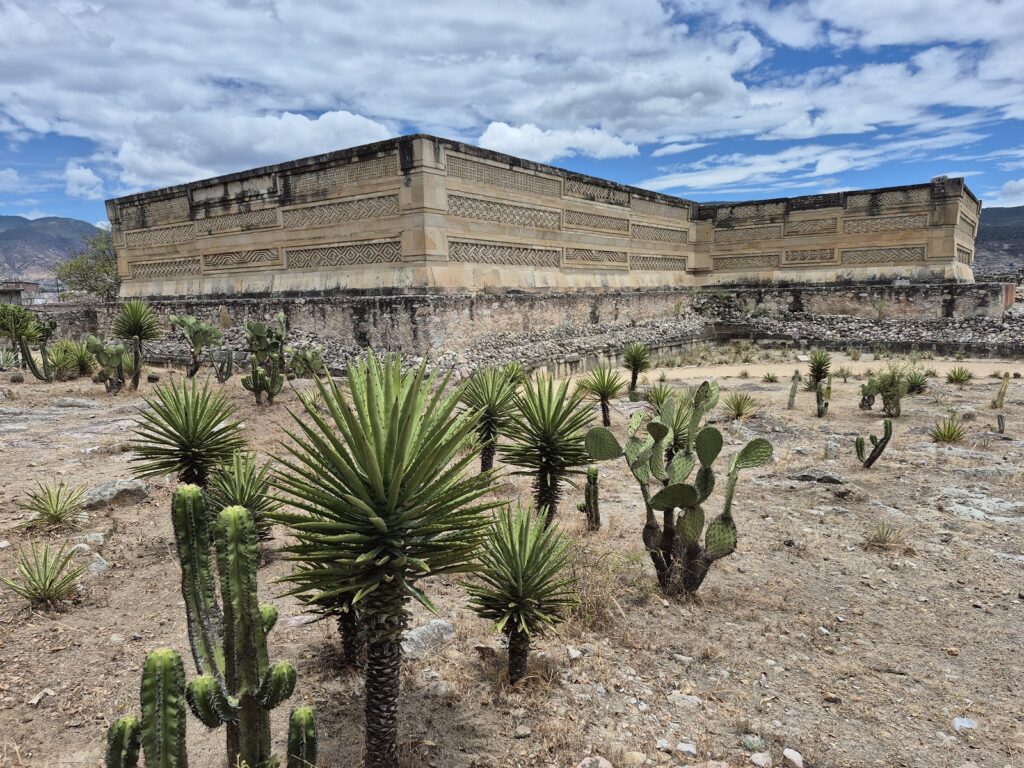
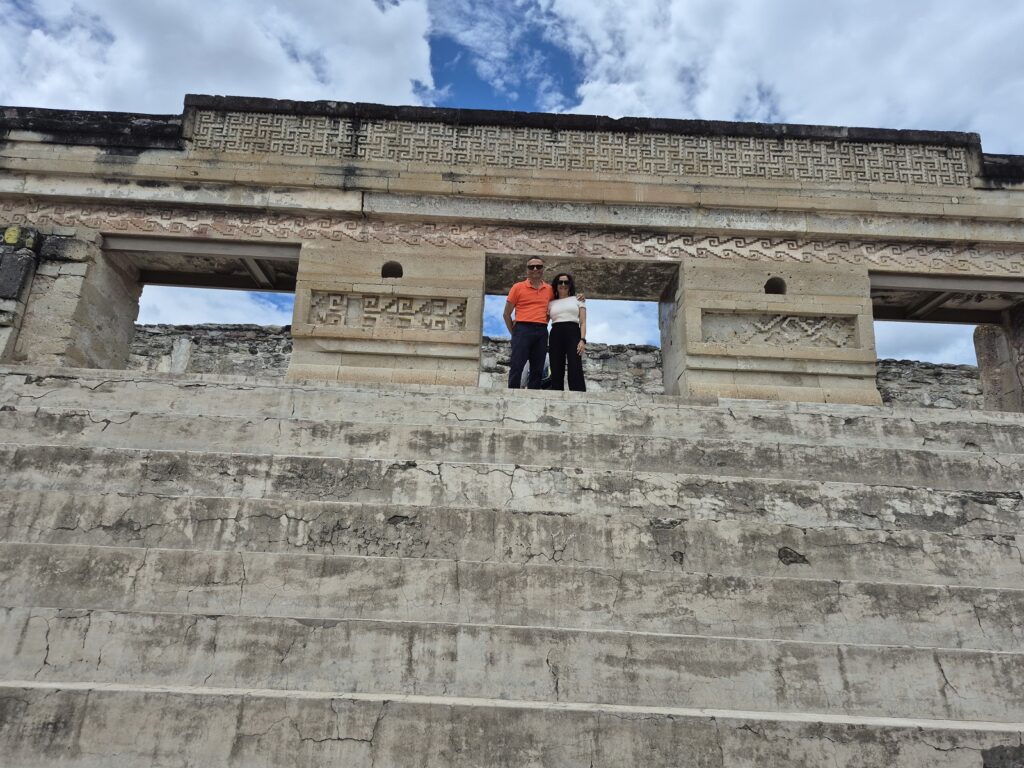
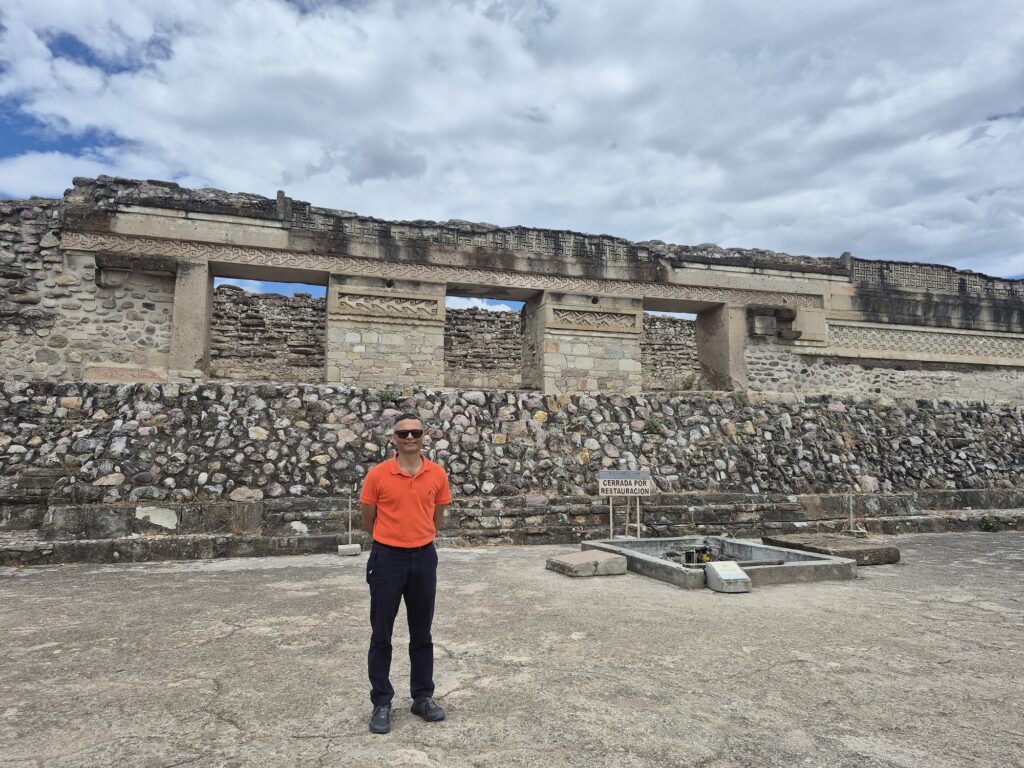
It is considered the second-most important archaeological site in the state, and the most significant for the Zapotec culture. Unlike Monte Albán, which was a political center, Mitla served primarily as a religious and ceremonial site. The site is famous for its intricate geometric mosaic fretwork adorning its walls — a distinctive feature not seen elsewhere in Mesoamerica.
At Mitla, the second-most important Zapotec site after Monte Albán, we explored intricate mosaics, tombs, and columned halls that illustrate pre-Columbian design mastery.
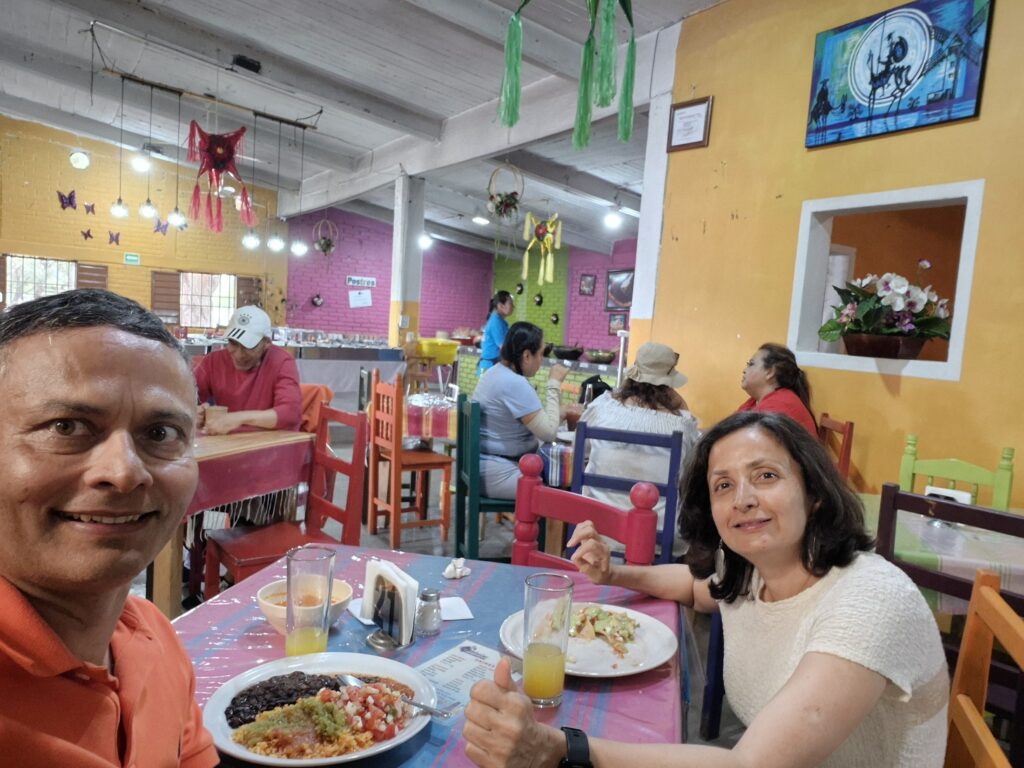
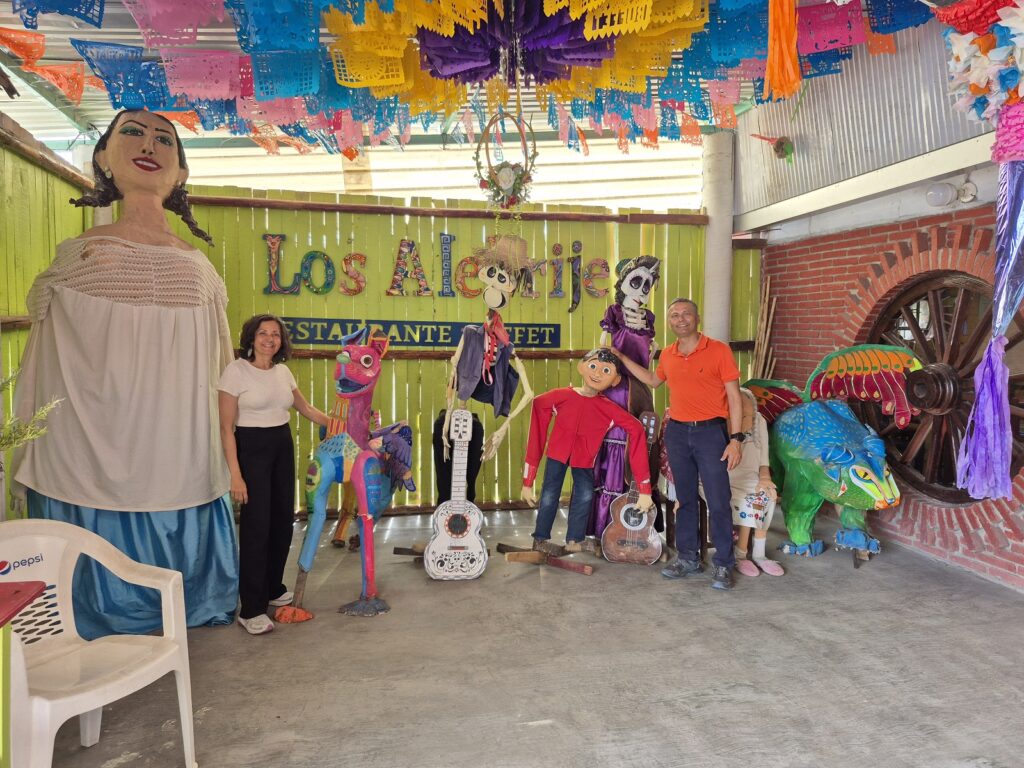
We had a buffet lunch at a designated spot, which turned out to be surprisingly vegetarian-friendly. There were plenty of options, and the fresh salsa was particularly memorable. One highlight was Tlayudas — a crisp, wood-fired tortilla (similar to a chapati) topped with beans, cheese, and cabbage. It was hearty and flavorful, and we truly enjoyed the meal.
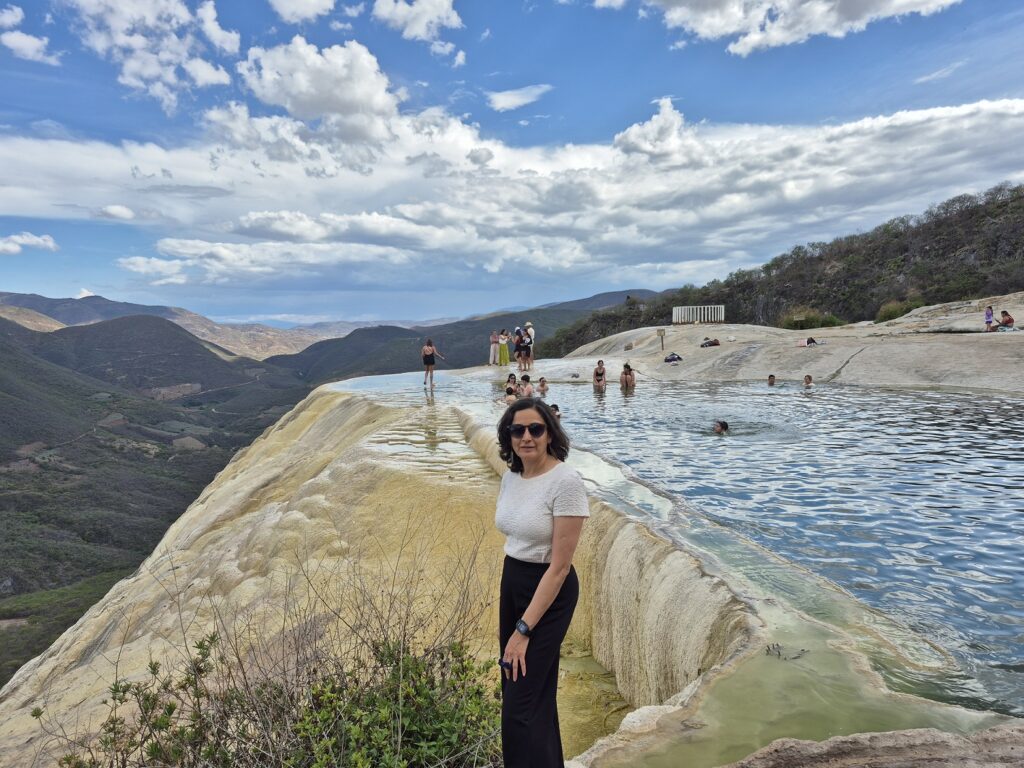
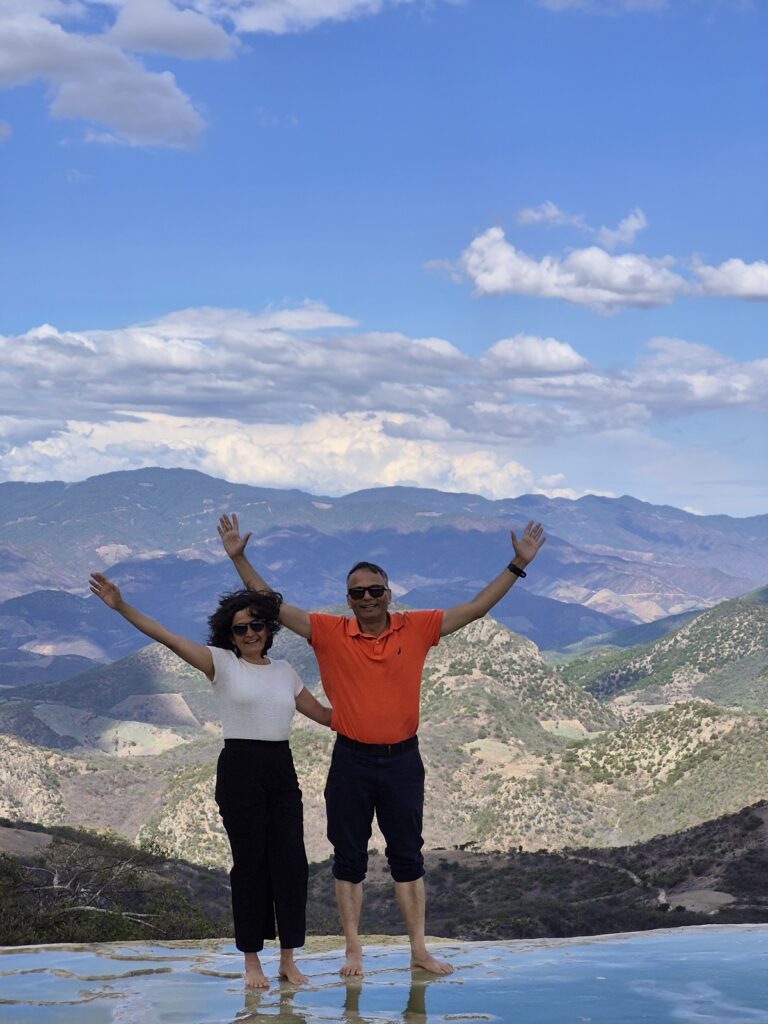
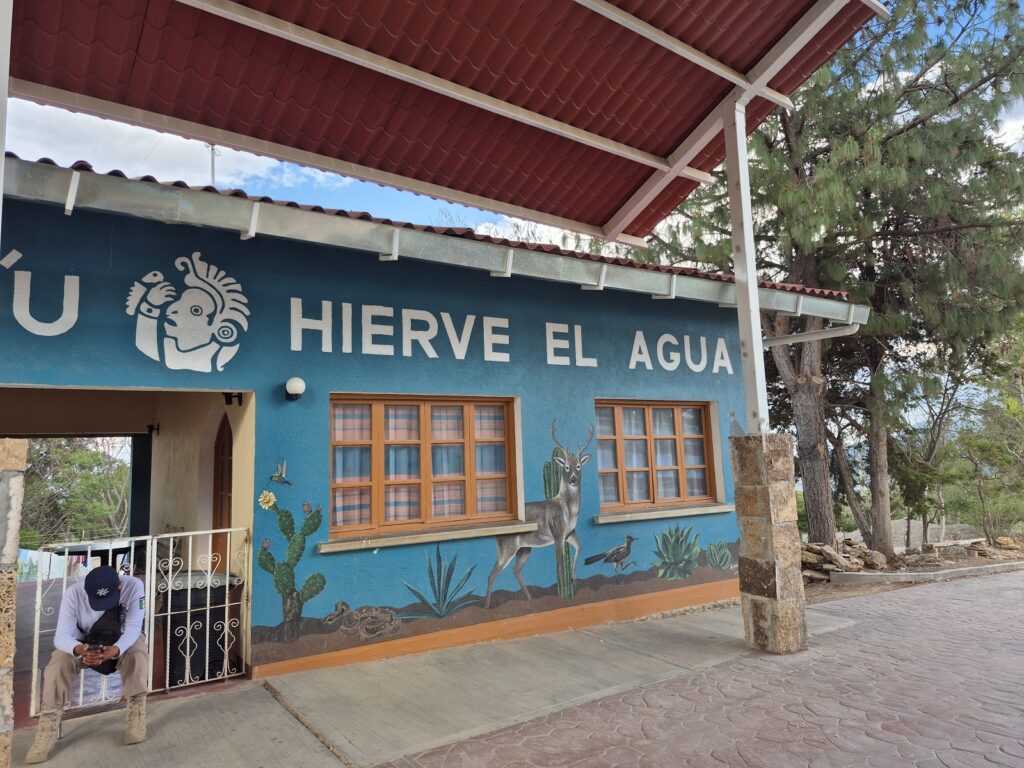
We visited Hierve el Agua. These are petrified waterfalls formed by mineral-rich spring water trickling down cliffs over millennia. The site includes natural infinity pools perched 90 meters above the valley. Visitors can swim here, and the view is truly spectacular. We spent nearly 1.30 hours at this location.
We concluded the day with a mezcal tasting. Oaxaca is renowned for its mezcal, distilled from agave plants. We sampled several types, ranging from 35% to 55% alcohol, noting how aged varieties were smoother.
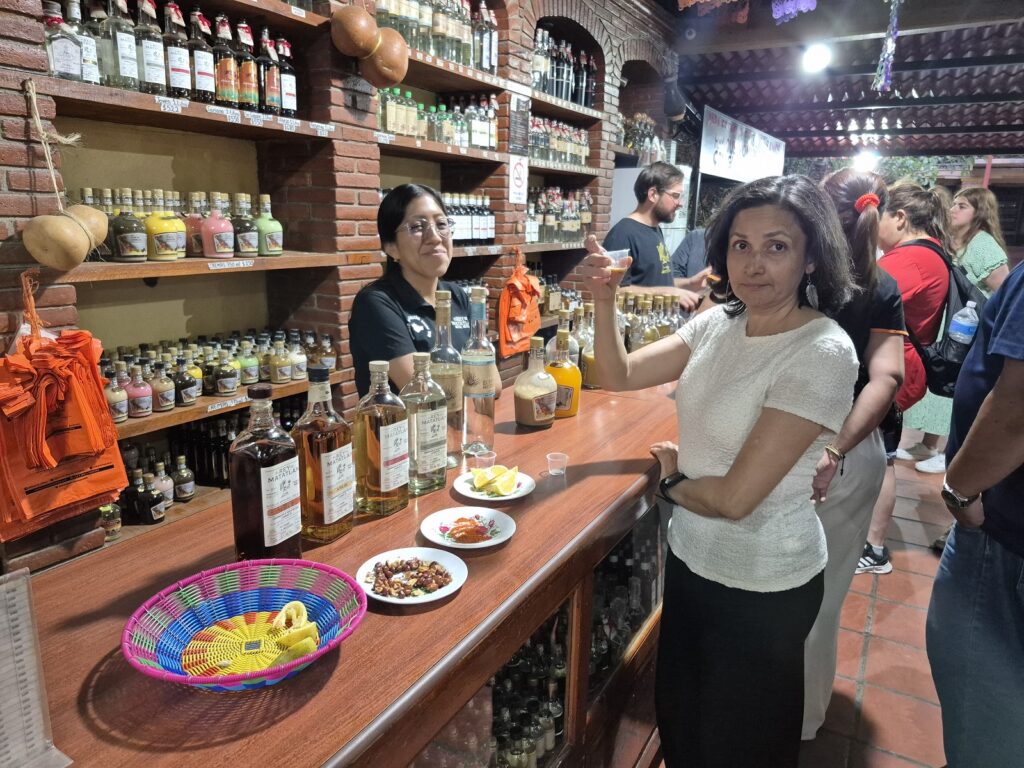
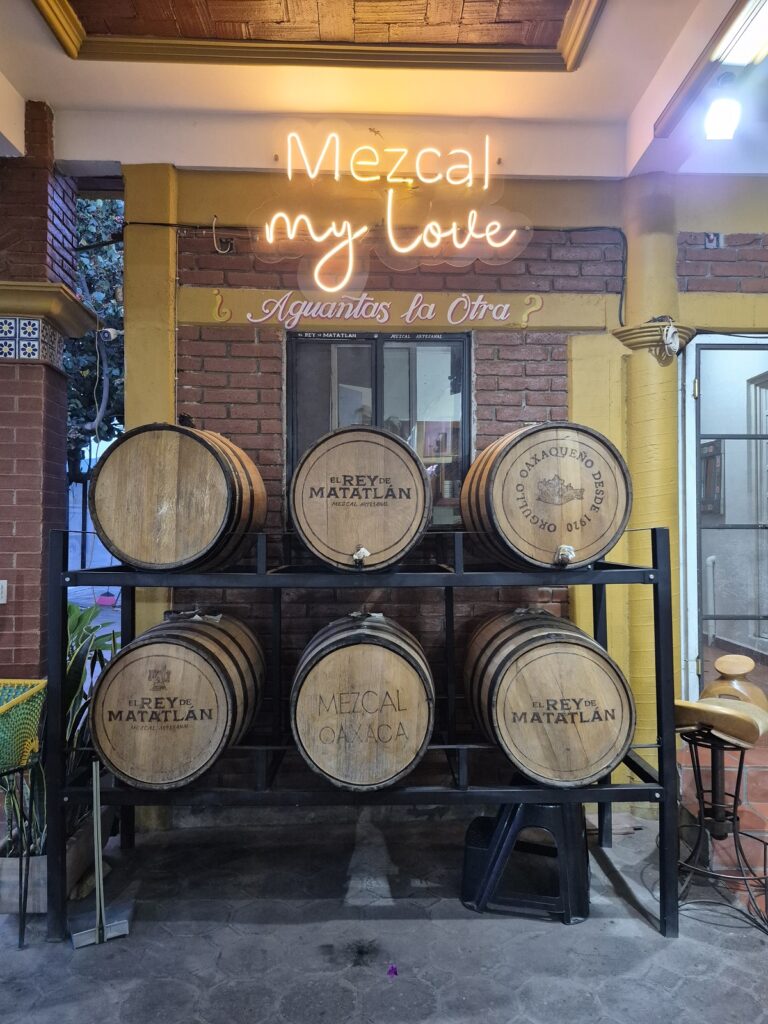
We returned to the hotel by 8:15 pm and slept early.
Day 7: Thursday, May 29 – Cancun
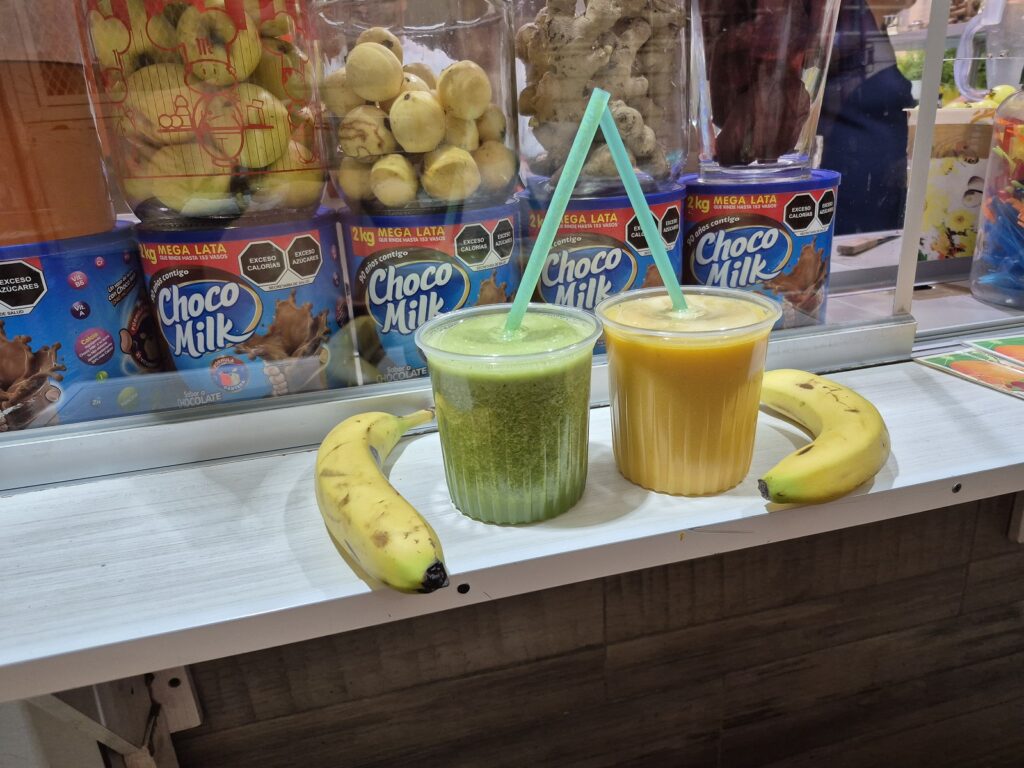
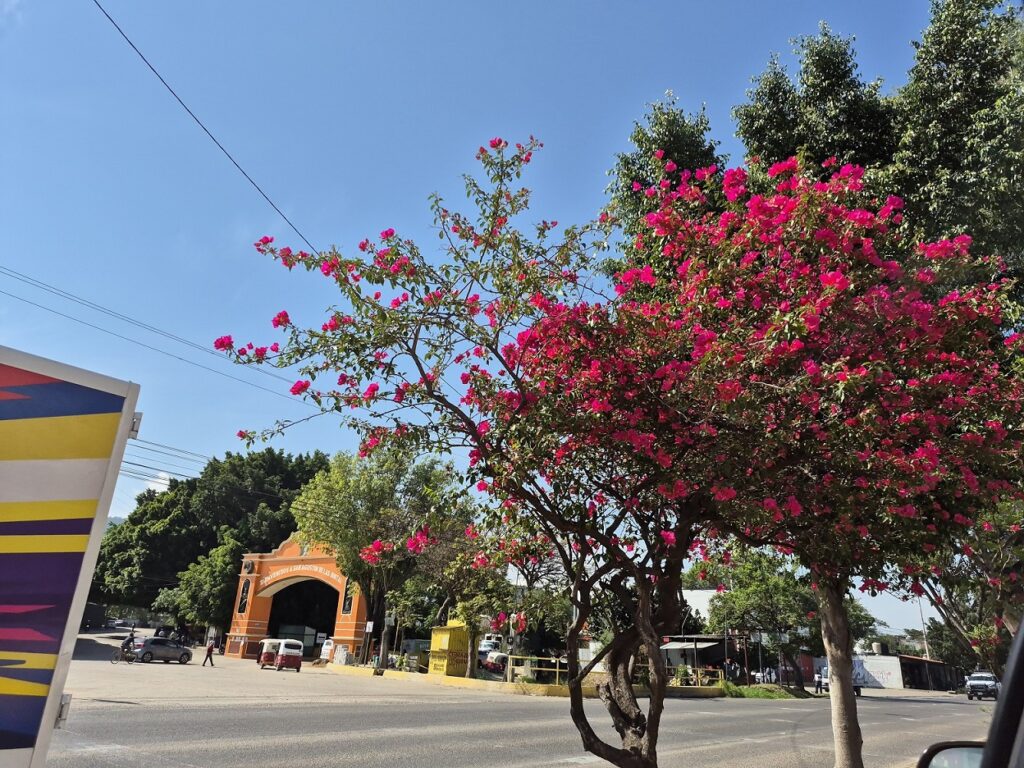
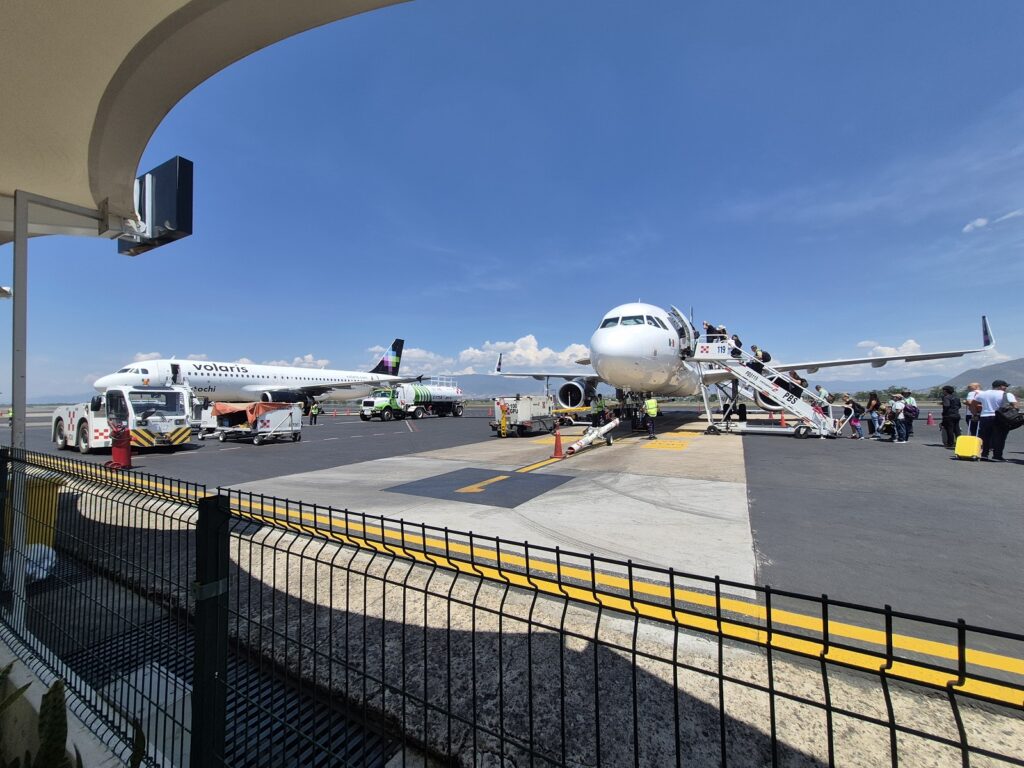
We had a lovely breakfast in Oaxaca — a veggie green juice and a fresh mango-banana-guava blend, served alongside bananas, all freshly made by a local vendor. On the way to the airport, the road was beautifully lined with blooming red and orange bougainvillea trees — a vibrant, colorful farewell from Oaxaca. At the airport lounge, we grabbed a quick bite of nachos and salsa before boarding our 11:11 am Volaris flight to Cancun. Oaxaca is a small airport, but everything went smoothly. We landed in Cancun at 2:15 pm.
Due to local taxi union restrictions, Uber and Didi weren’t allowed at the Cancun airport. We waited for a bus instead of paying for a costly taxi.
We reached Beachscape Villas Hotel around 4:45 pm. Located in Cancun’s Hotel Zone, a narrow strip between the Gulf of Mexico and Nichupté Lagoon, each hotel here has private beach access. All popular hotels are this strip.

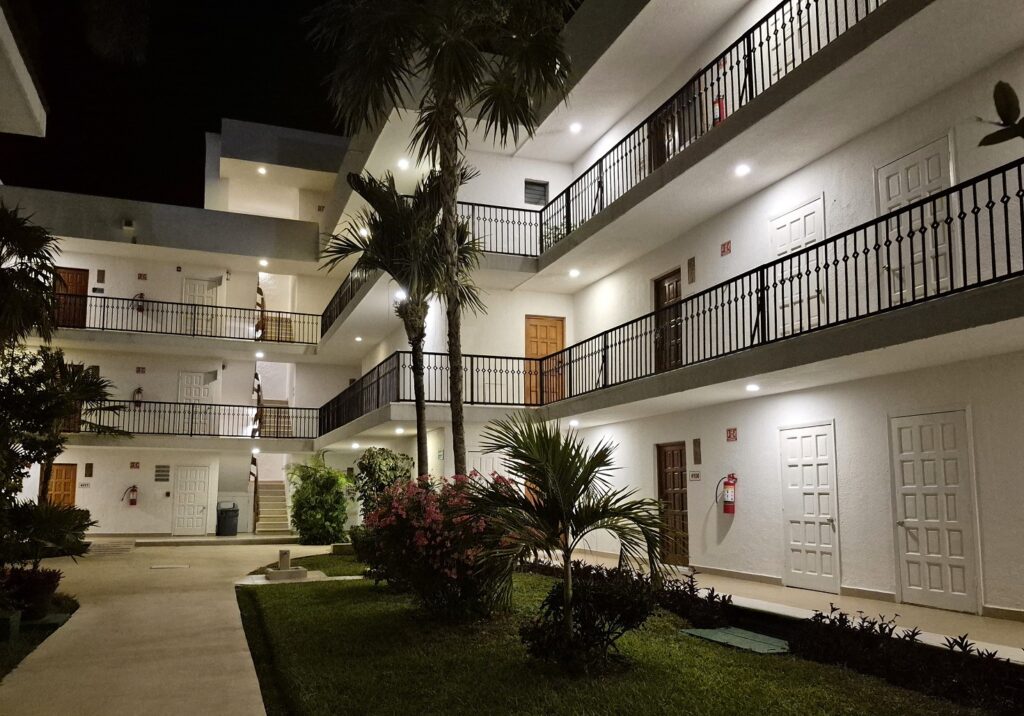
We hit the beach immediately. The water was crystal clear, warm, and stunningly blue.

After drying off, we roamed the Hotel Zone, soaked up the touristy vibe, and dined at a casual Mexican spot with burritos and tacos. Slept by 10 pm.
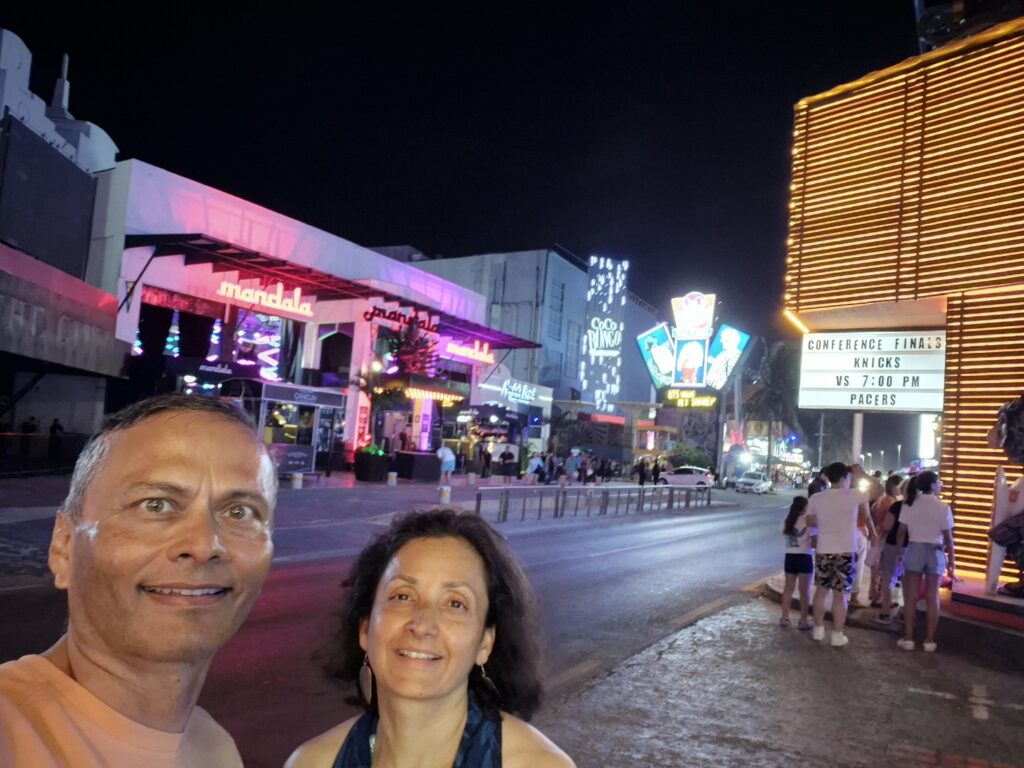
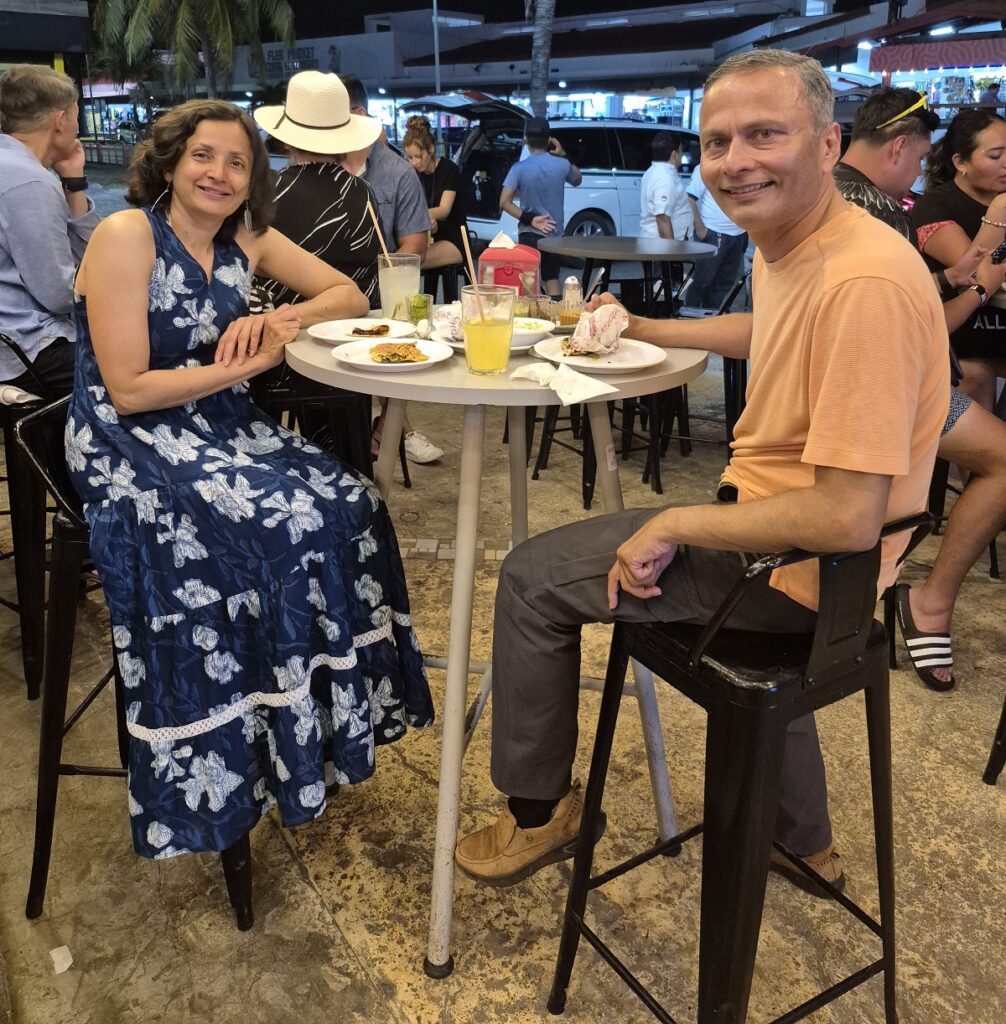
Day 8: Friday, May 30 – Isla Mujeres
We woke up early and returned to the Caribbean Sea for a swim. Having already visited several pyramid sites, we skipped Chichen Itza.
We started the morning with another refreshing dip in the Caribbean Sea — the water was warm, crystal-clear, and simply irresistible. Though we had initially planned to visit Chichen Itza, we decided to skip it, having already explored several impressive pyramid sites like Teotihuacan, Monte Albán, and Mitla.
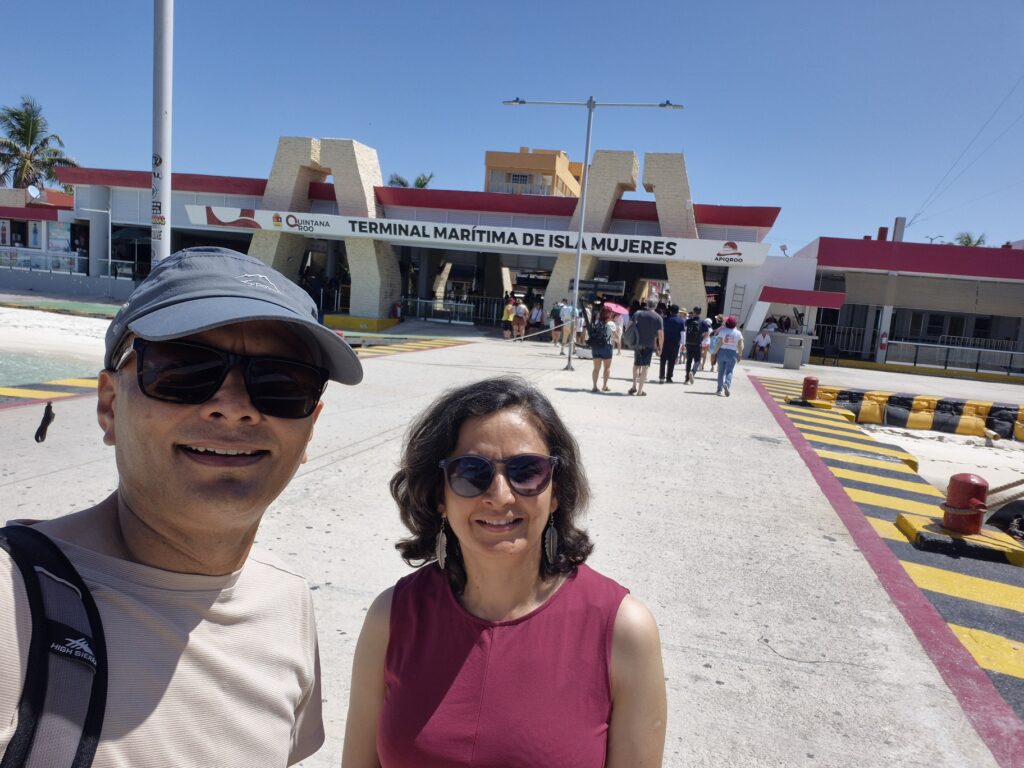
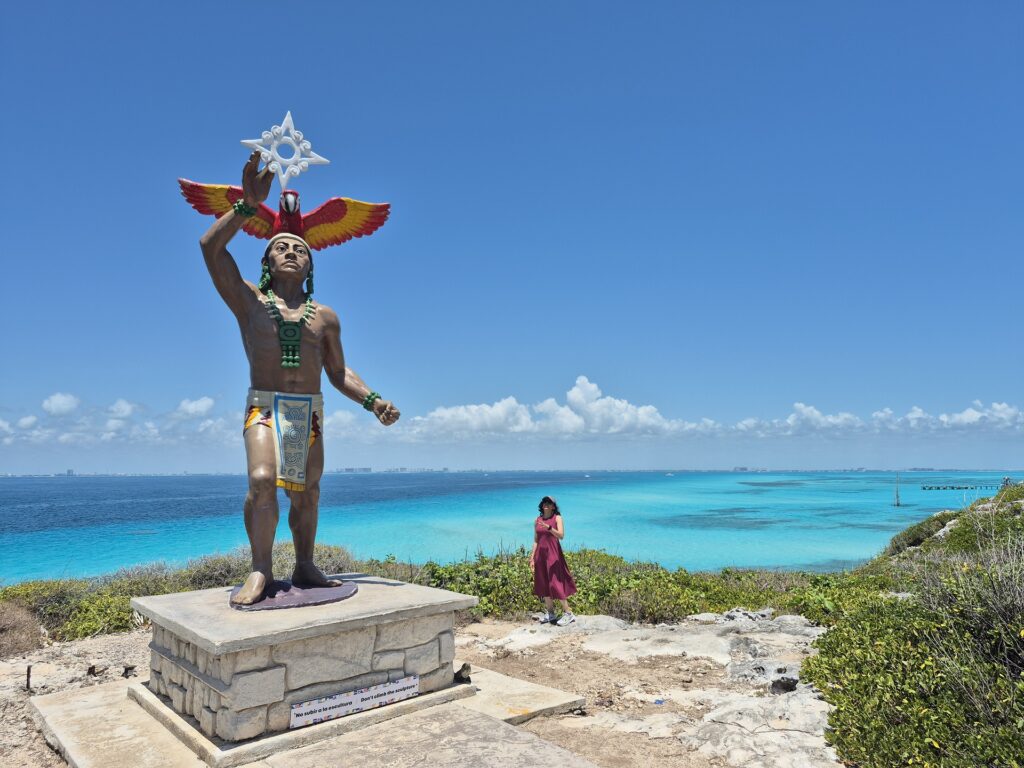
Instead, we took a ferry to Isla Mujeres, or “Island of Women,” a short 25-minute ride from Cancun. The island is named after Ixchel, the Mayan goddess of the moon, fertility, and medicine. As we crossed, the vivid turquoise waters of the Caribbean were mesmerizing.
Once on the island, we boarded a public bus to Punta Sur, the southernmost point. This scenic spot features a clifftop sculpture park and stunning coastal views. Despite the sweltering midday heat, the beauty of the area was breathtaking.
We learned that Punta Sur is considered sacred to the Maya and is where offerings were once made to Goddess Ixchel.

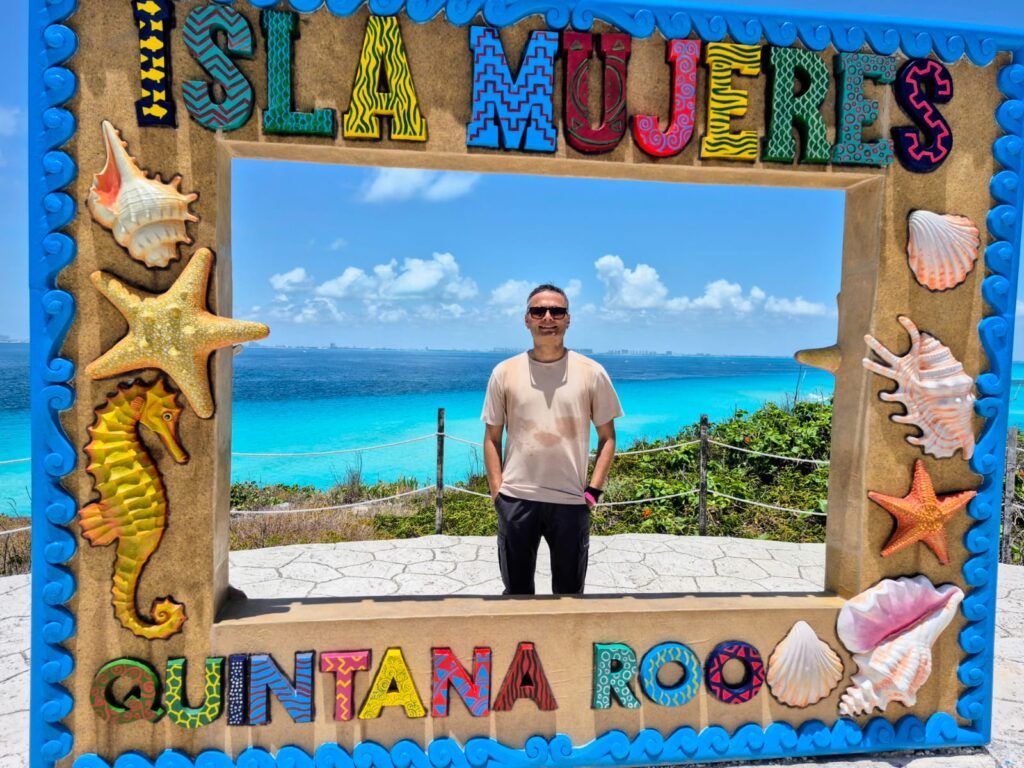
While continuing our walk along the coast, we unintentionally reached Garrafón Park, a natural reef park famous for water activities and panoramic views. Though the entry fee was steep (USD $90), we were lucky to get a glimpse of the park’s lush landscape and coastline without a ticket.
From there, we took a taxi to Playa Norte, the northern tip of Isla Mujeres. First, we cooled off with a relaxing lunch of burritos and Margherita pizza at a beachfront Mexican restaurant. We then explored several beaches including Playa Caracol and Playa Centro, before catching the 4 pm ferry back to Cancun.
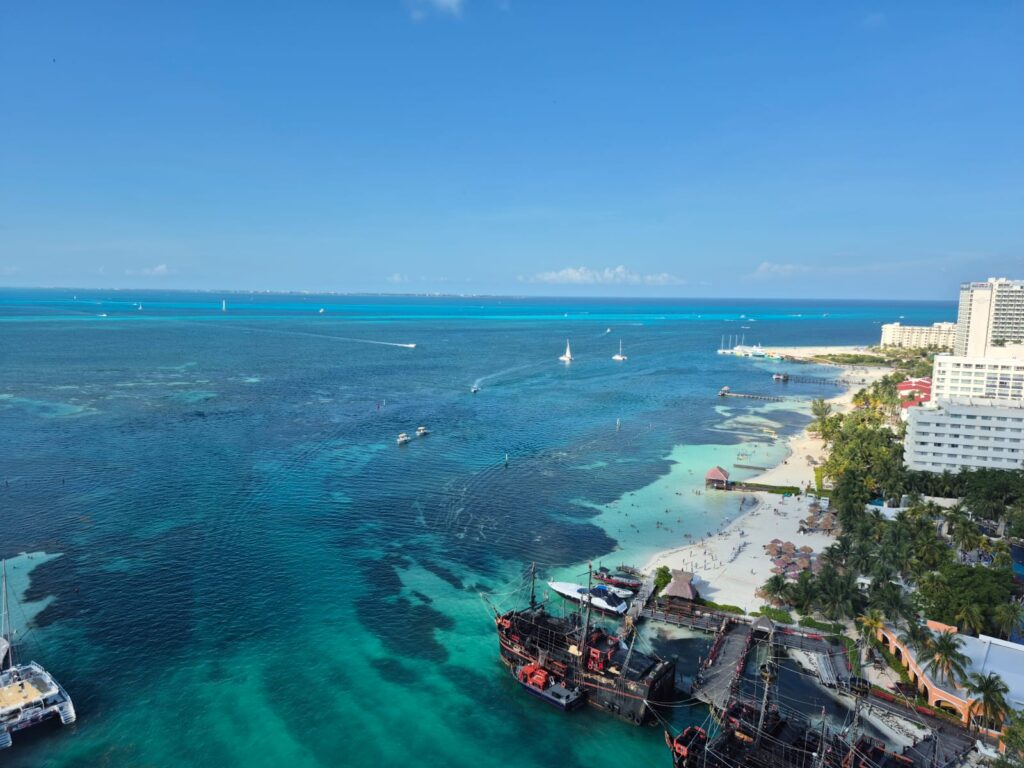
Before returning to the hotel, we visited the Scenic Tower Cancun — a slow-rotating observation deck rising 263 ft above the ground. It gave us a 360° view of Cancun’s coastline and lagoon, a perfect way to end the day. Back at the hotel by 5:30 pm, we couldn’t resist yet another sunset swim in the Caribbean.
Dinner was Domino’s Pizza, delivered to our room — simple and satisfying after a long, adventure-filled day.
Day 9: Saturday, May 31 – Departure
We took one final walk along the beautiful Cancun beach in the morning. Our flight back to Washington DC was scheduled for 11:53 am from Cancun to Baltimore. We left the hotel by 9 am and arrived at the airport by 9:30 am, marking the end of an unforgettable trip to Mexico.
